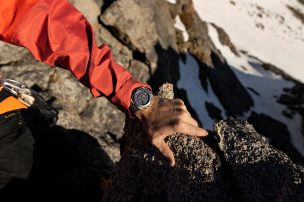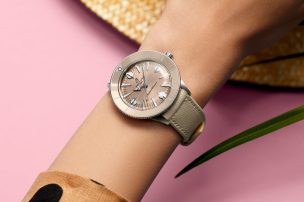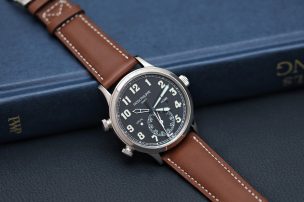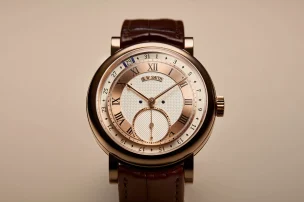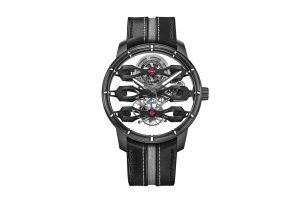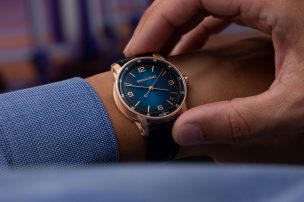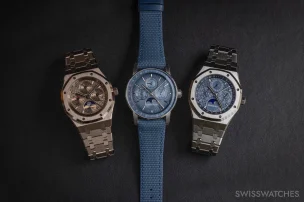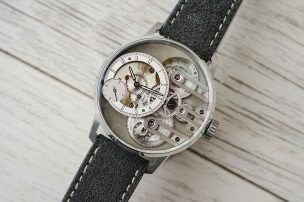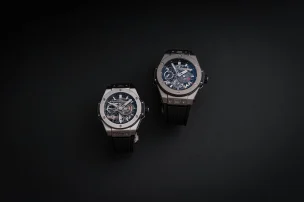
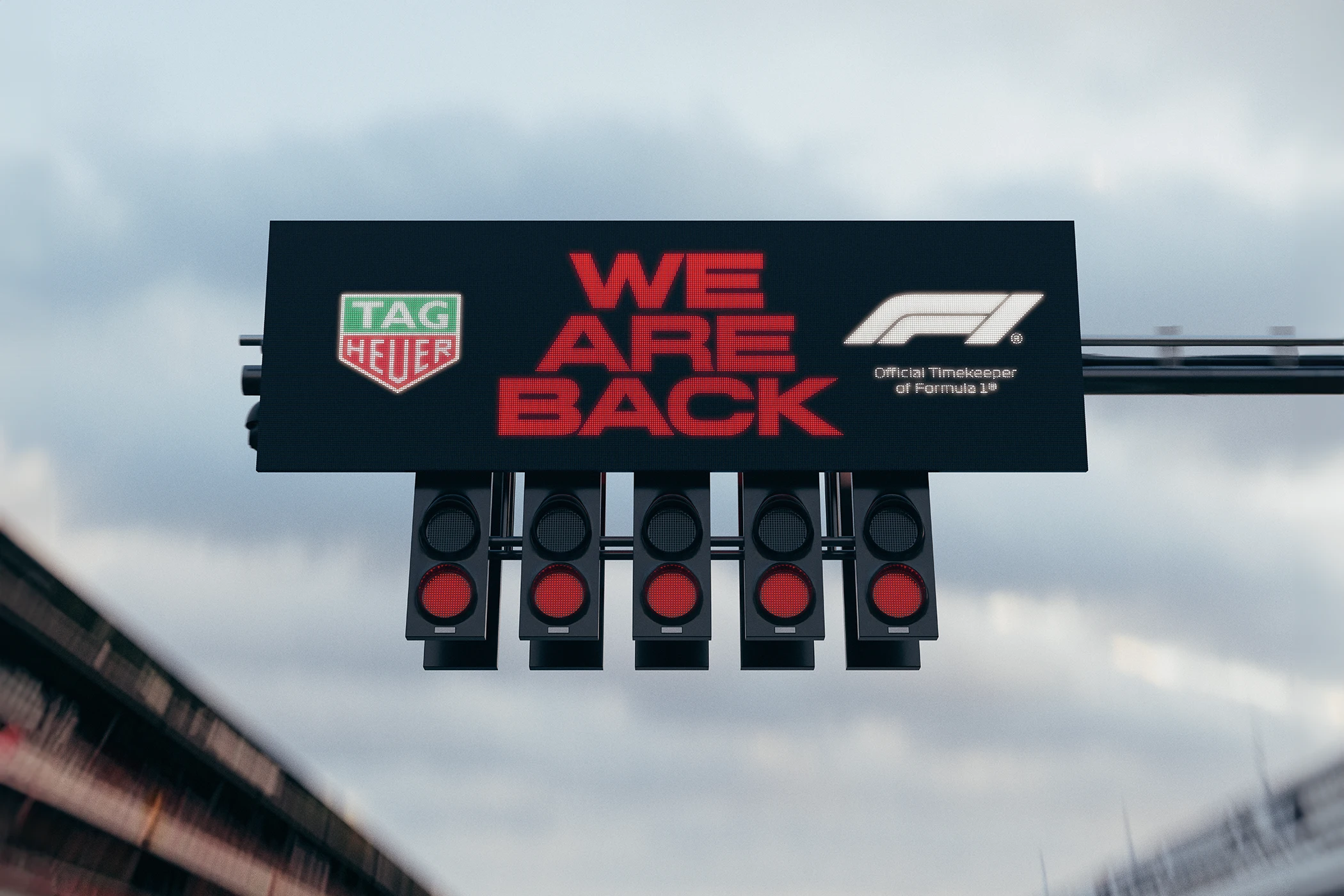
The Time is Ripe For Change: What Can we Expect in The Watch Industry in 2025?
The most important company and watch model anniversaries in 2025 and a (critical) look at the watch industry this coming year.
Normally, we like to hold back on speculation at Swisswatches – and for good reason. The watch industry and the pre-owned watch market have experienced a surge in attention over the last five years, particularly as a result of the pandemic, that even many experts would have considered completely unthinkable a decade ago. Regardless, former LVMH watch boss Jean-Claude Biver was right when he said in an interview that the pandemic had catapulted the digitalisation of the watch industry ten years forward and, of course, its visibility. And as is always the case when an industry generates fantastic returns with new products on the one hand, and collectors can celebrate record sales of pre-owned models on the open market or at auctions on the other, many charlatans and self-proclaimed saviours awaken – and these days, they are joined by numerous analysts and top consultancies who believe they understand what really makes this industry tick. Quite apart from the media’s social media and YouTube overkill in reporting, we are trying to take a more realistic look at this topic. There’s no doubt about it: it’s hard to get a truly uniform picture at the moment. The market is currently very divided.
PART 1
What will 2025 bring for the watch industry?
The pre-owned watch market has collapsed, the new watch market has stagnated, only the auction houses celebrated records again in 2024: Forbes reported on some important ones at the end of December – for example, a Breguet No. 3218 from 1935 sold for CHF 1.92 million at Christie’s Rare Watches Auction in Geneva in November, which was well above the low estimate of CHF 100,000. In December, Steve McQueen’s Heuer Monaco was sold at Sotheby’s in New York for 1.4 million dollars, far exceeding the estimate of 500,000 to 1 million dollars. Sylvester Stallone’s Patek Philippe Grandmaster Chime realised 5.4 million dollars at a Sotheby’s auction in June, setting a record for a new timepiece on the market. Forbes sees the contrast between falling secondary prices and flourishing auctions as a turning point in the luxury watch market. The speculative buyers who dominated the market during the pandemic are withdrawing and making way for genuine enthusiasts and collectors, which we expressly welcome. However, with the recent records, we are also talking about collectors who know what they are doing: for Forbes, the success of the recent auctions in Geneva and New York only goes to show that the demand for unique and historically significant watches is undiminished.
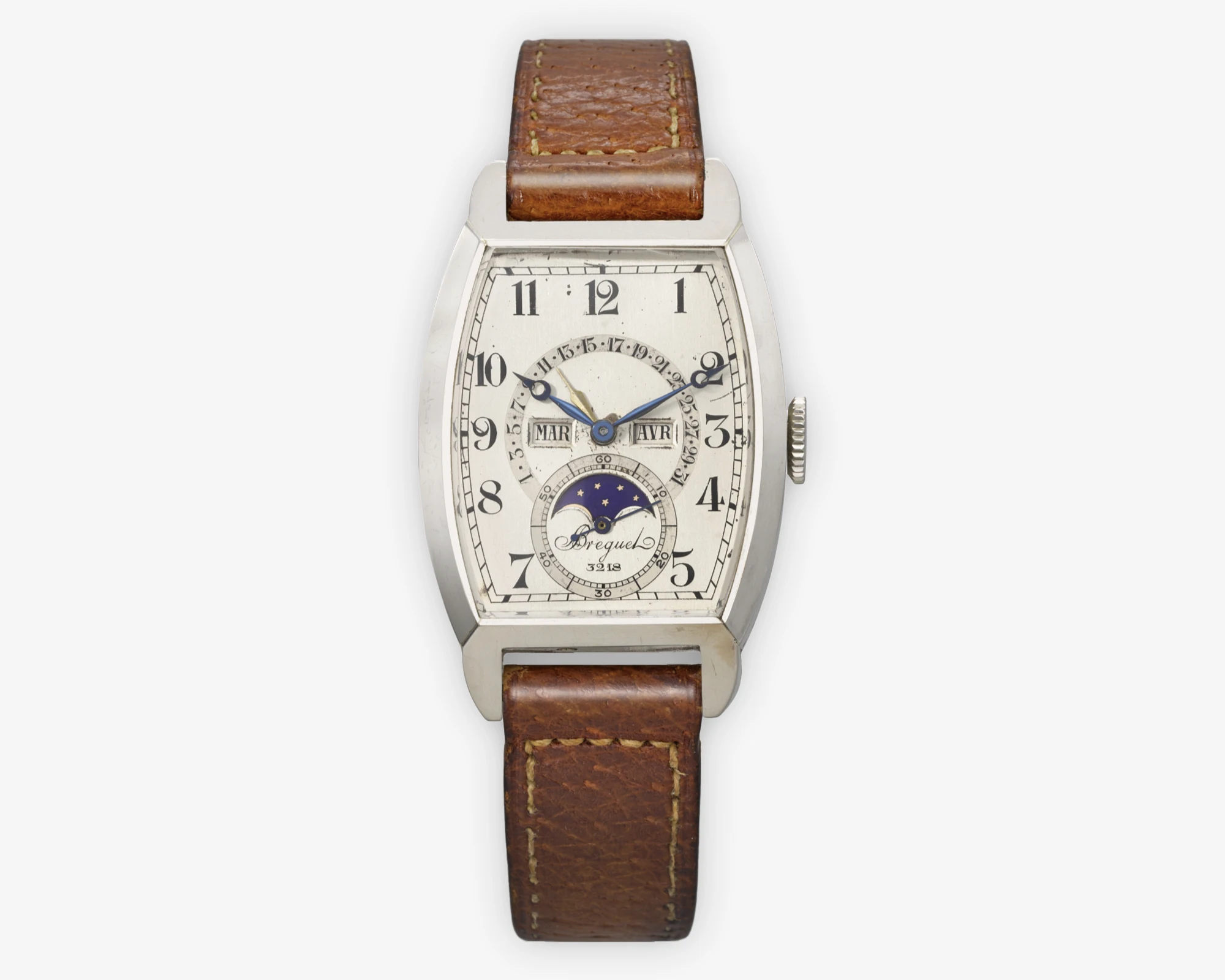
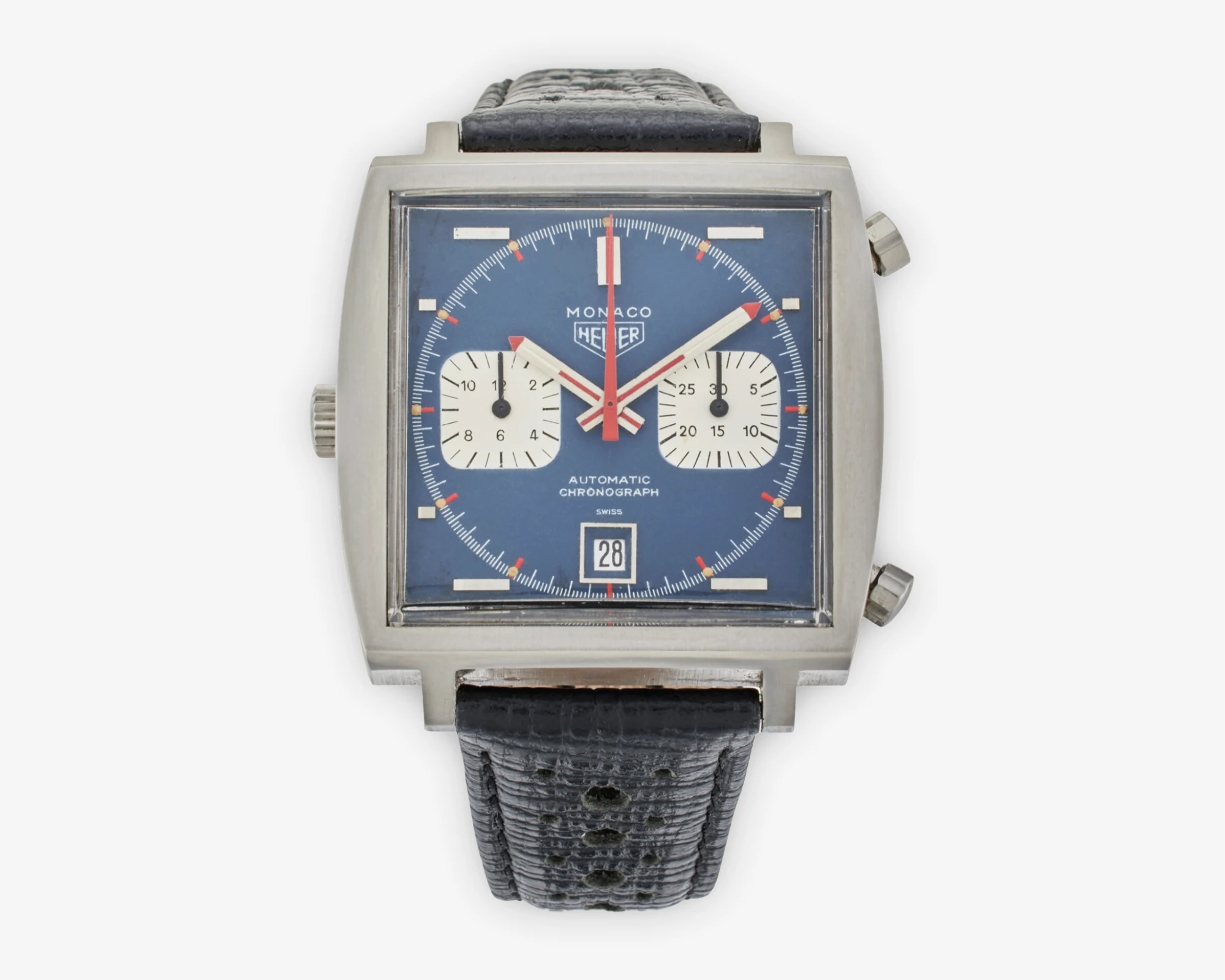
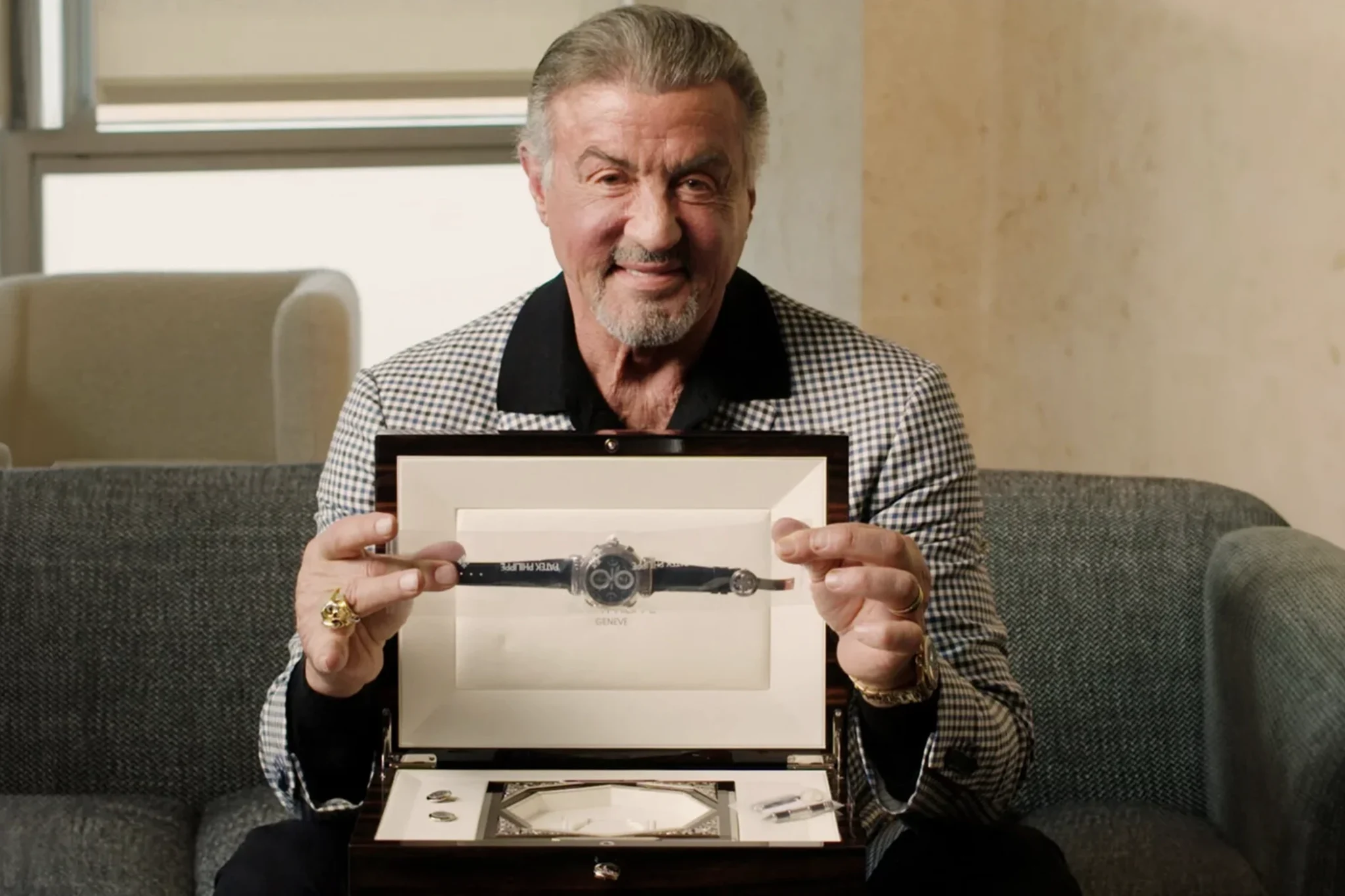
Credit © Christie’s / Sotheby’s
After years of never-ending success, this special sector of the new watch industry with its very own rules is at a turning point. Why? Rolex is still likely to be one of the big winners in 2024, as sales remain strong and waiting lists in the UK, the rest of Europe and America have hardly got any shorter. Rolex, Patek Philippe, Audemars Piguet and Richard Mille are also likely to gain market share as their watches attract more than just watch enthusiasts for their most popular timepieces, and despite the privately owned companies not reporting financial results. Listed companies LVMH, Richemont and Swatch Group have all reported declining watch sales for the first three quarters of 2024. China has slumped radically in some cases. And this will have an impact, as these companies simply cannot afford not to satisfy their shareholders.



There is much speculation amongst experts about the effects of the sales crisis
Many questions are circulating in the industry: are Chinese customers returning? Is trading in pre-owned watches the solution to the global sales slump? Yes, even the comeback of quartz watches is being discussed (please, no!). Everything seems conceivable at the moment, but one thing will probably no longer work in the future. Business as usual.
The Swiss watch industry has halved its exports in ten years
In the last ten years, as my colleague Robin Swithinbank wrote in an article for the financial journal Wirtschaftswoche in Germany in November 2024, the number of Swiss watch exports has halved. Why did nobody care? Because the value of the exported watches more than makes up for this loss in numbers. So everything is fine? On the one hand, the flourishing market with ever higher-priced top brands lacks new blood. On the other hand, there is an eroding, increasingly competitive entry-level market, especially in the mechanical watch sector. At Swisswatches, we generally leave quartz out of the equation.
At what price point do new watch customers turn away from mechanical watches?
Of course, we know that many brands earn good money with quartz watches in particular. That’s perfectly okay, but they are largely irrelevant for collectors and the increase in value that they are happy to accept (largely because there are, of course, Swatch and G-Shock collectors, for example). If prices in the mechanical entry-level segment continue to rise, young customers in particular may ask who they want to impress with an increasingly expensive mechanical Swiss entry-level watch that is not even part of the ‘relevant set’ in order to be taken seriously by collectors.
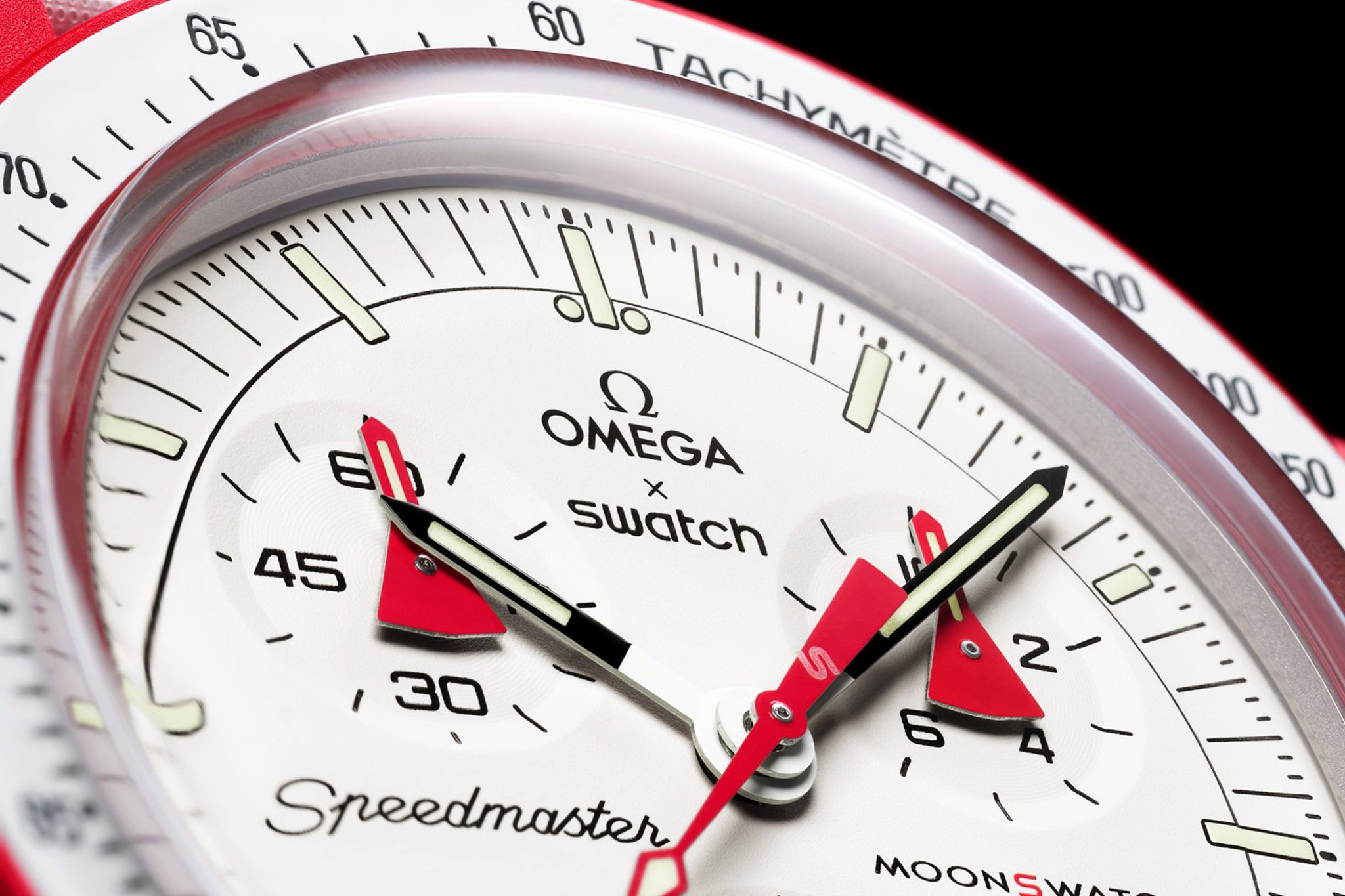
This only becomes a problem when more and more younger people are no longer interested in more expensive mechanics after their first smartwatch or quartz watch, because the leap to a 6,700 euro entry-level Rolex (without date) is no longer feasible at some point, even for high earners. Or, they simply ask themselves the question: do I really need this for myself and does the model offer me more than just impressing others with it? My concern is that the industry’s predictions from the past ten years may no longer hold true. At some point, adult customers might not switch from smartwatches to mechanical ones, especially with models like the Apple Watch Ultra offering more and more features that were once exclusive to fine mechanical watches (such as water resistance over 200 metres and a power reserve of up to a week, which no longer seem unrealistic). Also, I grew up with analogue, not in a completely digital world like Gen Z.
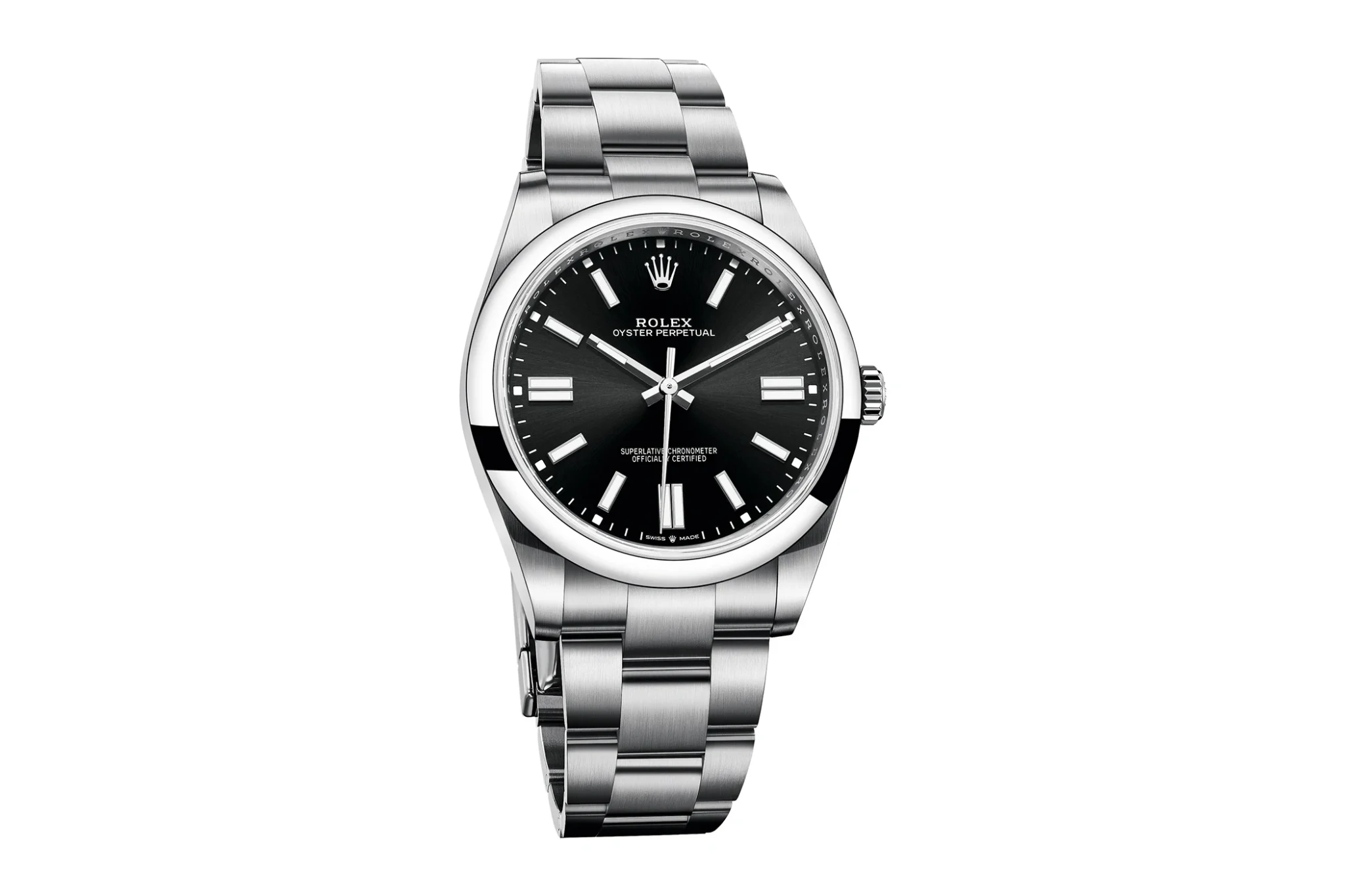
Telling stories – especially your own
Don’t get me wrong, I love mechanical watches because each one contains a piece of human history or a piece of eternity, as the aforementioned Jean-Claude Biver once put it. Mechanical watches embody human values such as precision, creativity, perseverance and a desire for perfection and our desire to understand things. Therefore, in my opinion, in 2025 it will be even more important for companies to define their own values and tell their own brand story. Not only to charge mechanics with a sense of status for young people, but also to make it credibly clear to customers that, as a user of mechanics, you also become part of a world that you can literally grasp and that brings people together across generations. This is precisely what many young people long for: to feel comfortable in an increasingly fast-paced world in which hardly anything seems reliable.
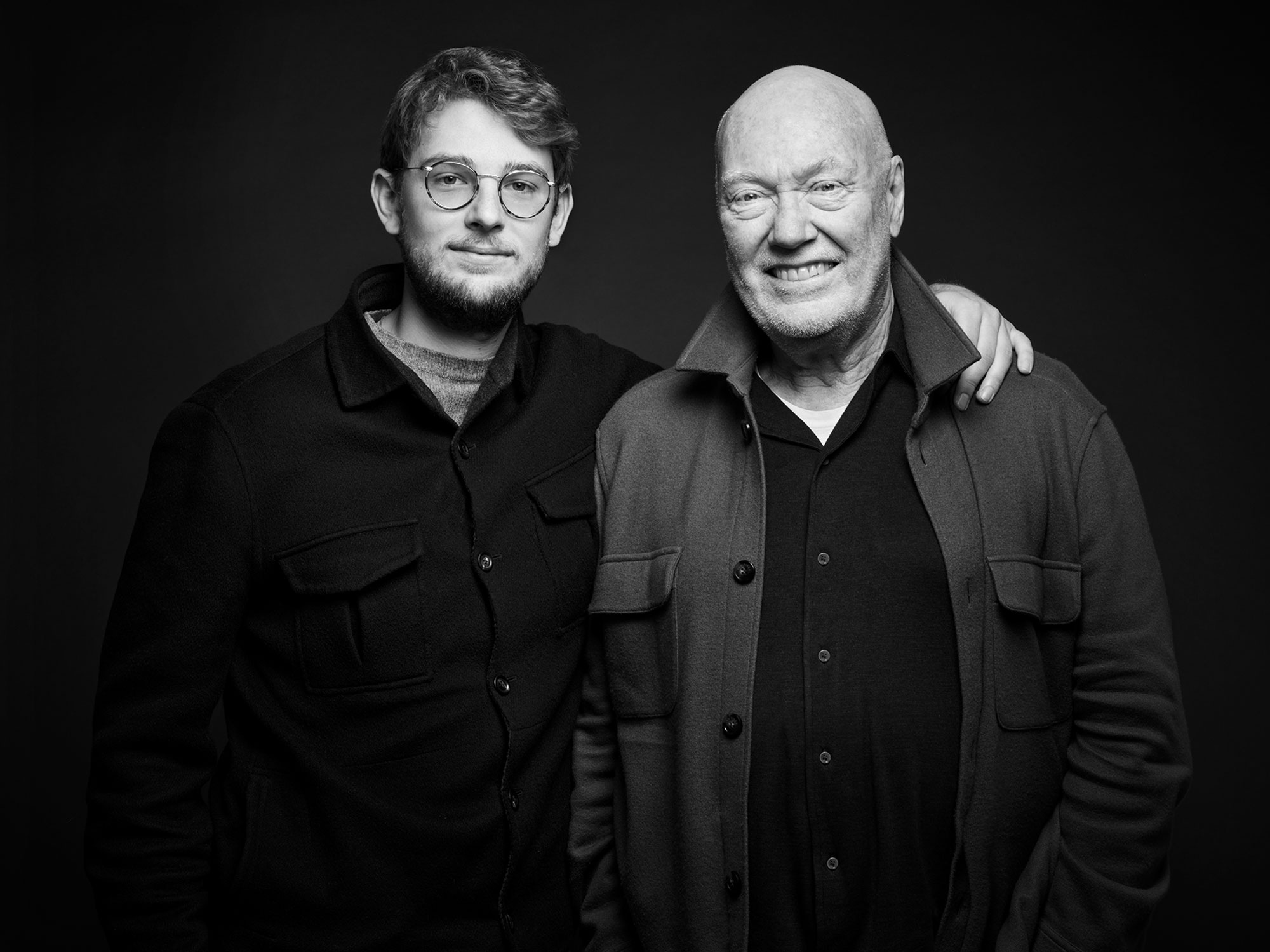
The trade in certified pre-owned watches
The pre-owned watch market could represent an exciting bridge between new mechanics and new customers in the future – and we are not just referring to Chrono24 as the world’s largest pre-owned watch retailer. Numerous manufactures have started to offer so-called CPO, i.e. certified pre-owned (CPO) watches. Or did you know that even major brands such as Longines now offer this, and that the models that are only available in the Geneva boutique sell out very quickly? The biggest player in this segment is currently the world’s largest Rolex retailer Bucherer, which was taken over by the Geneva-based company two years ago, which will change the watch trade worldwide in the long term. The biggest catch: although these certified watches are flawless and these certificates could open up a whole new second-hand market similar to that of the automotive industry in the future, the prices are sometimes ludicrously high. This is partly due to the dealer’s enormous purchase prices during the Covid build-up phase and partly to the fact that the maintenance and spare parts costs of mechanical watches have simply exploded in recent years. On top of that: new watchmakers are hard to find. All of this drives up costs and prevents the watches from reaching new customers, for whom even 500 euros can make a real difference.
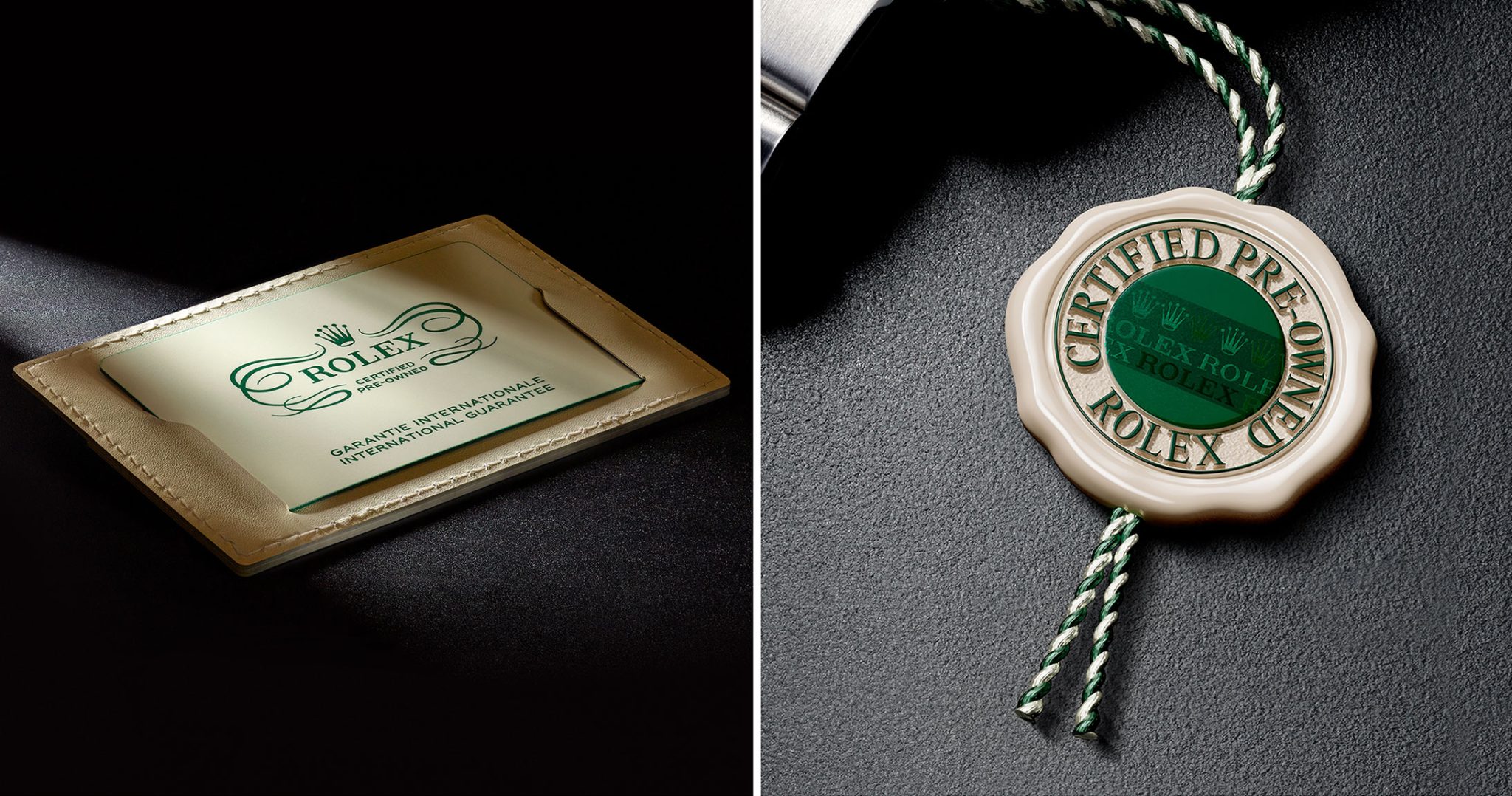
Is trading in second-hand watches worthwhile? Experts say: No
Multi-brand retailers such as the German company Wempe can tell you a thing or two about it. The company will probably set up its own CPO business in the next year or two for strategic reasons, but in an interview – also with the German business magazine Wirtschaftswoche – CEO and owner Kim-Eva Wempe confirmed that ‘you can’t make money with it’ the moment you open the watches and properly check them. Watch servicing has never been a cash cow – why do you think Rolex has relied on such long-lasting movements for decades? Because it is ultimately cheaper.

Second-hand watch trade as a customer loyalty tool
For many brands, trading in pre-owned watches will become an essential tool for retaining customers and fostering a completely new form of customer relationship, as demonstrated by the fashion industry. It will no longer be just about old versus new; it will also be about sharing the brand’s story personally during the most crucial part of the customer journey – the customer conversation. This will be especially important in times of overloaded communication channels, even if it’s over a glass of champagne.
The end of the monobrand boutique boom?
Direct trade in pre-owned watches could also be a solution for brands to attract customers to their increasing number of boutiques worldwide. One dilemma remains for us: new customers have enormous threshold fears, not just of mono-brand boutiques, some of which also lack the expertise to introduce customers to different brand worlds in an open-ended way. Even if platforms such as Swisswatches try to do the groundwork, it has to be said clearly: a watch has to be experienced on the wrist and, in the best case, a watch should not only be bought according to the desired image of a brand, but also according to what suits the style of clothing, the wrist or the personality and can only be recommended by a trained advisor. The watch world currently needs nothing less than expensive luxury watch mis-purchases.
However, some brands are currently unable to do both due to the small quantities alone: supplying multi-brand stores and their own boutiques. That’s why many companies that don’t think long-term rely primarily on the double margin and high brand visibility that every monobrand boutique automatically realises when it sells a watch directly. I’m not sure whether this calculation will work out in the long term, given the enormous personnel and rental costs worldwide, while the multi-brand stores continue to cultivate their long-term customer relationships. For the top brands, CPO has a practical side effect: for very popular brands, companies can slowly but surely thin out the second-hand watch market and start to control prices here too, but this is still a long way off.
The elephant in the room that nobody is talking about: prices are rising, but is quality rising too?
This brings us to issue number one, which in our opinion could jeopardise the industry’s efforts to win new customers: the price increases have reached a level that seems frightening. Rolex raised prices by up to 14% at the turn of the year, which experts say is due to rising costs, particularly for gold. According to Watchpro, the price of gold for Swiss manufacturers rose by 33% in 2024, from around CHF 1,750 per ounce at the beginning of the year to CHF 2,334 at the end of December. In response, the price of a Rolex Daytona Ref. 126509 in 18-carat white gold rose by 14.2% (here are the changes in detail). Even if this is an extreme example and the top brands actually increase their prices regularly every year, the question of value for money is beginning to arise.
For top brands such as Rolex, Patek Philippe and to some extent Audemars Piguet, which have serious waiting lists, it may not make much difference if a watch rises in price by three to five per cent. You can always argue: circumstances, labour, energy costs, materials would have become expensive. Last summer, my industry colleague Gisbert Brunner calculated that the latest yellow gold Oyster Perpetual Deepsea in the version supplied by Rolex weighs 322 grams. Sounds like an impressive amount of gold? If you subtract 100 grams for the crystal, movement, dial, titanium case back and helium valve, customers receive around 222 grams of 18-carat yellow gold, which currently has a market value of around 14,000 euros. However, the watch now costs 59,200 euros, more than four times as much. And Rolex is still known for using a lot of precious metal in its watches!
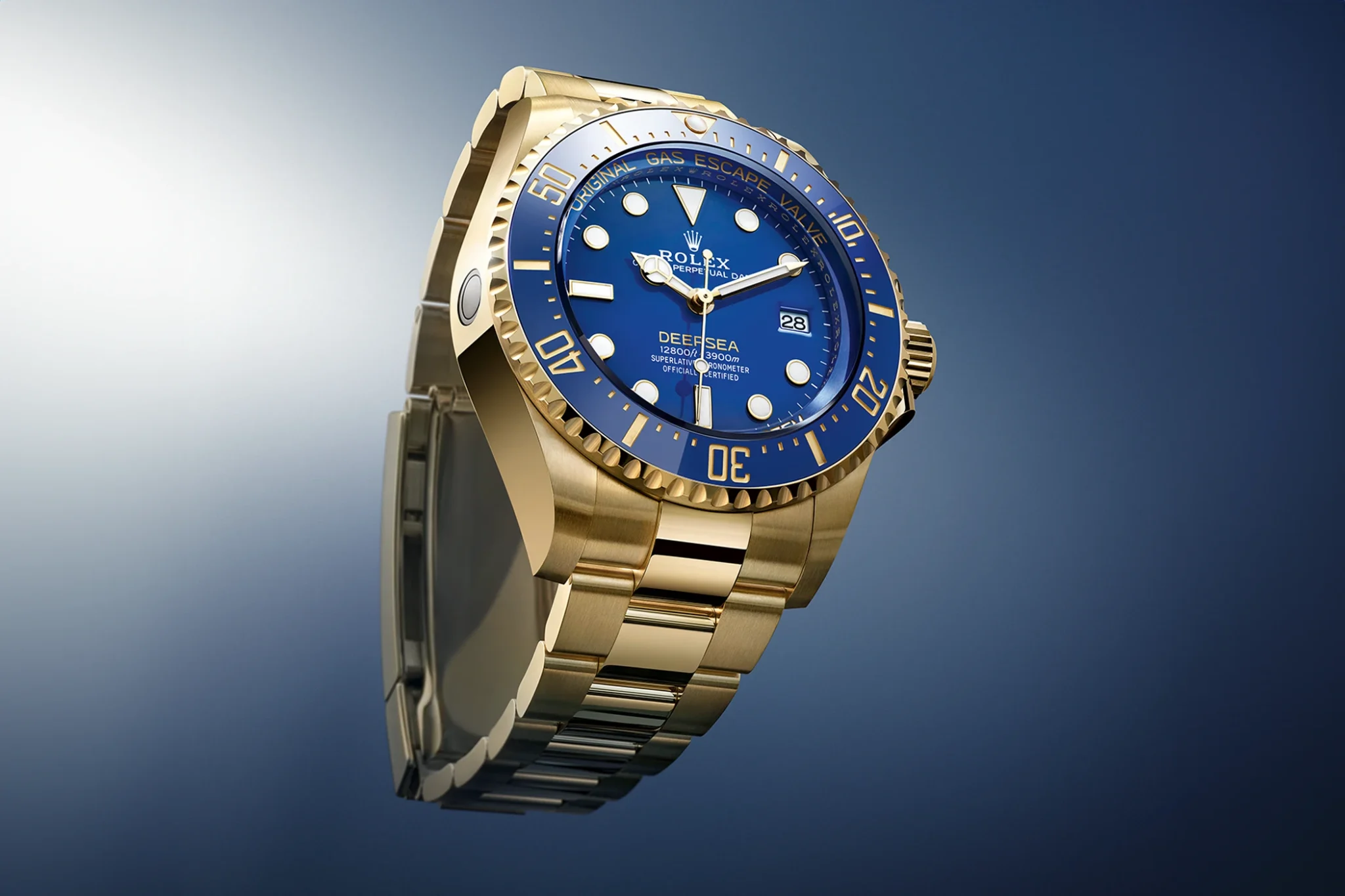
Credit ©Rolex/JVA Studios
Entry-level customers have been running away with prices – for years
You don’t care about that as a manufacture? But for entry-level customers who have been saving up for a watch for several years, it makes a big difference when they see that the watch they have been dreaming about for years is simply running away from them in terms of price. The colleagues from Hodinkee recently put it in a podcast: if the margins, which are incredibly good for the top brands, are then simply maintained, one wonders where the respect for the customer is? Especially in the price range below 10,000 euros, we would also like to see more caution. Just a few hundred euros can make a huge difference to the feeling of not having been ripped off in the end.
Does the world need more watch brands or is less really more?
Is the big death of smaller brands coming? We rather believe that many brands will be taken over and perhaps even more conglomerates will emerge in the future. In any case, Breitling’s announcement to bring back Universal Genève is an expression of the fact that the verticalisation of manufactures over the last two decades has had a double price: manufactures have to make a much more cost-intensive effort and actually sell more movements in order to be profitable. However, in order not to flood the market and keep second-hand prices stable, these companies have to find other ways to utilise their capacity. For example, as in the case of Breitling and Tudor, to work together with the manufacturer Kenissi on the movements.

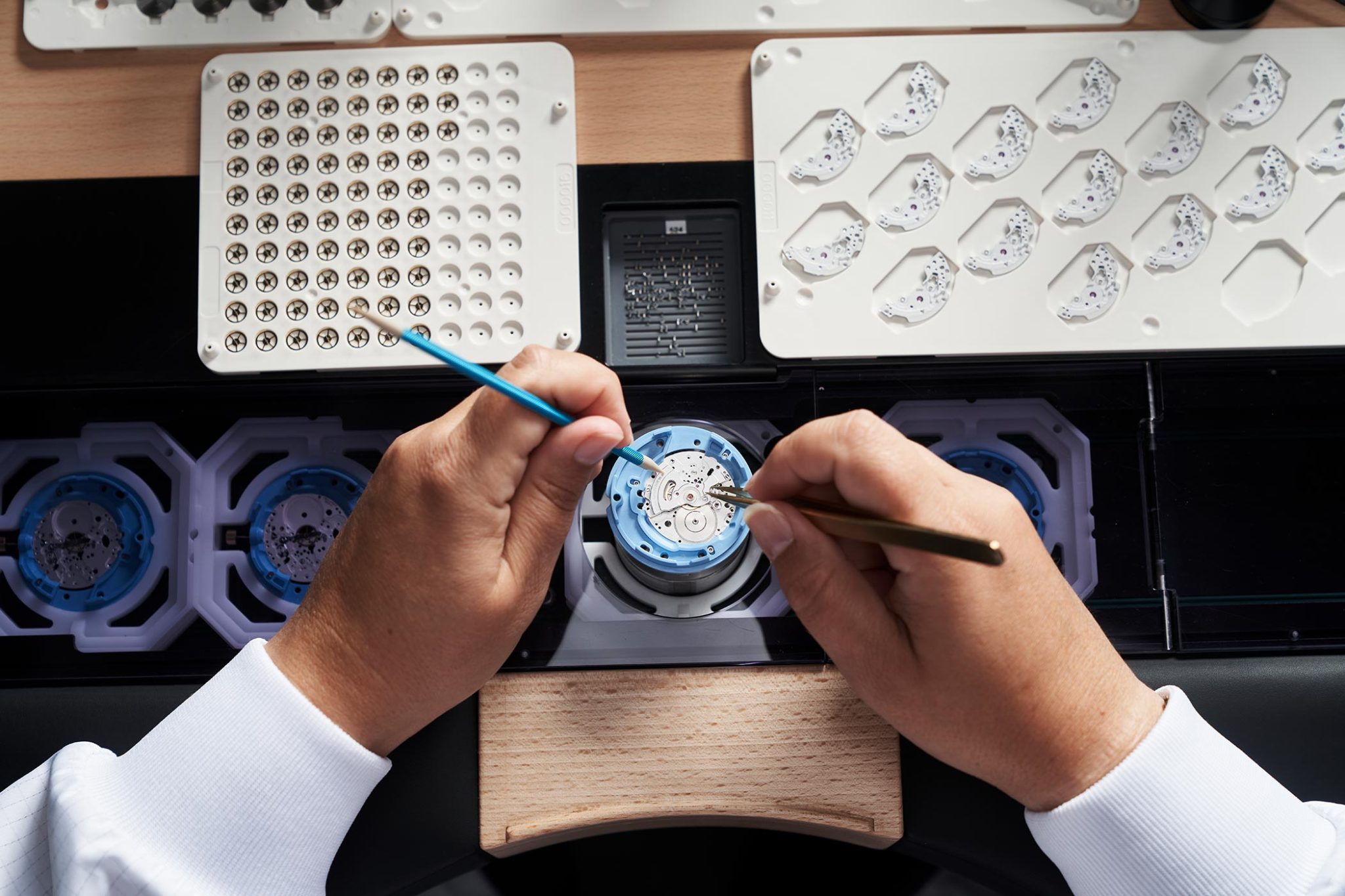
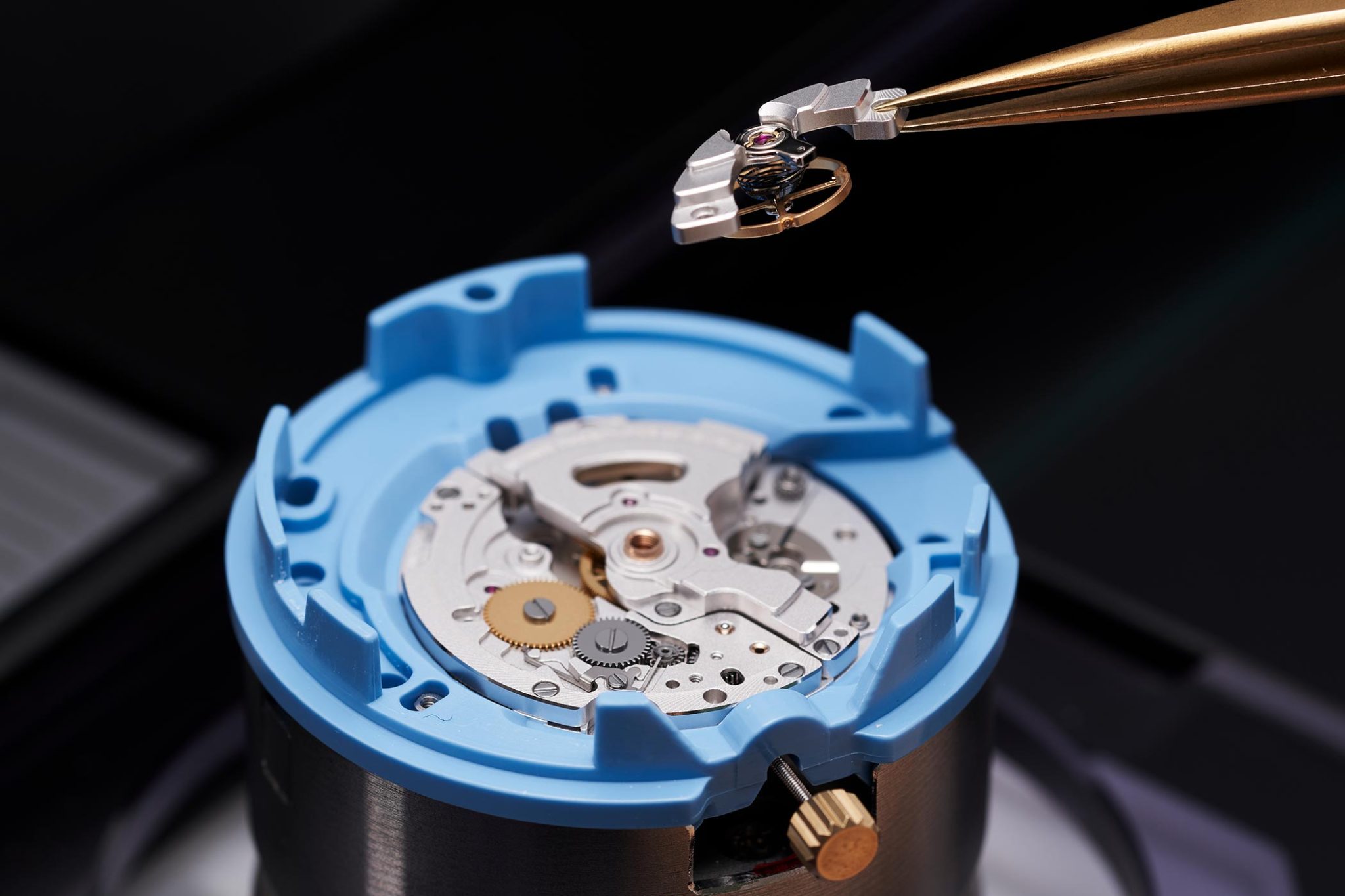
If 400 watch companies were to close overnight, there would still be 100 too many
My colleague Ken Kessler from Watchpro has some radical advice for us watch journalists, which I’m sure not many people want to hear: ‘They say there are over 600 watch brands in Switzerland alone, and I’ve stopped counting all the trivial “micro-brands” that just put Miyota movements in generic cases attached to flimsy marketing stories. So here’s my two-point manifesto: firstly, stop promoting new brands at the high end – there are only so many collectors in Singapore or Thailand or Moscow willing or able to buy a new tourbillon every week. Secondly, don’t promote micro-brands, no matter how affordable, cool or cute they are. We don’t need either anymore. Why this blunt approach? If 400 watch companies closed overnight, there would still be 100 too many.’
Value for money – or even more top brands?
Whether you agree with this or not, one thing is clear. One thing is no longer possible: business as usual. Bizarrely, however, new watch brands are now emerging from all corners of the world, especially with exciting stories: Hodinkee is discussing the comeback of Urban Jürgensen in 2025 with watchmaking legend Karie-Voutalinen at the helm of its 250-year history.
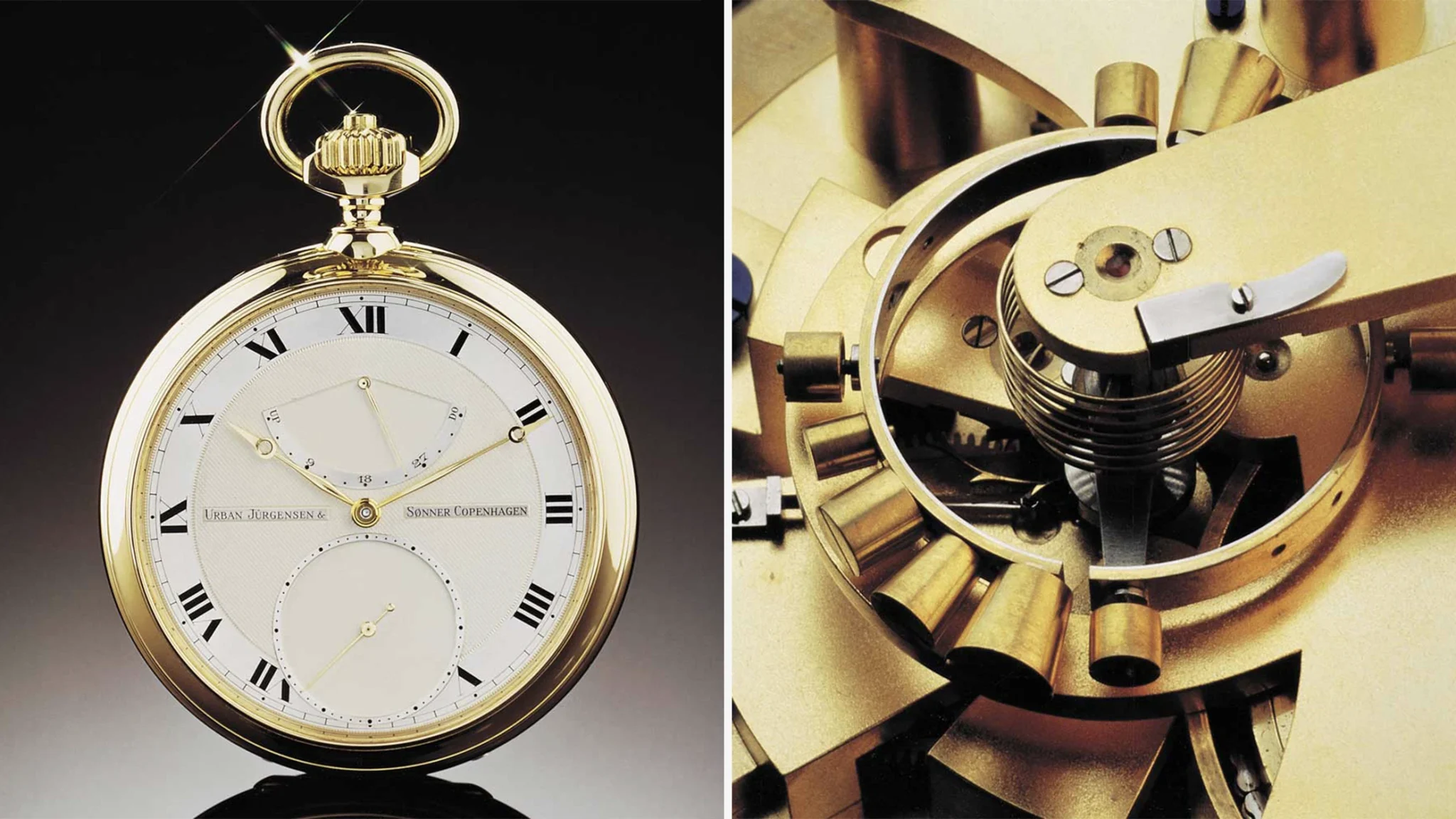
A heretical question: Does everything have to be Swiss Made?
On the other hand, the industry is reluctant to discuss the components that, according to experts, haven’t necessarily defined a manufacture until now – such as cases, bracelets, and dials. While I’m not sure how many watch companies source these parts from China, I believe it’s time to end the secrecy in an industry that no longer requires it. After all, don’t our laptops also arrive flawlessly from Asia? However, a few manufacturers might take issue with this, as many would no longer be able to justify their inflated prices if they were using cases and rubber straps made in Europe or China. I would like to see much more transparency in the future.
China will not fix it
It is now also clear among experts that China will not fix it. At least not in the luxury market. Under President Xi Jinping, Western luxury is frowned upon, and this trend will continue in 2025. And let’s be honest: Swiss watch brands (and German car manufacturers) have made good money from this for years, but this alone will mean that different times are dawning for both industries.
PART 2
The most important watch dates and anniversaries for 2025
Let’s move on to the second part: the watch anniversaries and birthdays. We make no claim to completeness, but if you really want to know exactly what’s going on and missed the Swisswatches newsletter just before Christmas, here are the most important brand and model anniversaries for 2025, supplemented by the most important anniversaries of special models, which may provide some insight into what’s to come in this industry in 2025.
The longest history: Vacheron celebrates 270 years
Vacheron Constantin is celebrating a whopping 270 years. Yes, you read that right: 270! We expect a lot from this sleeping giant over the next few years. We don’t mean sleeping in a derogatory way: we just think the potential is much greater than it is today. Its age alone is not as important as its simply impressive history: until the rise of Patek Philippe in the early 1930s, Vacheron Constantin was the first choice for emperors, kings, popes and the entire aristocracy. The early industrial barons and the financial aristocracy also favoured Vacheron Constantin. The change at the top mentioned by my colleagues fits in with this: Laurent Perves, who previously helped the oldest continuously operating watch manufacturer to consolidate its position in haute horlogerie as Chief Marketing Officer and most recently Chief Commercial Officer, will now take over the helm completely. Collectors in the top segment in particular should now seize the opportunity at auctions, because although Vacheron has a much longer history than Patek, it has built far fewer models in its history than its colleagues from Geneva. We are curious to see whether there will also be a new book on the rich model and company history, which will do justice to the new claim and could help collectors with special models.


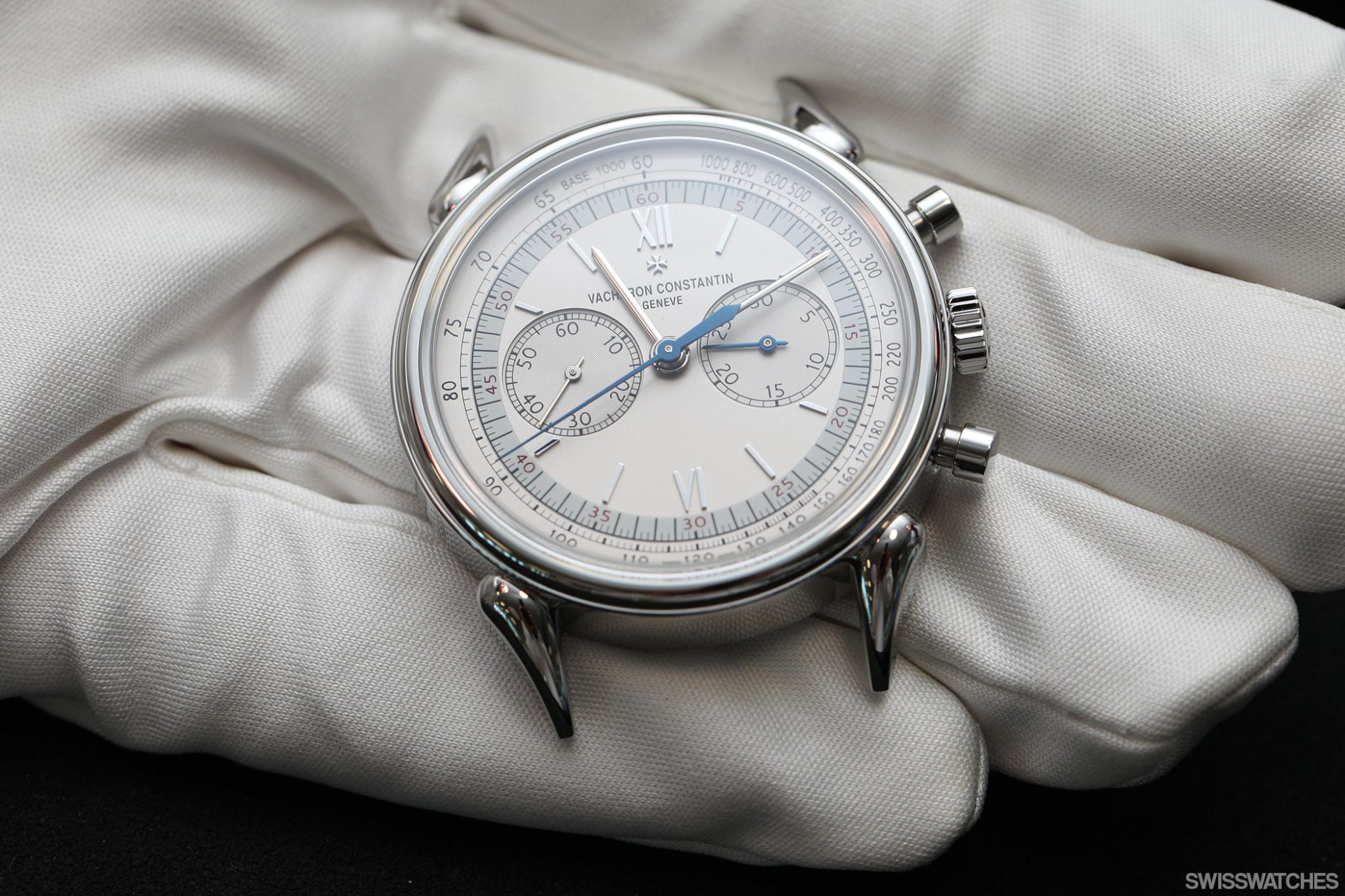
The Vacheron Constantin Manufacture in Plan-les-Ouates near Geneva
Fotocredit © Maud Guye-Vuillème
Blancpain celebrates its 290th birthday
This year, Blancpain is celebrating its 290th anniversary since it was founded by Jehan-Jacques Blancpain in 1735. However, unlike Vacheron Constantin, the brand was not in continuous operation and sometimes traded under a different name (Rayville SA, succ. De Blancpain). Hit hard by the quartz crisis in the 1970s, production came to a standstill and the brand did not experience a renaissance until 1982, when Jean-Claude Biver and Jacques Piguet acquired the rights to the brand. We do not expect Blancpain to celebrate the 290 years in a big way – they will most likely save the big birthday party with possible anniversary models for the 300th birthday in 2035.
Breguet celebrates its 250th birthday
Breguet’s 250th birthday is of course no less impressive. Just think about these impressive figures. Apple was founded in 1976 and will therefore be 50 years old in 2026. Will Apple still be around in the year 2,226? Joking aside. How could it be otherwise? There are other exciting anniversaries behind the most important watchmaker in history, which perhaps hint at anniversary models from this special manufacture. We would also like to see it play a role among today’s collectors in the future that is commensurate with its historical significance.
The first wristwatch is likely 215 years old
But Breguet has another anniversary to celebrate: in 1810, the company founder built what was probably the world’s first wristwatch for the new Queen of Naples, Caroline Bonaparte, making it 215 years old. However, the first wristwatch with the number 2639, commissioned by Queen Caroline Murat, was not completed until 1812.
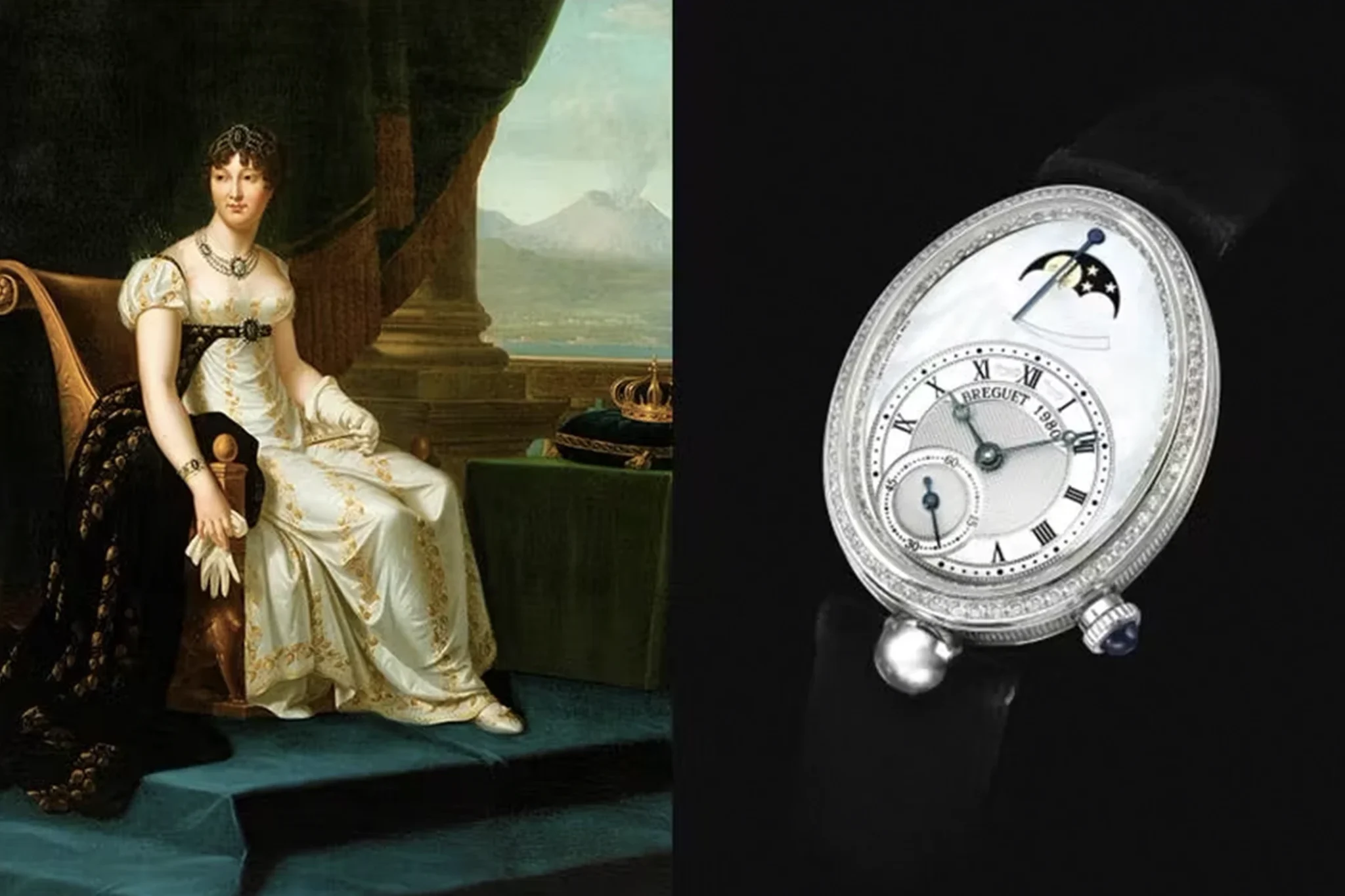
Credit © Sotheby’s
New Breguet CEO from Omega
However, there is another, more tangible reason why we are predicting a surge in attention for Breguet in the coming years: the traditional brand appointed Gregory Kissling as its new CEO on 1 October 2024. Kissling is known to many in the watch scene, as he comes from Omega, where he most recently made a name for himself as Vice President of Product Development. And that gives us hope. Omega’s products of the last ten years are among the most innovative the industry has to offer (even if this has not yet filtered through to auction and resale prices, as the price increases for new Omegas were perhaps a little too ambitious for that). Perhaps Kissling is now the right man at the right time for Breguet: he will certainly be able to put his 20 years of experience at Omega to good use.
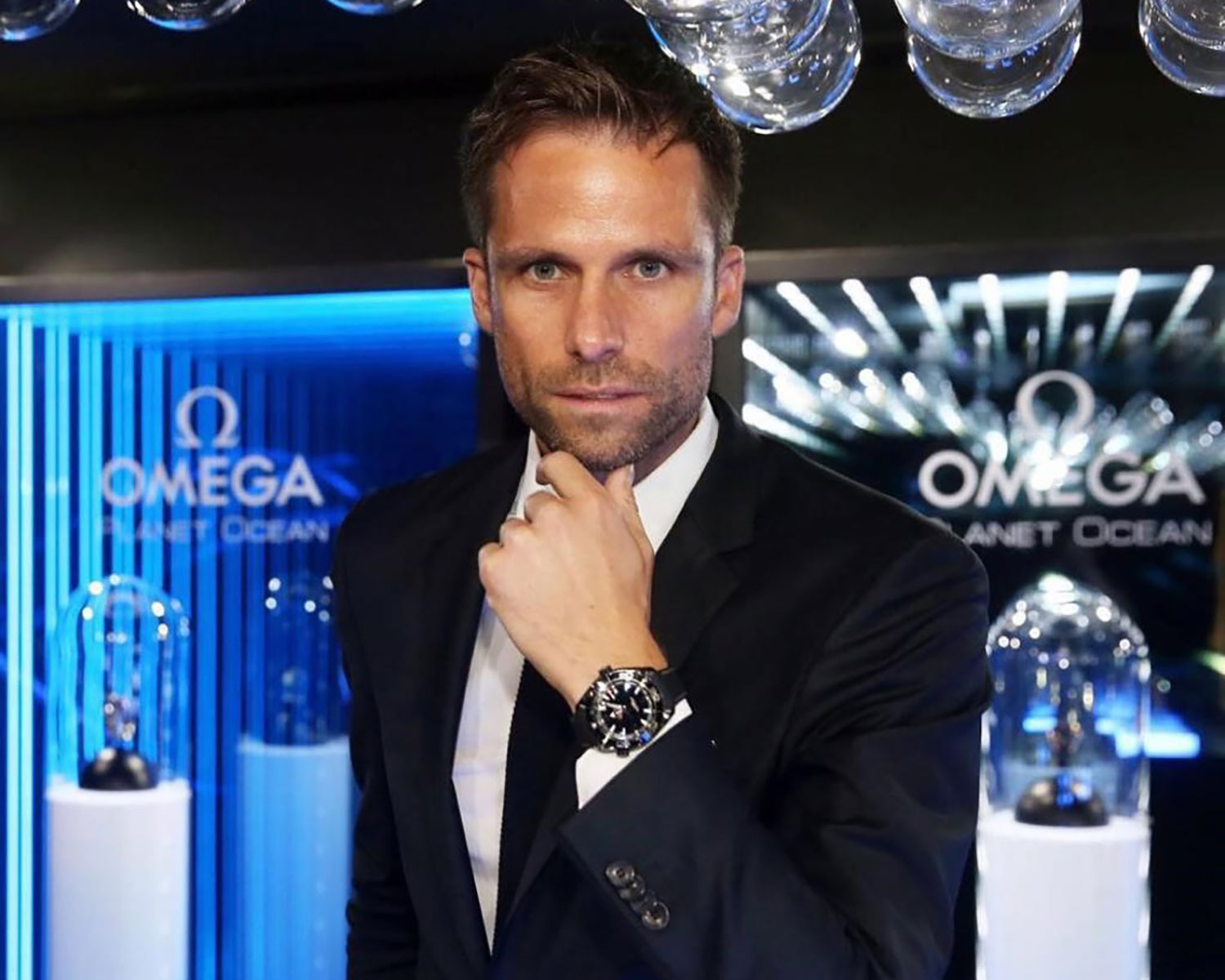
Let’s stay with Omega: 30 years of James Bond watches
Speaking of Omega: for once, we’ll skip a few hundred years – we’ll continue in a moment, but the Biel-based company is celebrating some exciting anniversaries that will certainly result in one or two special editions. The extremely fruitful collaboration with a legendary screen agent began 30 years ago: James Bond. It was none other than the later Hublot and Tag Heuer CEO Jean-Claude Biver who made Omega the official sponsor of the James Bond films. In GoldenEye, the Seamaster Professional 300 diver’s watch was used as actor Pierce Brosnan’s official watch for the first time in 1995.
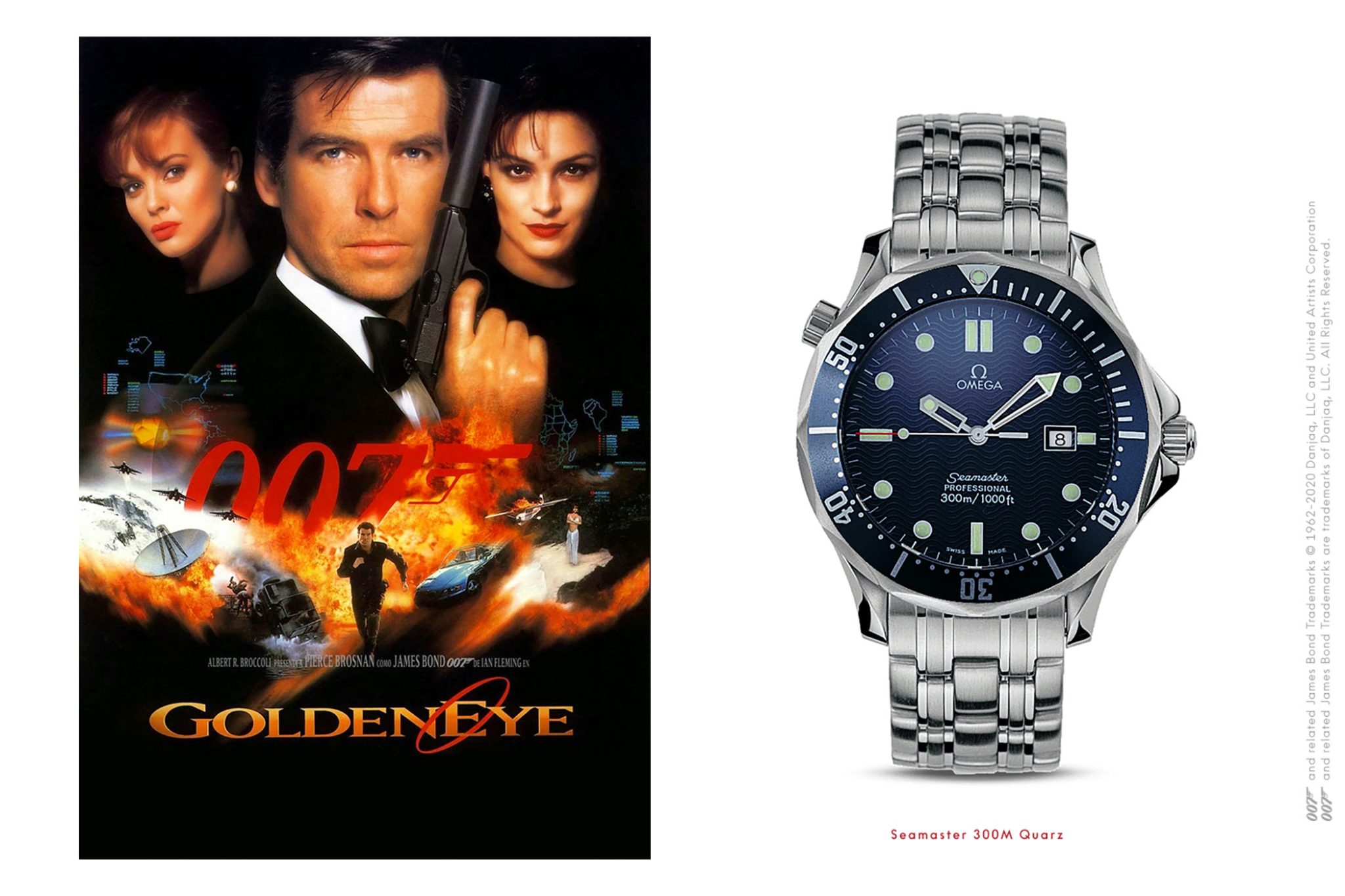
60 years: First spacewalk with an Omega
Two other charming anniversaries concern the famous Speedmaster Professional, which then became the Moonwatch. 60 years ago, astronaut Ed White wore his Speedmaster for the first time on the Gemini 3 mission, while his Speedmaster 105.003 celebrated a very special world premiere on June 3, 1965: during the first American EVA, i.e. the first spacewalk, a Speedy was exposed to space conditions without any protection for the first time (and survived space without any problems).


Credit © NASA
Charming: 55 years of the Snoopy Award
Even if it is only a small anniversary, it was a great moment for mechanical wristwatches and their importance as a ‘tool in case of emergency’: in April 1970, the Omega Speedmaster Professional was an important factor in the successful rescue mission of Apollo 13. The watch was needed for navigation after almost all other systems on board had failed. NASA subsequently presented the watch with the so-called Snoopy Award. This model series regularly makes the hearts of Omega fans beat faster.
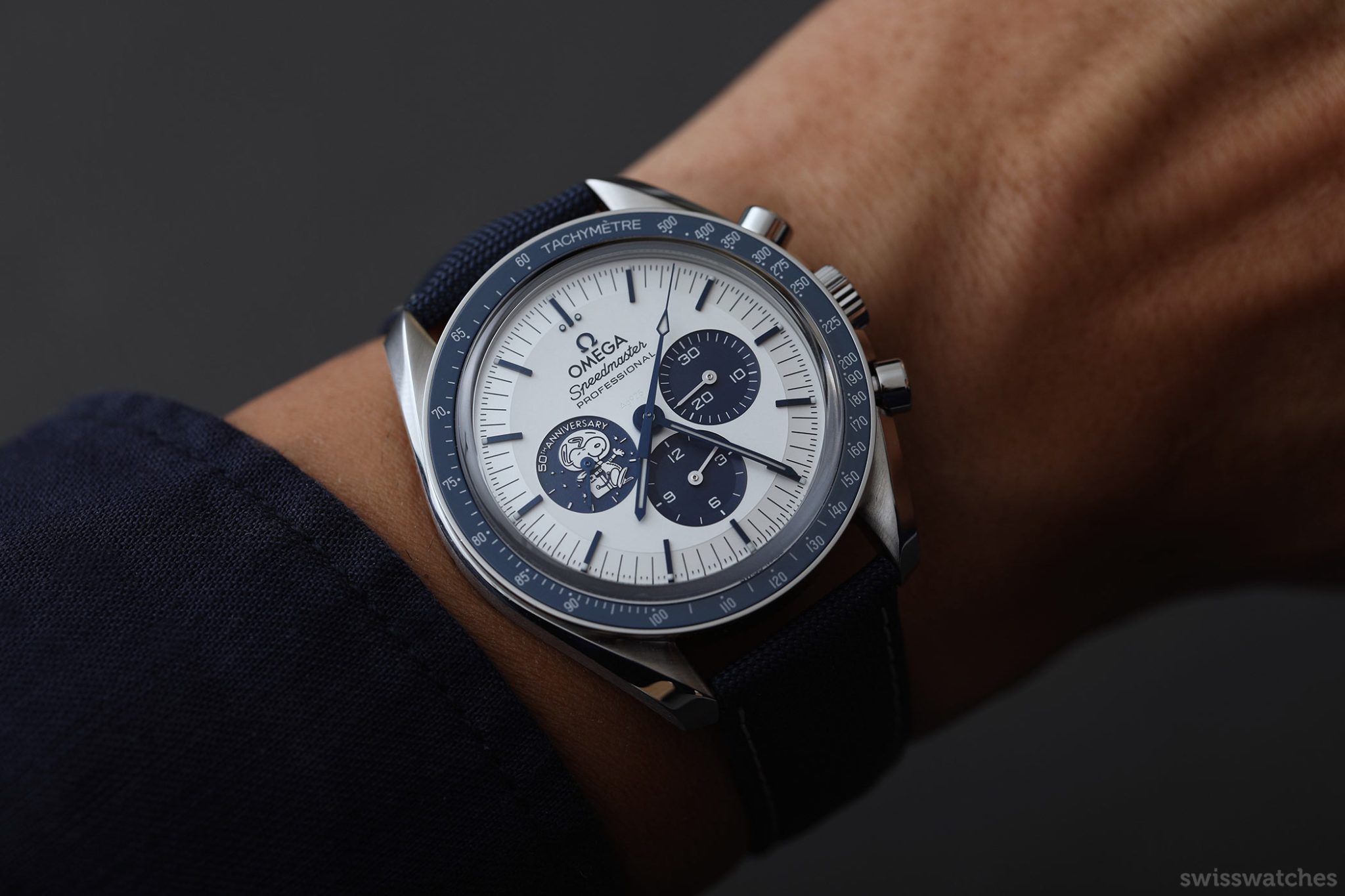
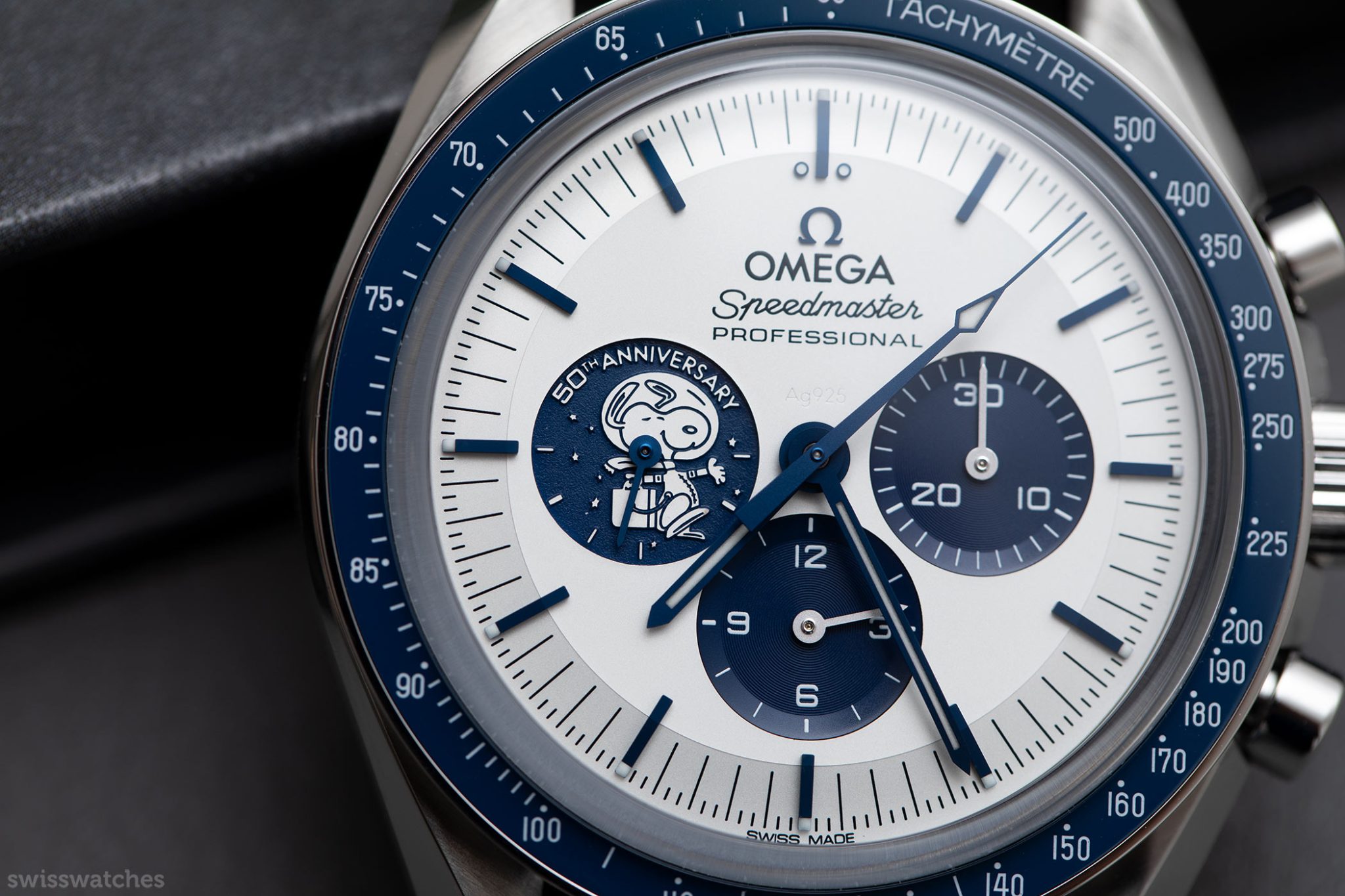
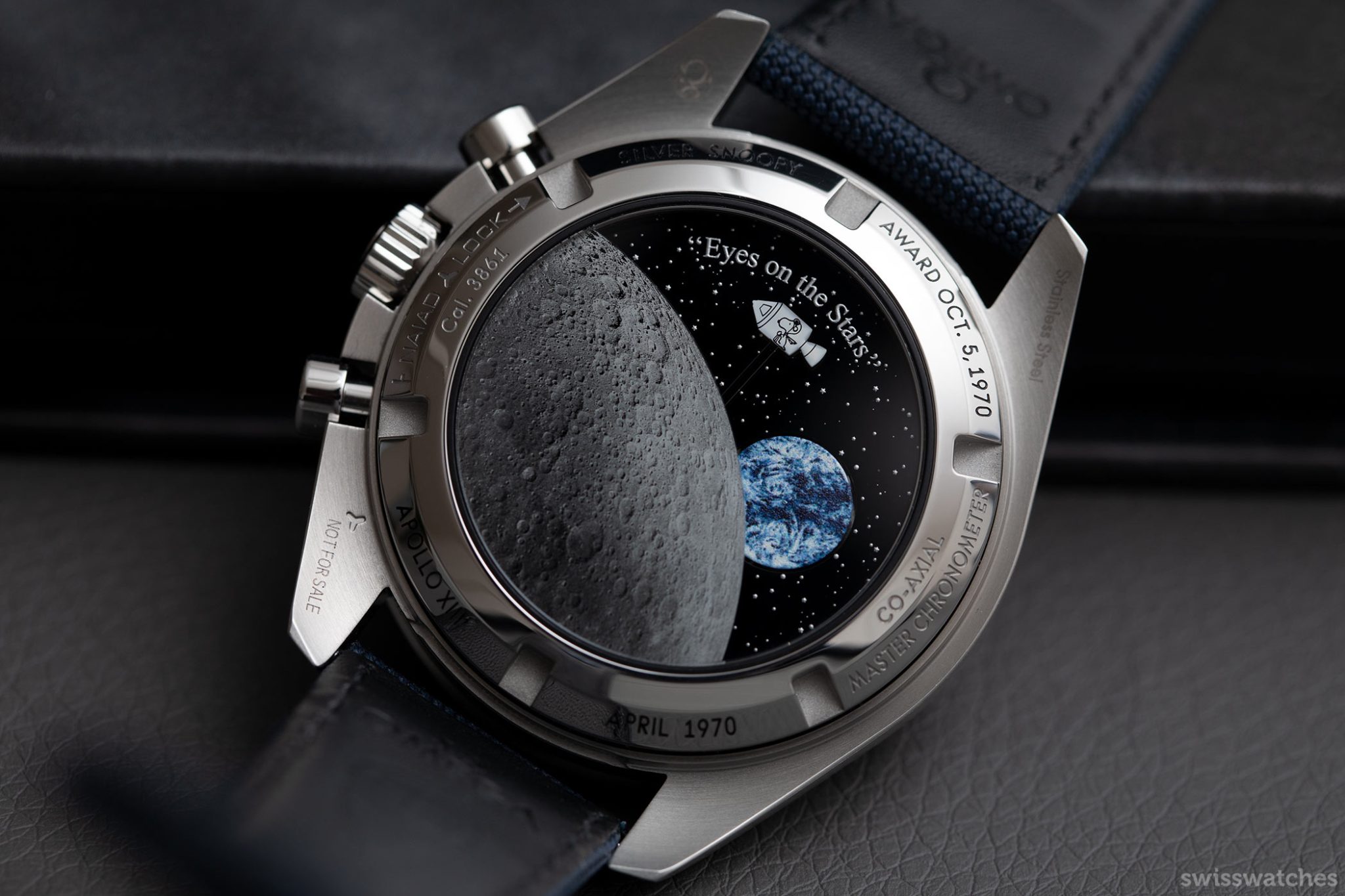
20 years of Omega Planet Ocean
One anniversary that wasn’t even on my radar is, of course, the 20th anniversary of the Omega Planet Ocean. This watch, whose 600-metre model is now available with a very good 39.5-millimetre case, opens up a range of great possibilities. Thomas Hendricks from Chrono 24 even speculates as to whether, after the Seamaster 300, this model could also use the company’s own ceramic as a case material and thus challenge IWC’s Ceratanium. It remains exciting.
Back to the big numbers: 180 years of watchmaking in Glashütte
The watchmaking industry in Glashütte, Saxony, is celebrating 180 years of existence. Glashütte Original, the legitimate successor to the historic Glashütte watchmaking companies, is planning to celebrate this anniversary in a big way and to honour it with correspondingly sensational models. As an aside, what I consider to be an extremely exciting complication from the watchmaker is also celebrating its 25th birthday: the world’s first mechanical chronograph with countdown and alarm signal, the PanoRetrograph, is turning 25. Unfortunately, this watch is now only available as pre-owned. However, the Senator Cosmopolite, the only world timepiece currently available with 35 zone times in the form of IATA airport codes, celebrates its 10th birthday.
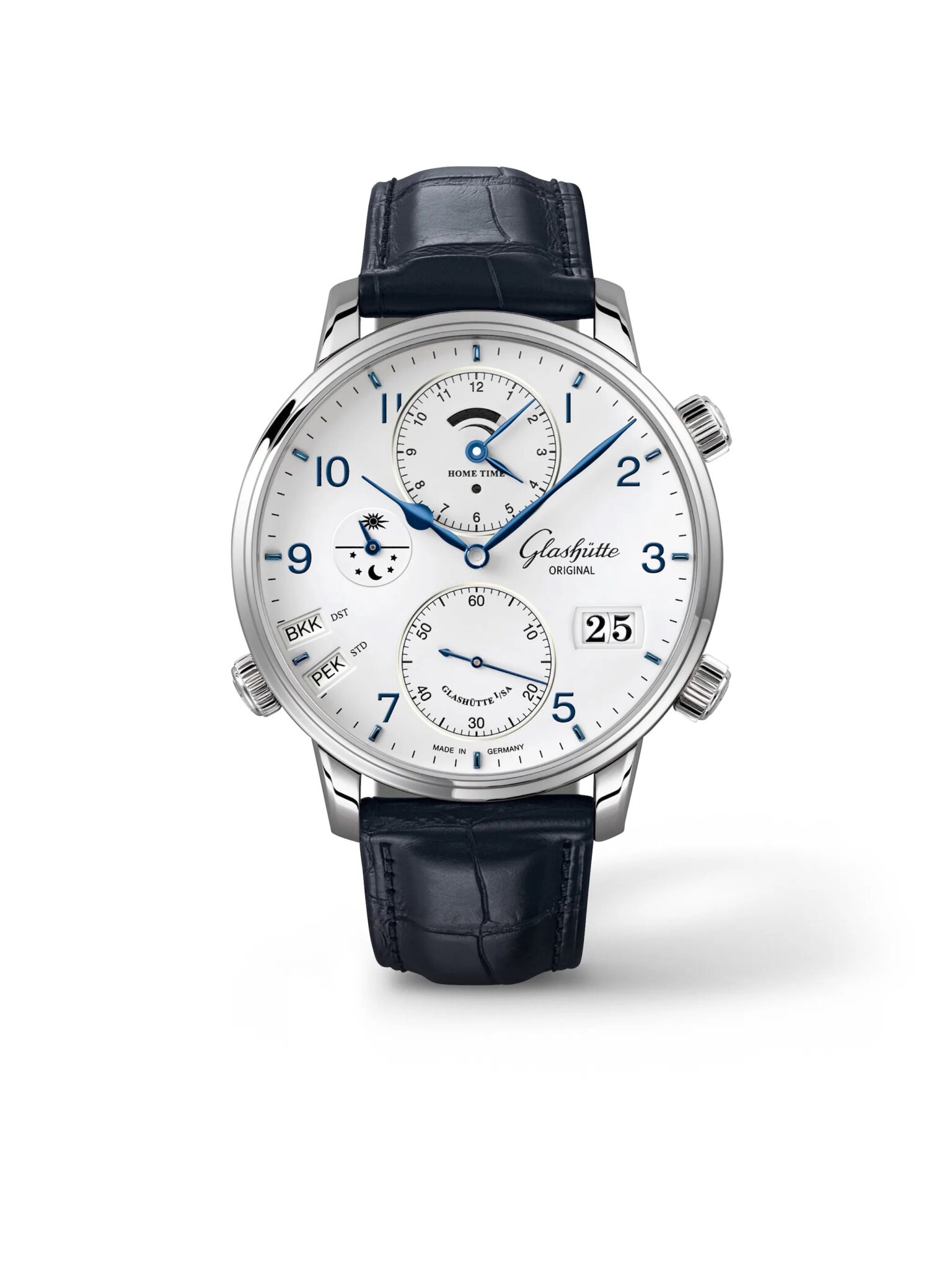
One could argue about the German manufacture A. Lange & Söhne, as Lange was re-established in 1990 with German reunification. But since this was done by a family member (Walter Lange) and the manufacture has fought its way back to the forefront of fine watchmaking over the last 35 years with absolute top performances, we have no doubt that this exceptional manufacture deserves to honour the history, which also refers to the year 1845, with quite extraordinary watches. For us, this would be reason enough to launch a new Grand Complication, for example inspired by the Grand Complication No. 42500 pocket watch from 1902, the last and first Grand Complication by Lange after its reestablishment 12 years ago. This Grand Complication had a large and small chime, a minute repeater, a perpetual calendar and a rattrapante chronograph with flashing seconds. Assembly and fine-tuning were so complex that only one watch was produced per year and only six in total. Should this happen, such a model will certainly have been in the works for years. CEO Wilhelm Schmid could thus crown his almost 15-year tenure at the Glashütte brand.
165 years: Chopard, Panerai and (TAG) Heuer
Three famous watch maisons are sharing a small, 165th anniversary year: Panerai is 165 years old and is celebrating this in Germany with a second boutique opening here in Stuttgart. And it should come as no surprise that the 75th anniversary of its second most important line, Luminor, the successor to the Radiomir, is being celebrated with corresponding models. A teaser is already online on the company website. Panerai is always torn between two sides: on the one hand, they want wearable sizes, but on the other hand, their fan base likes the big watches of the past. Perhaps it’s simply about the best possible Panerai in 2025?
It remains to be seen whether Chopard will celebrate the 165 years since it was founded, but the manufacture, which has received an incredible boost in recent years, particularly with the Alpine-Eagle editions, can take a breather and reflect on the impressive creativity and innovative power of recent years. Very well done, Mr. Scheufele!
TAG Heuer steps on the gas
We are delighted that the first watch sponsor of Formula 1 is now returning to its roots on its 165th birthday and taking over sponsorship from Rolex in 2025: While Formula 1 itself is preparing for its 75th anniversary in 2025, this global partnership also marks a new beginning: the parent company is of course playing a major role in the billion-euro deal: LVMH is committing to the racing series for 10 years, giving the luxury group the opportunity to make a concentrated appearance with its brand portfolio of 75 companies.
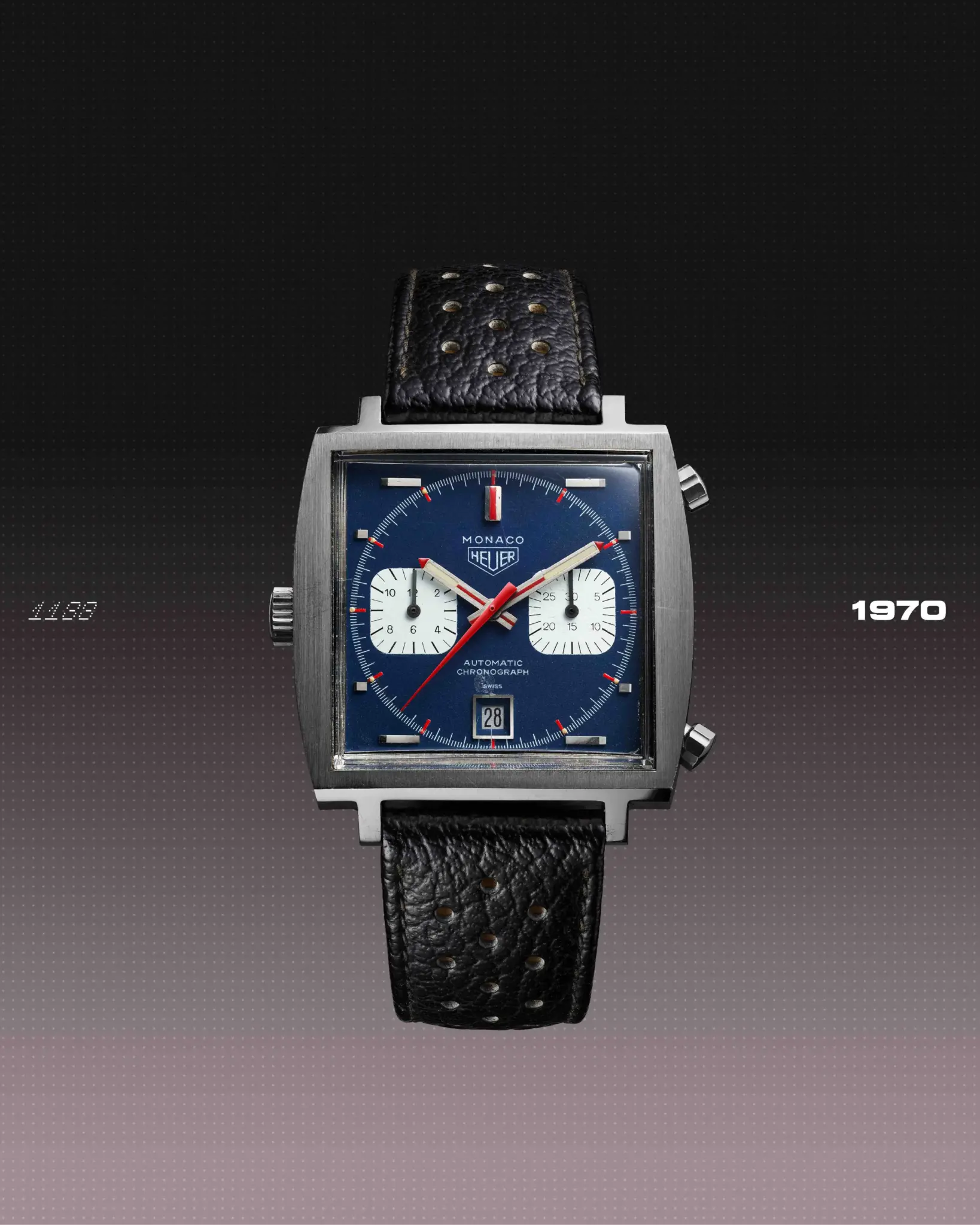
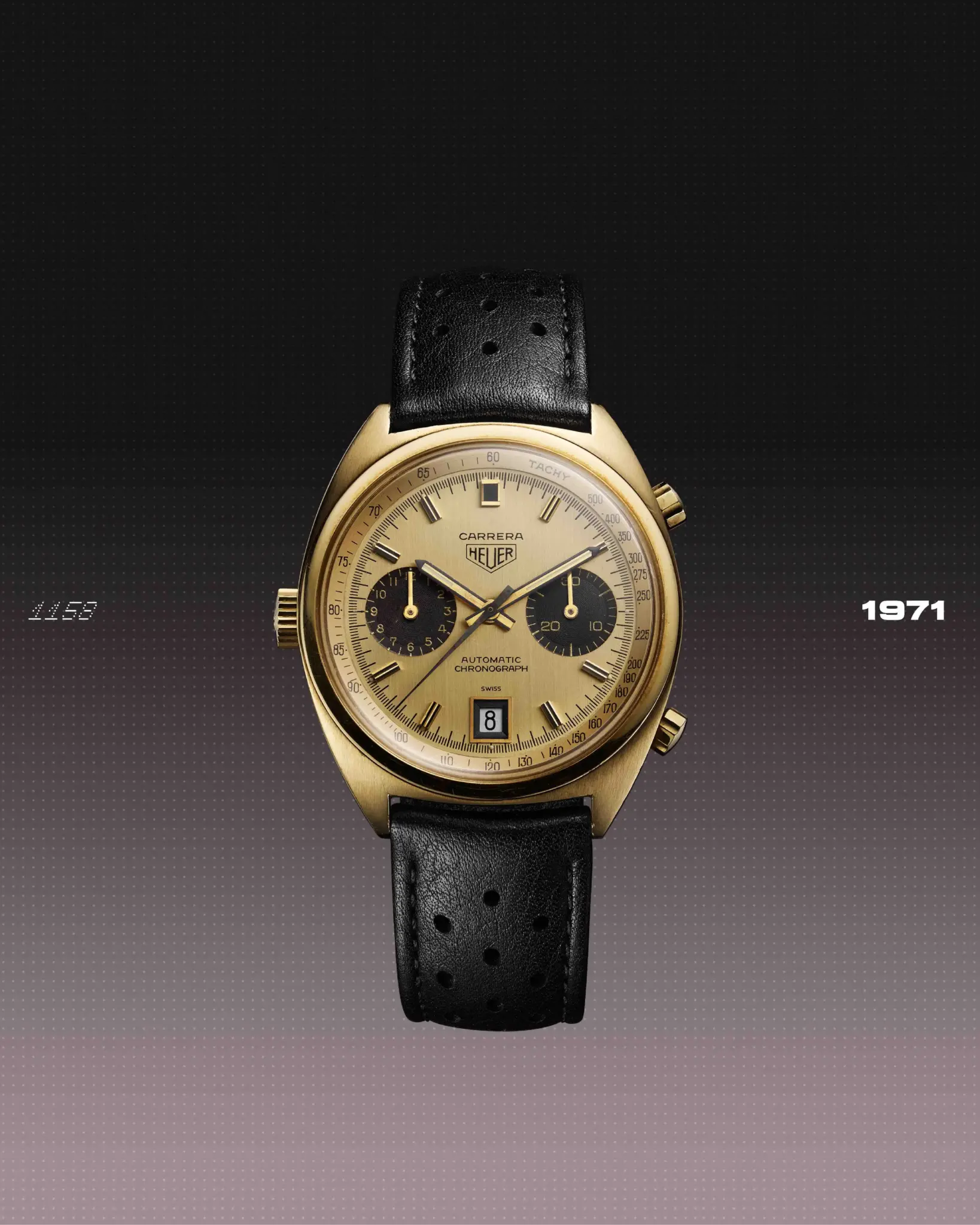

TAG Heuer CEO comes from Bulgari
A lot can be expected from the new TAG Heuer CEO Antoine Pin, who comes from Bulgari and has developed numerous world records there; he already knew how to focus at Bulgari. How about renaming the company HEUER again, for example? The abbreviation for the TAG Group was only added 40 years ago. The company was renamed TAG Heuer in 1985. And the international rise and entry into Formula 1 took place under Jack Heuer and his family name Heuer. Of course, this is rather unlikely.
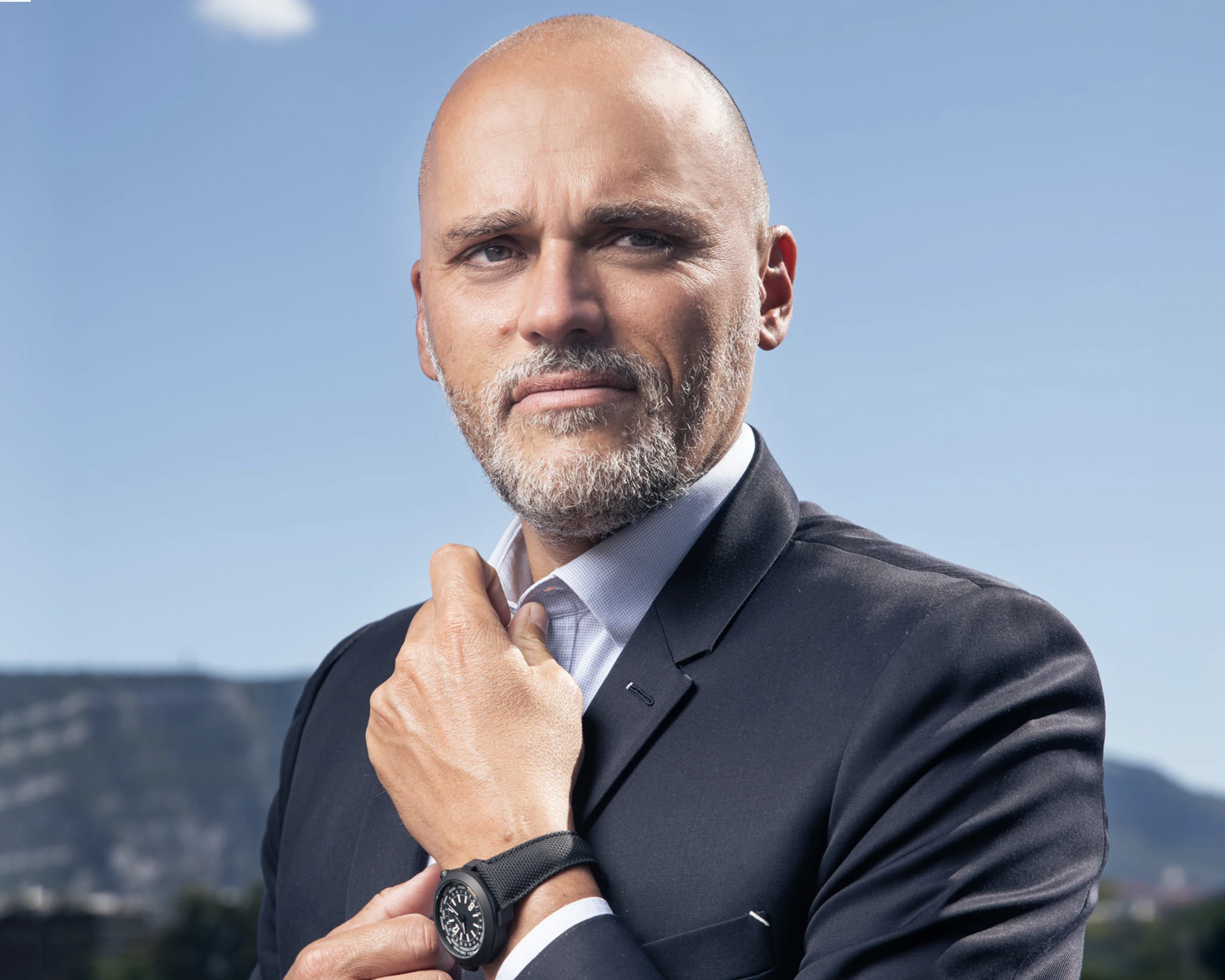

20 years of 1/100 and 1/1000 second wrist chronographs from TAG Heuer
It is also unlikely, albeit a pity, that TAG Heuer will not be celebrating two special anniversaries: the first mechanical wrist chronograph with hundredths of a second measurement accuracy appeared in 2005, 20 years ago. The Carrera Mikrograph never really seemed to take off. Jean-Claude Biver is said to have taken this innovation from Zenith, which is a shame considering the 1/10th of a second history of the El Primero model. Interestingly, TAG Heuer topped this ‘world first’ in the same year with the first mechanical wristwatch capable of recording 1000ths of a second. The Flying 1000 micro-timer was announced by TAG Heuer just three months later. We are curious to see whether these watches and movements will still play a role in the future.
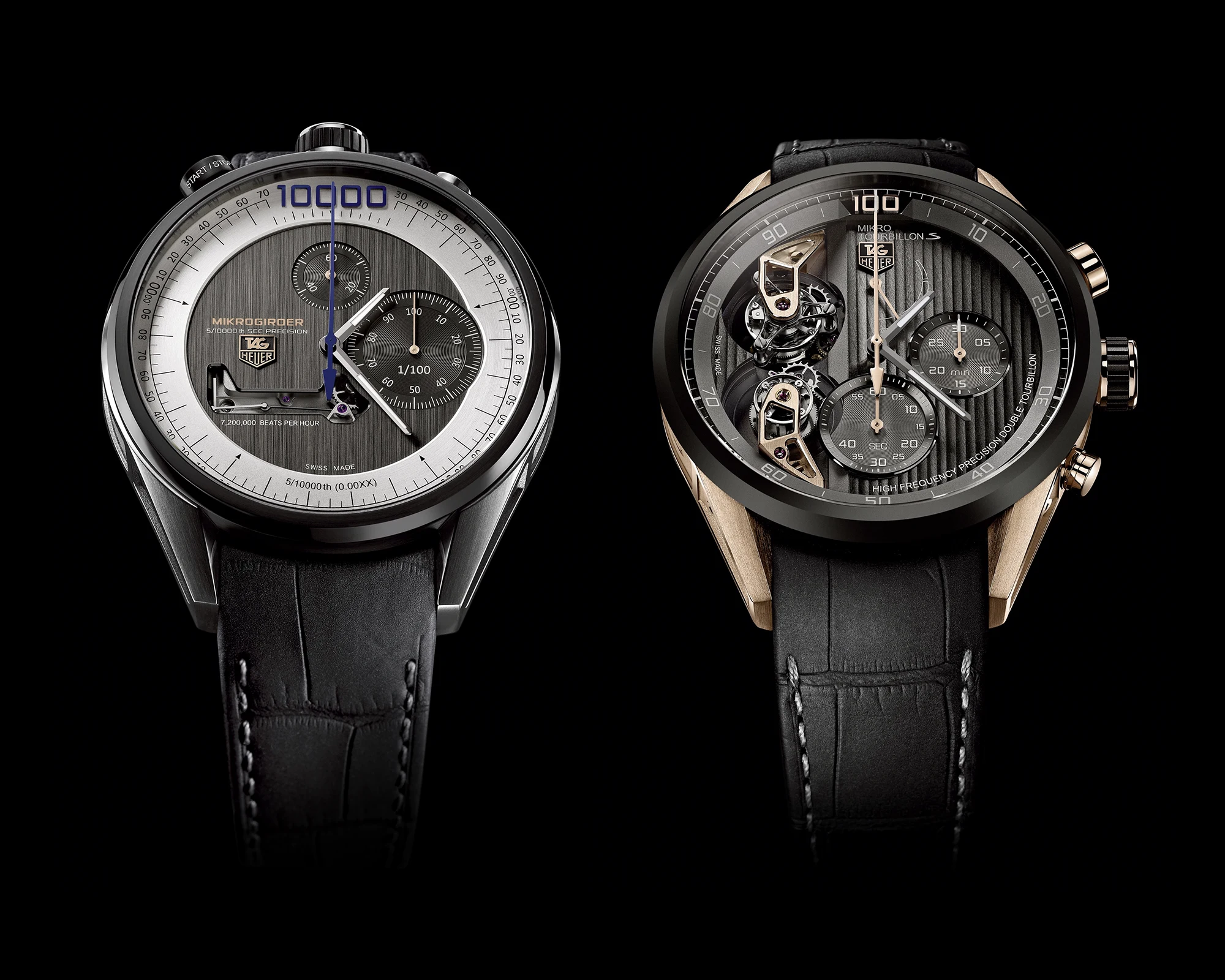
In any case, the Formula 1 deal means that LVMH will replace Rolex as the official timekeeper, whose ten-year partnership with Formula 1 will come to an end.

What will Rolex 2025 bring?
Okay, for Rolex, we’ll skip the sequence again here. We don’t want to join the speculation about new Rolex models here, it’s too pointless to ask exactly which Rolex we’re expecting now (you’ll still find two watches below that I would personally like to see and would be historically credible). Since Rolex already decided years ago what to show journalists at the Watches and Wonders press conference on April 1, 2025 at 9 a.m. on the Palexpo site in Geneva, it is also pointless. It is also unlikely that Rolex will be celebrating its unofficial 120th anniversary, as company founder Wilsdorf had his first watch company registered as ‘Wilsdorf and Davis’ in 1905, before the company name Rolex was registered in 1908. The official (and for Rolex certainly rather small) 130th birthday is therefore not until 2028.

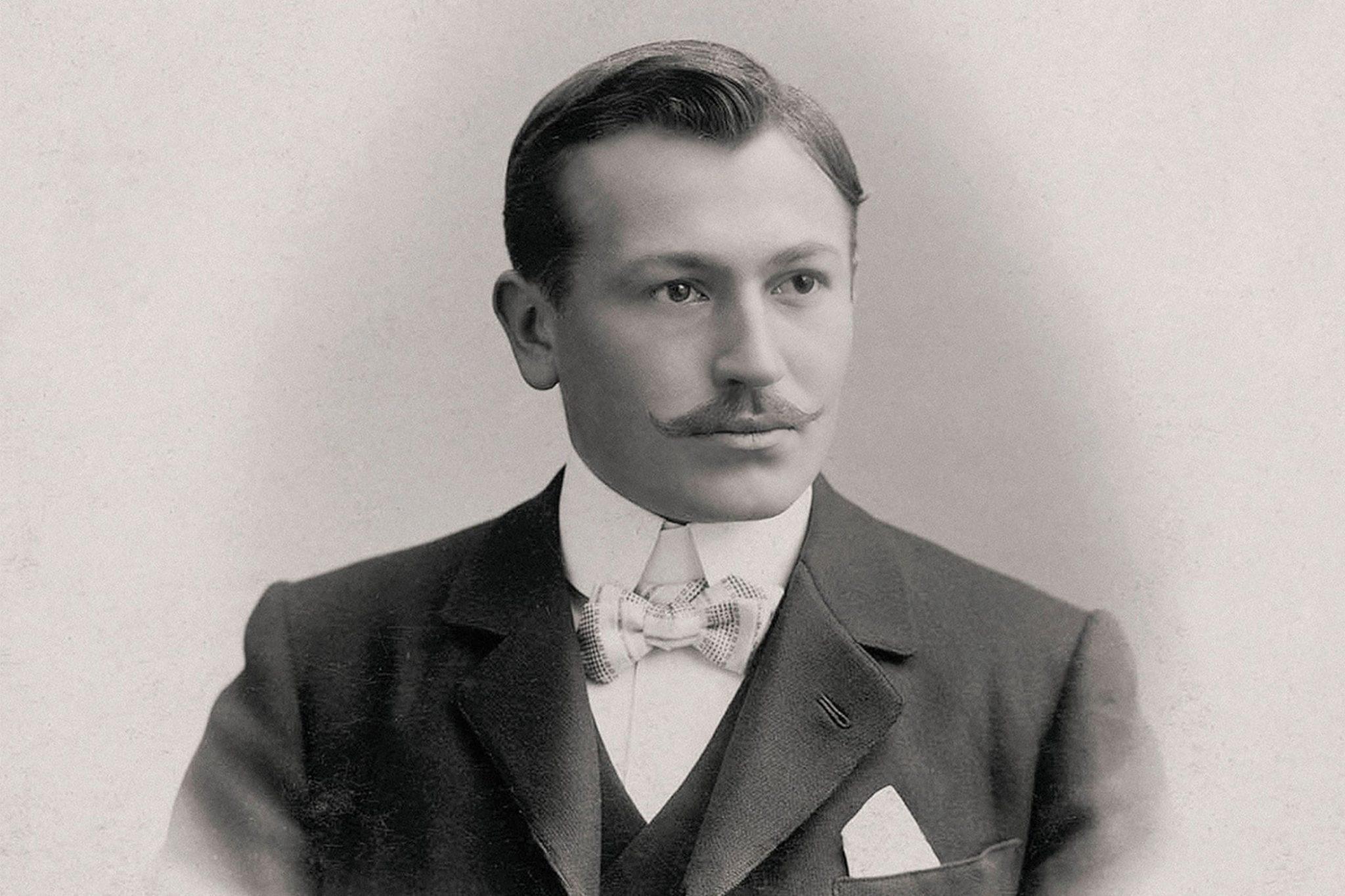
Rolex Tower in the USA to be completed by the end of 2025
Rolex plans big and for the long term. If you spent the holidays in New York City, you may have visited the construction site of the new Rolex US headquarters. On the website of famous architect David Chipperfield, you can read, “This new 30-story tower, whose design was decided by an international competition, will be built on the corner of 5th Avenue and 53rd Street, replacing the existing building that Rolex has occupied since the 1970s. In addition to new office space for employees and tenants and a new Rolex store that will occupy the first four floors, the building will offer brand experiences in a variety of corporate spaces. The 15,000 square metre building will be an important symbol of Rolex’s commitment to quality, precision and excellence. Designed to LEED Platinum standards, it is set to become the greenest new construction tower in New York. However, the new Rolex pilgrimage site will probably not open until 2026.

Credit © David Chipperfield
Rolex GMT Master turns 70
And even though the Rolex GMT Master, first introduced in 1955, is celebrating its 70th birthday, we don’t think it will be in the spotlight as it has been in recent years. Rather, Rolex will continue to work on materials, such as improvements to its ceramic Cerachrom bezel, which was first introduced 20 years ago in the GMT-Master II.
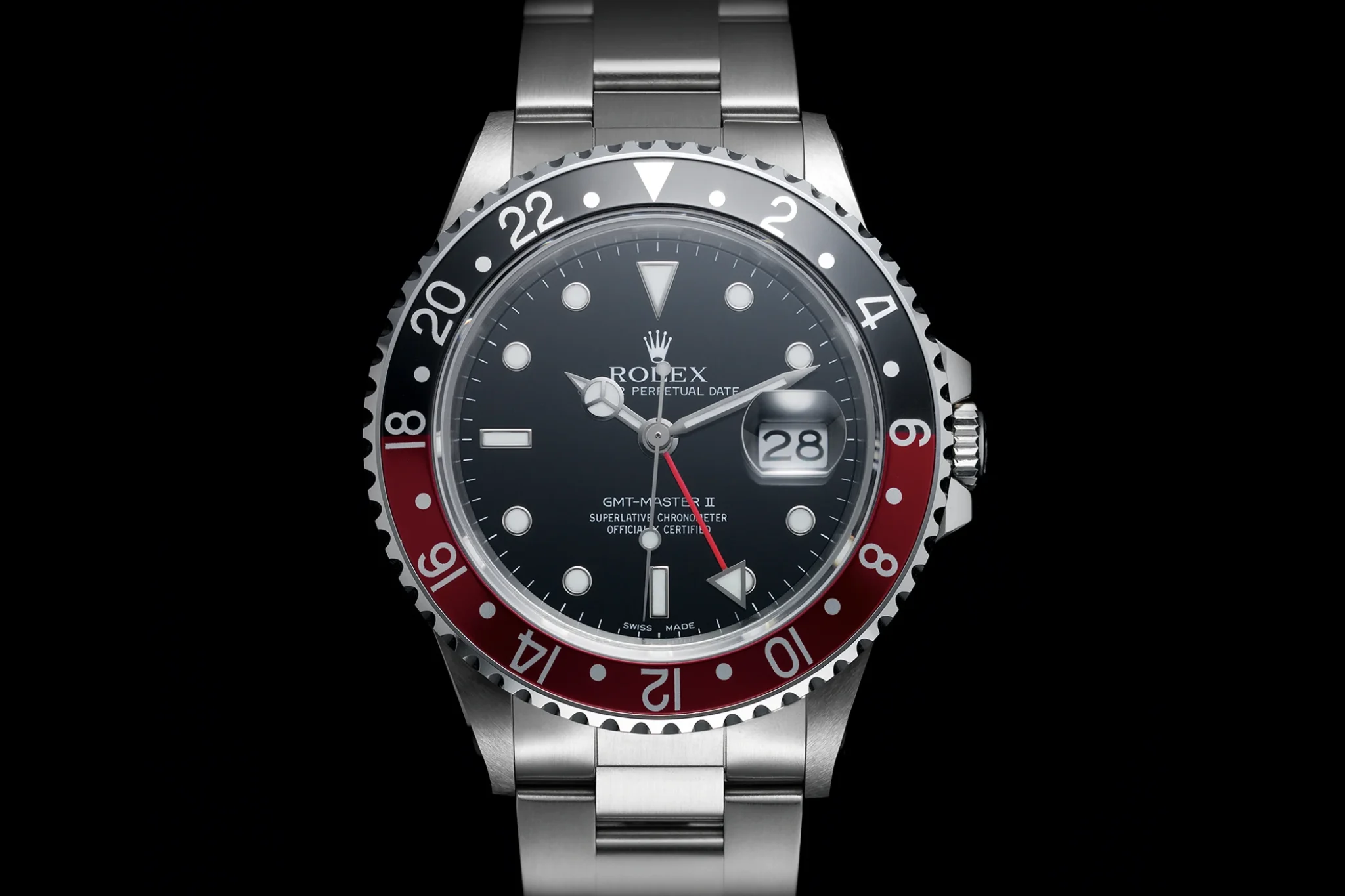
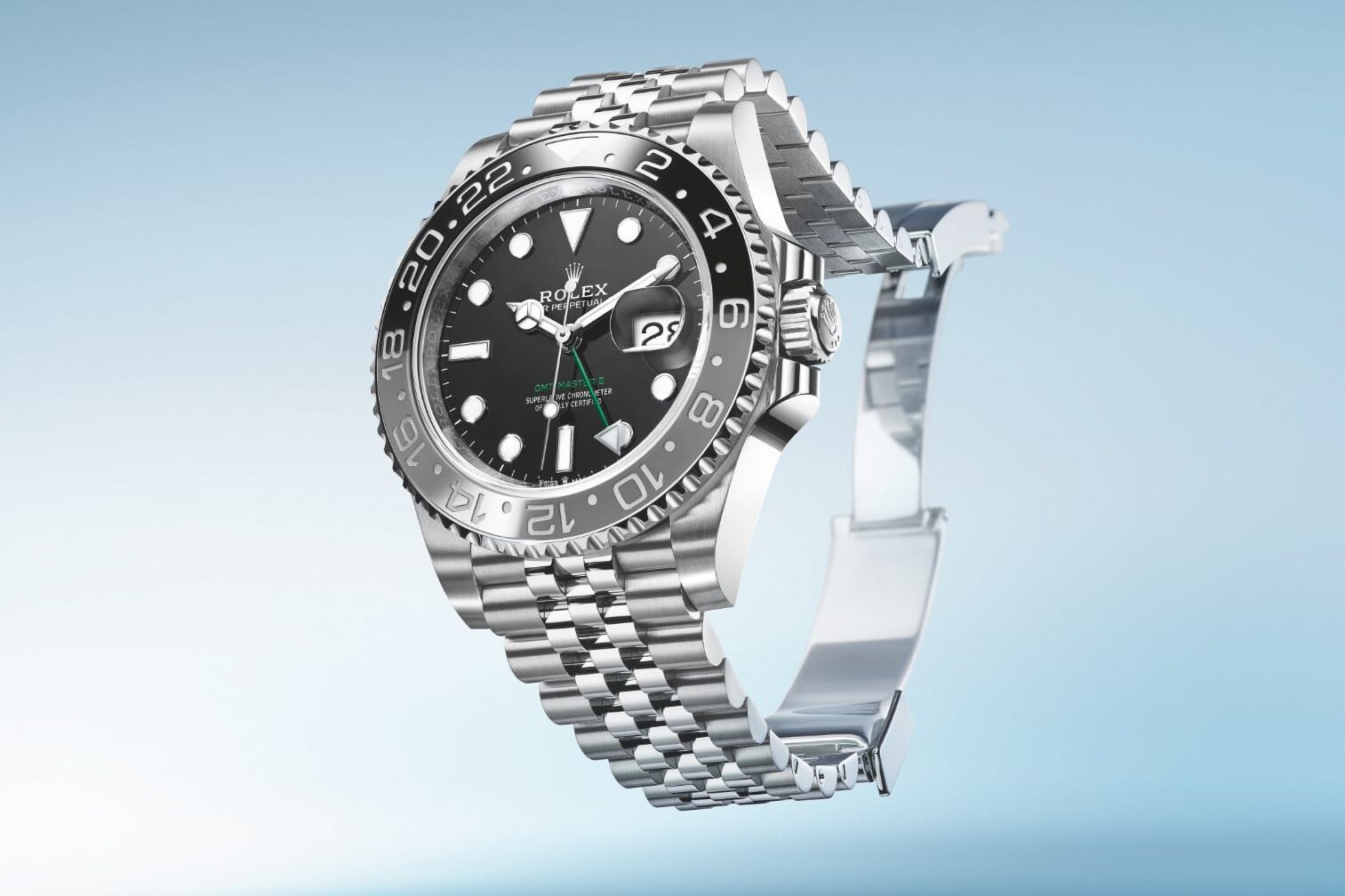
More Rolex watches with sapphire crystal casebacks?
As Rolex plans for the long term and keeps a close eye on the market, we assume that there may be some interesting innovations on the back of the watch cases: how will the chosen path of making the robust and durable Rolex movements further visible and shining through glass case backs, as already seen in the beautiful Rolex Oyster Perpetual Cosmograph Daytona 24h LeMans 126529LN with finished movement or the 1908 model, be continued? However, decorated watches now also mean significantly higher costs and with the aforementioned price increases, this could be counterproductive.
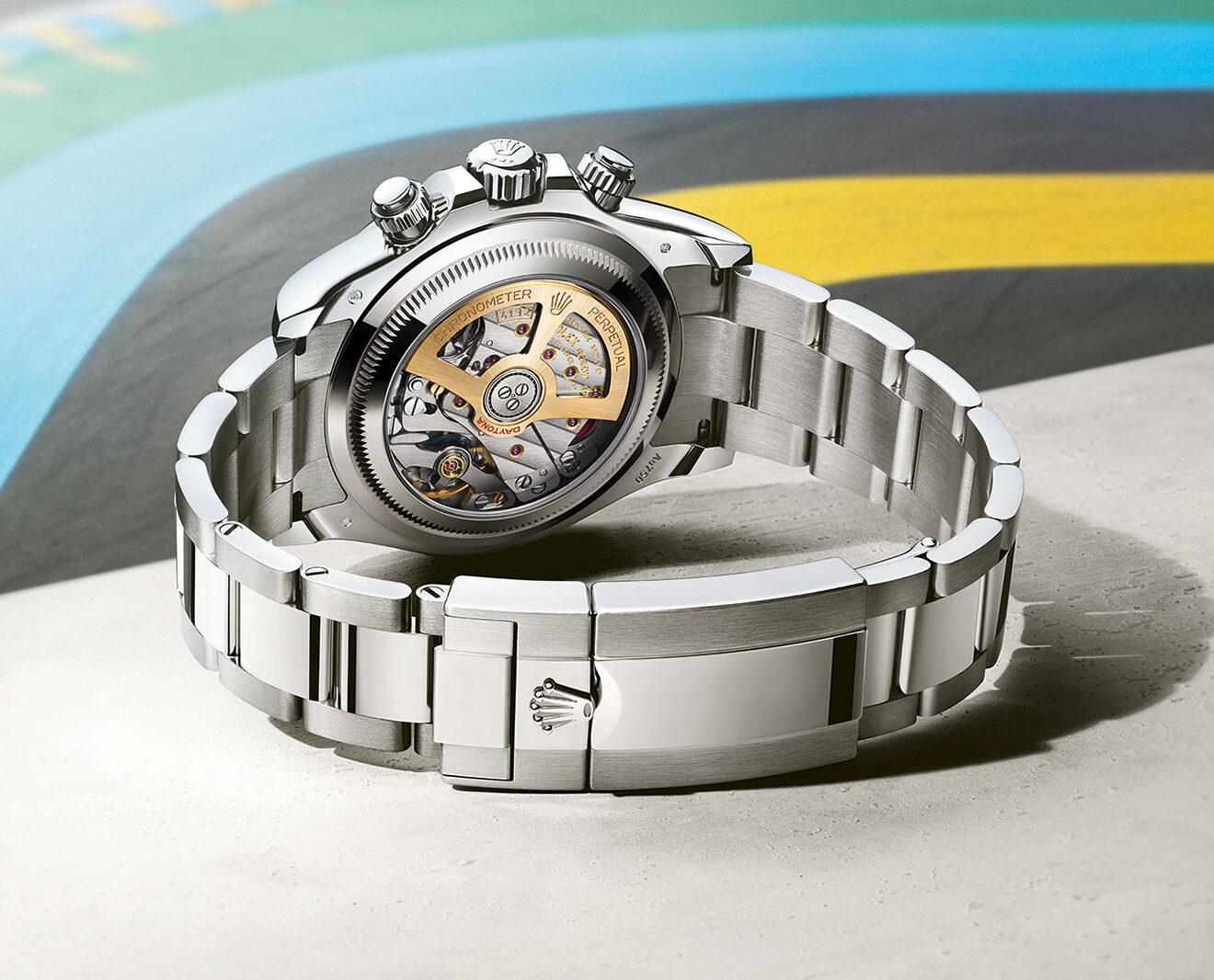
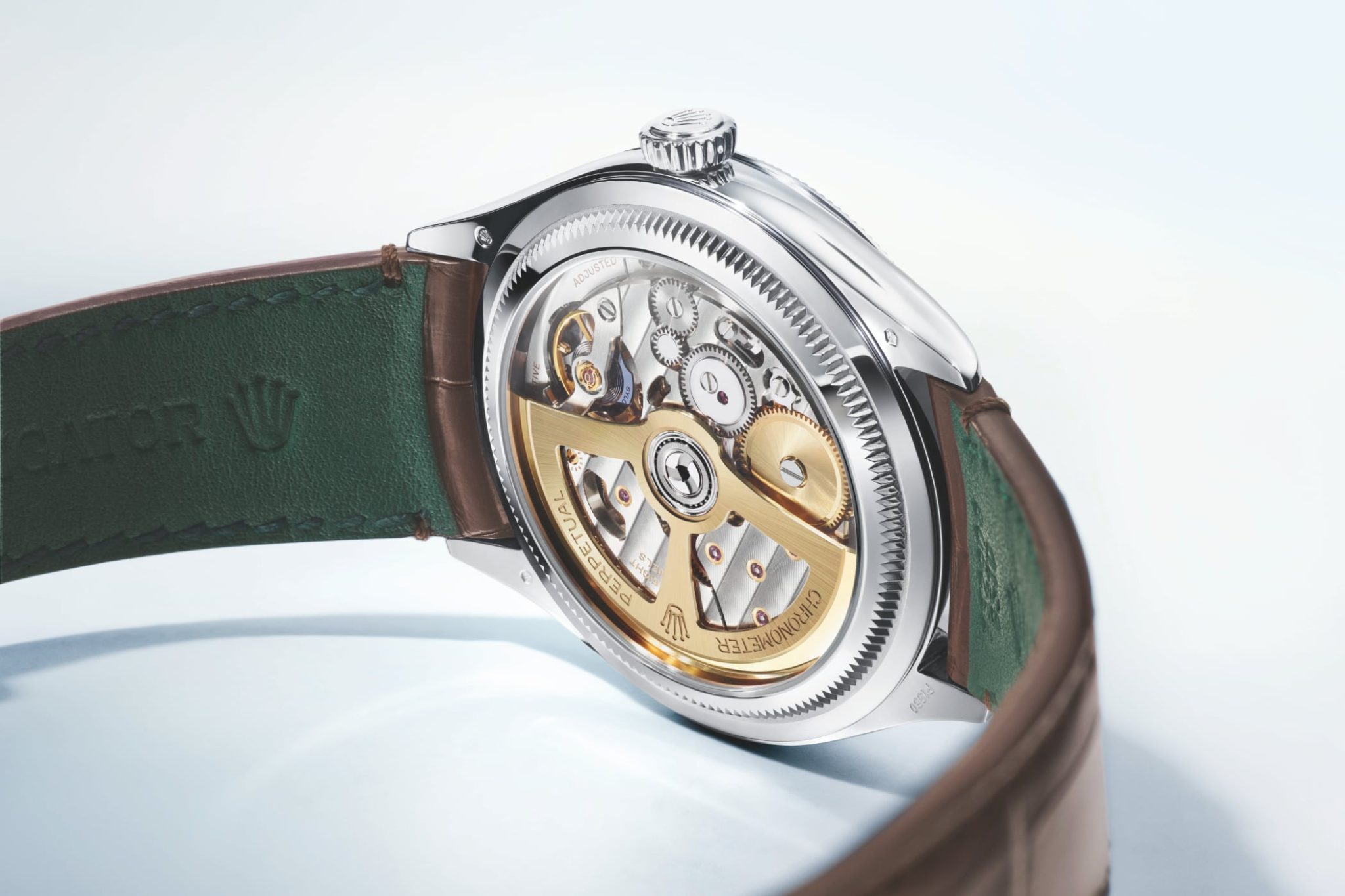
Audemars Piguet celebrates its 150th anniversary
But back to the passage of time. After 165 years, as with TAG Heuer and Panerai, there is one of the most important anniversaries of the year: Audemars Piguet is celebrating its 150th anniversary. A few years ago, Audemars Piguet began construction of a new 100,000 square meter production facility in Meyrin, not far from the company’s current traditional headquarters. The project will be completed in 2025 and includes the restoration of an older production facility on the site. It will house 350 employees. What will happen inside? In an interview with Bloomberg at the ground-breaking ceremony, outgoing CEO François-Henry Bennahmias said that he expects production to increase from around 50,000 watches today to 57,000 in 2025.
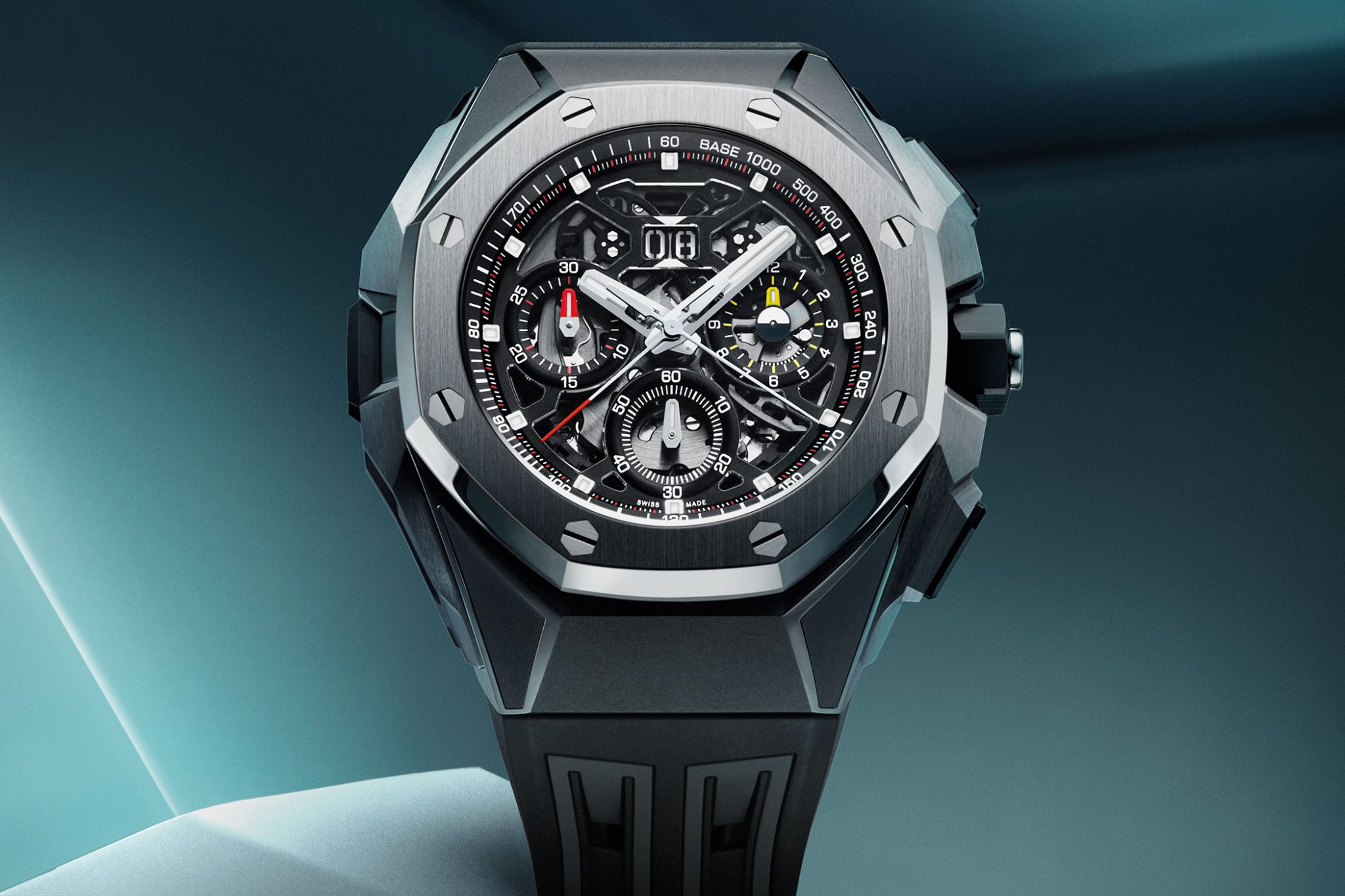
2025 will be the test year for the new CEO of AP, Ilaria Resta
But before the inauguration takes place, the new CEO Ilaria Resta has to show what she can do. One of the most talked-about changes of Chief Executives in the watch industry in recent years took place exactly one year ago in January 2024. There has been much discussion about her suitability and her Procter & Gamble past, and even if she cannot have developed many of the possible anniversary watches herself (that would take years), she will be judged on exactly this one year after taking office.

100 years: Patek Philippe has something interesting to offer
Let’s move on to the important number 100. The German watch brand Laco from Pforzheim is rather unknown, but is celebrating its 100th anniversary. Laco is known for its pilot’s watches and is certainly celebrating this anniversary with special editions. In addition to the watch magazine Europa-Star, which many Swiss people will be familiar with, Patek Philippe is also celebrating a small but significant 100th anniversary: the world’s first wristwatch with a perpetual calendar (No. 97 975) was presented in 1925. In addition to the 100th anniversary of the first Patek, Patek could also mark the 40th anniversary of the Patek Philippe Ref. 3940 with a perpetual calendar. Perhaps the engineers will come up with something that surpasses IWC’s Portugieser Eternal Calendar presented last year? Both will certainly be reason enough for owner and CEO Thierry Stern to present himself as an early innovator in the field of complicated wristwatches. But whether the Genevans do it or not: both original models are simply too beautiful to leave their birthdays unmentioned.
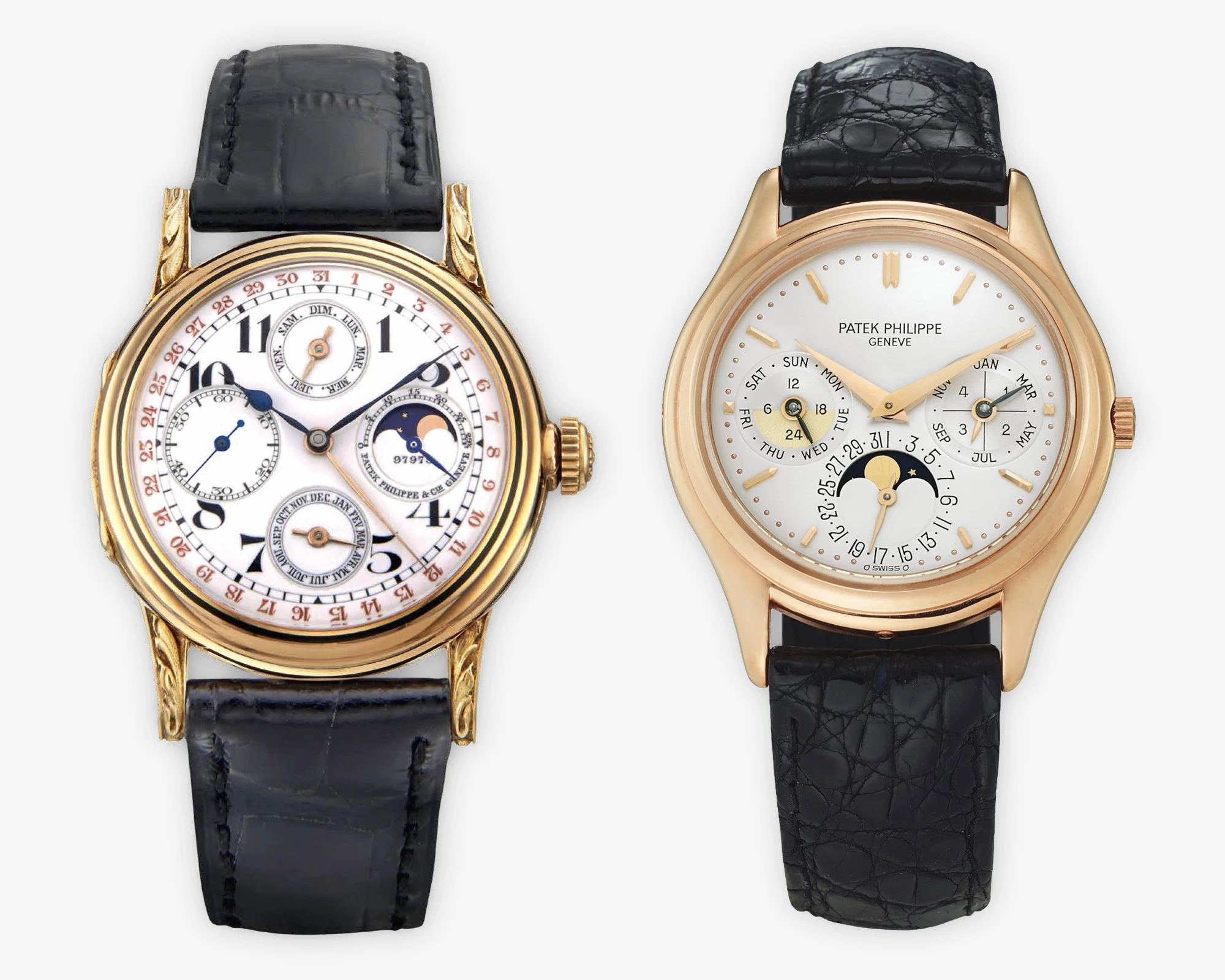
Credit © Sotheby’s
What is happening at Jaeger LeCoultre? A new, well-known CEO.
Speaking of beauty: Jaeger-LeCoultre’s wristwatch, the Memovox, is celebrating its 75th birthday. Since the first of January, someone who knows it better than any other CEO before him has taken the helm again. For Jerome Lambert, it’s back to the roots: Lambert and Jaeger have been linked for 17 years and six months, including eleven years as CEO, before he was called to greater things at Richemont and was responsible for all Richemont watch brands and the entire group, after heading Montblanc for almost four years. Who, if not he, who began his career as financial controller at Jaeger-LeCoultre in 1996, could really help this brand to finally realise its full potential?
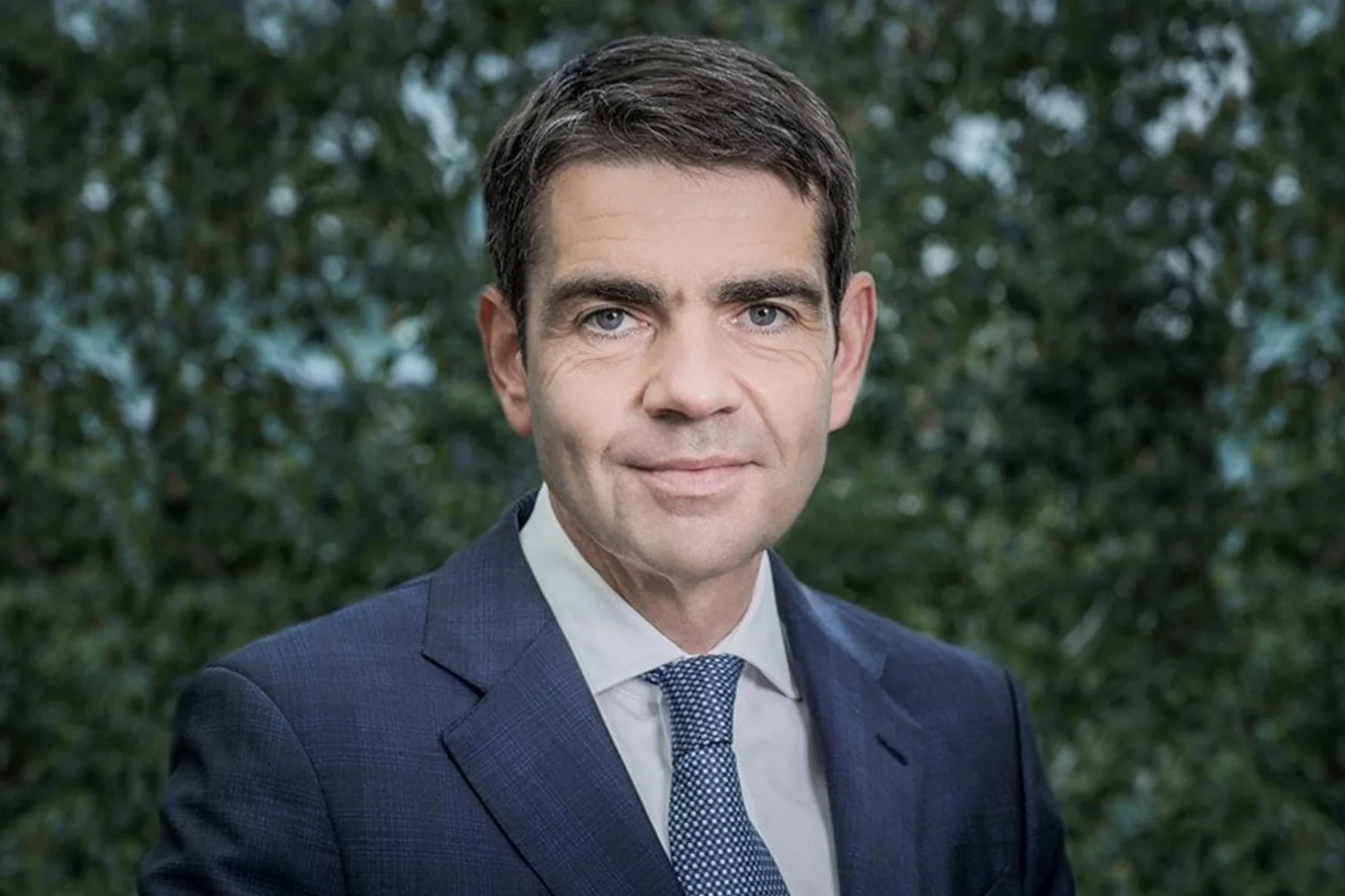
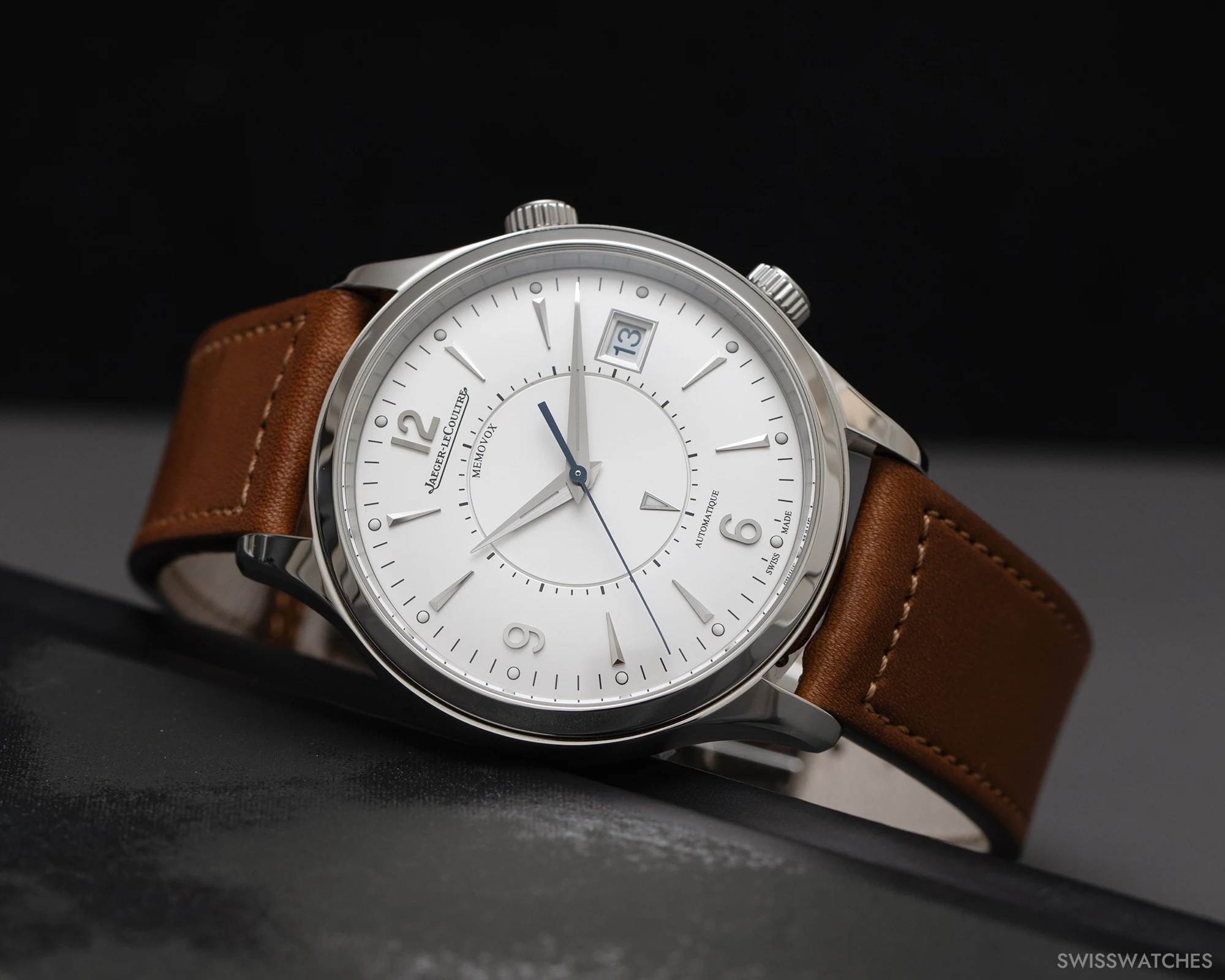
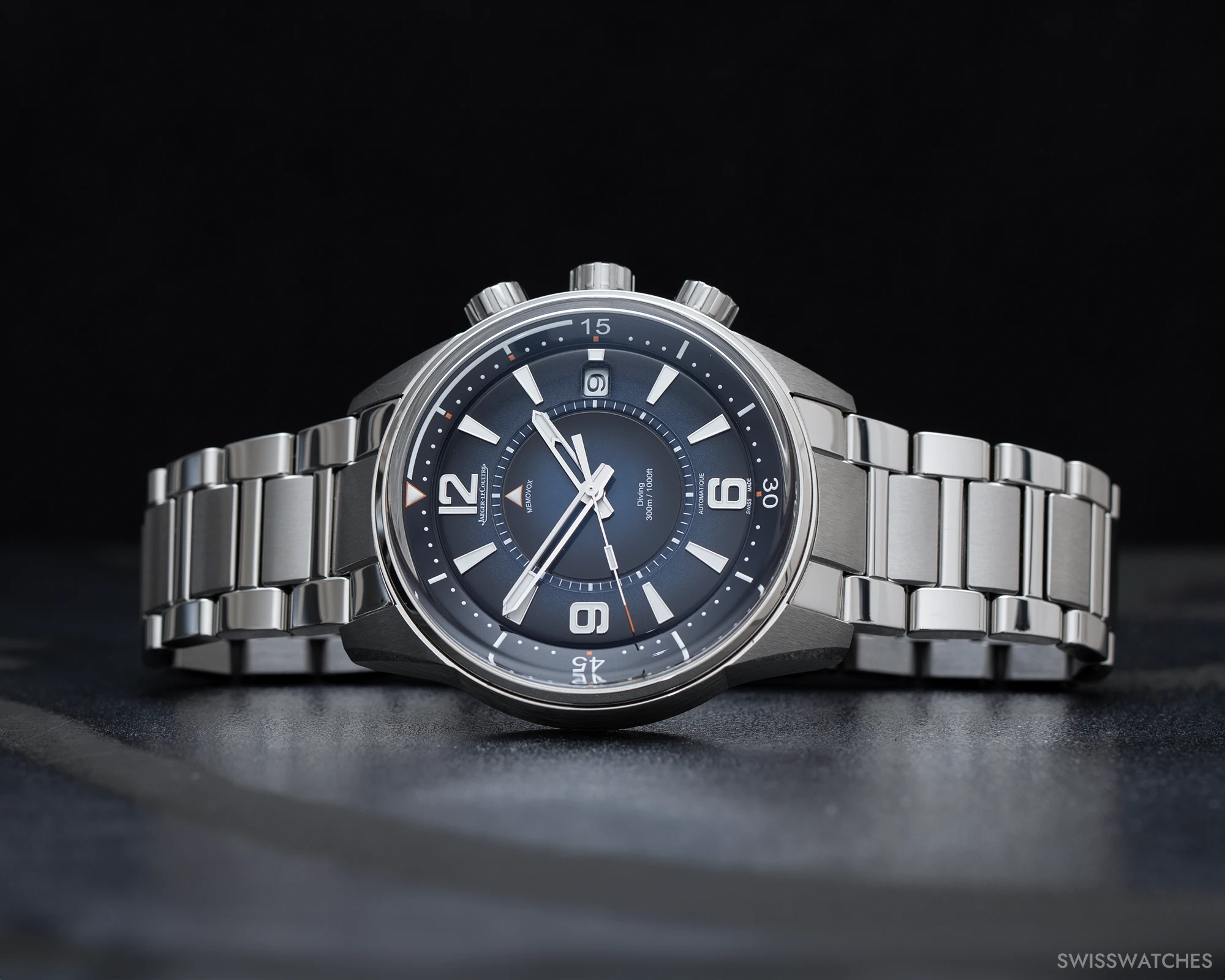
70 years old: The name Polerouter from Universal Genève
An old acquaintance first has to develop this kind of potential again. The Universal Genève brand, which is not due to really pick up speed again until 2026 under the leadership of Breitling, celebrated the 70th anniversary of the first commercial flight of the SAS over the North Pole this winter and with it the legendary Polerouter collection, whose name was not introduced until 1955. In the same year, the watch was also equipped with the special calibre 215 with micro-rotor for the first time. The Polerouter, designed by the famous designer Gérald Genta, was launched in 1954 under the name Polarouter with ‘a’ at Universal Geneve.
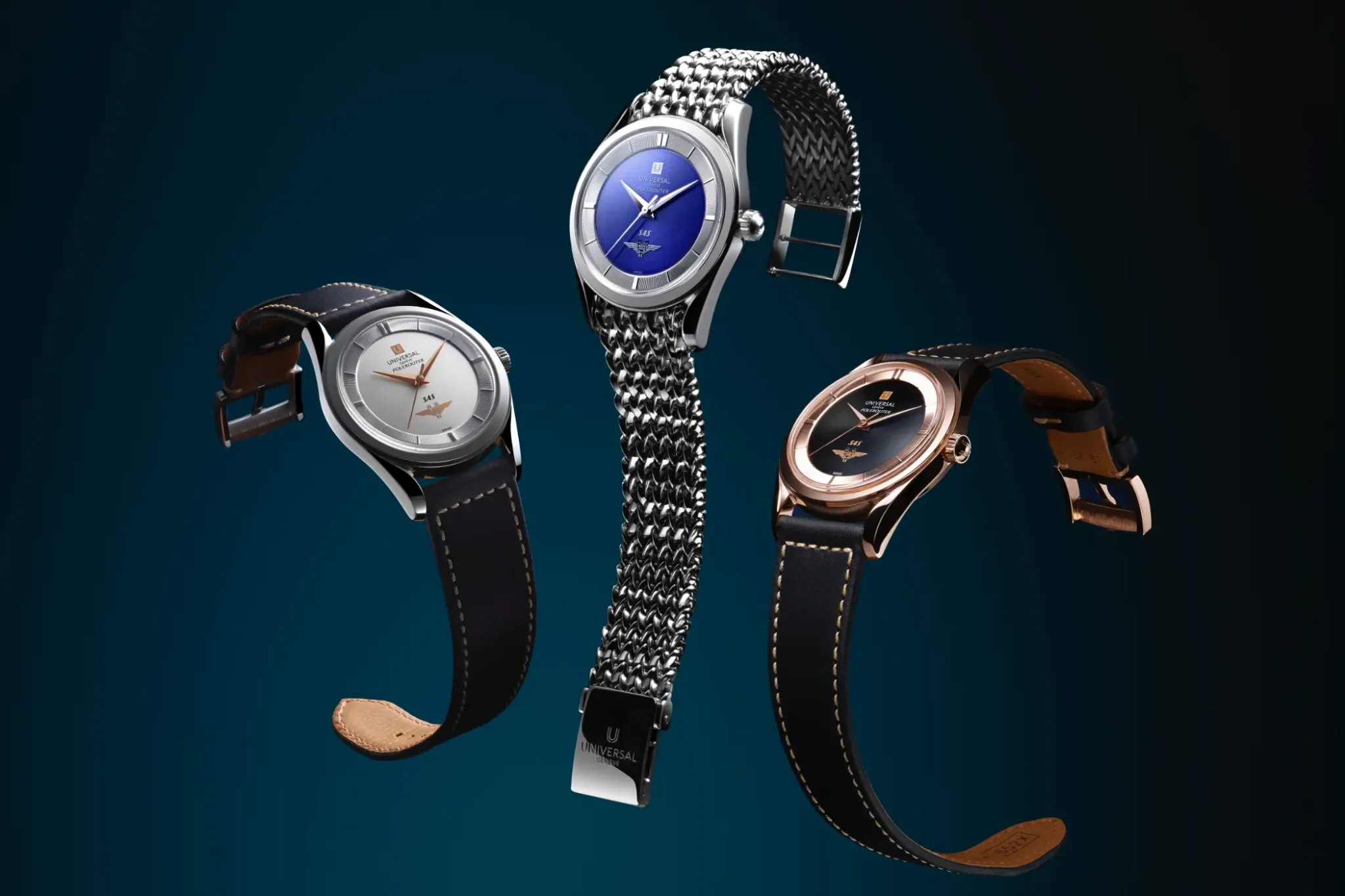
Grand Seiko turns 65 years old
Finally, let’s move on to the smaller numbers, which could bring equally exciting news. Having only been a household name in Europe for a few years, Seiko launched its luxury brand Grand Seiko back in 1960. Incidentally, the first Grand Seiko had a balance frequency of 2.5 hertz and a rate accuracy of +12 to -3 seconds per day with a power reserve of 45 hours.
50 years: Swiss manufacture Girard-Perregaux celebrates the Laureato
GP is celebrating the 50th anniversary of the Laureato collection, which was first presented in 1975. Originally presented as a quartz watch, the Laureato has since earned its place among other mechanical steel sports watch icons of the 1970s, such as the Patek Philippe Nautilus, the AP Royal Oak and the IWC Ingenieur, which were created by the aforementioned famous watch designer Gérald Genta.
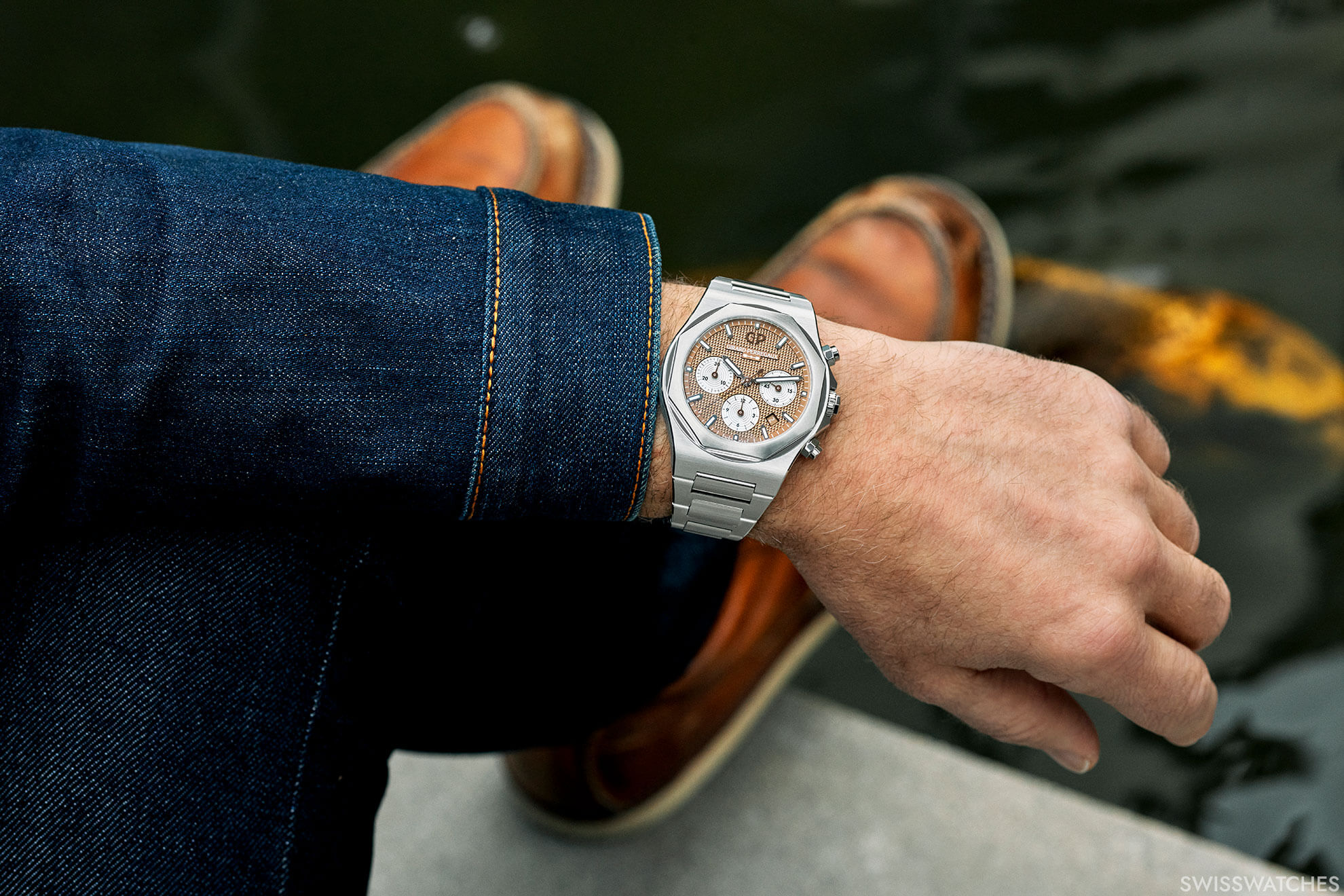
The watch company Gerald Charles celebrates a quarter of a century
And it is for this exceptional designer, without whom the watch industry would look very different today, that we jump once again in this line-up: in 2000, Gérald Charles Genta founded his third watch brand, Gerald Charles SA. After designing the Constellation and the Pasha with watch manufacturers such as Omega and Cartier, and having already sold his brand name Gérald Genta (the trademark rights were later sold to LVMH and Bulgari), he wanted to give it another go: the dynamic company with baroque case shapes will definitely be celebrating its anniversary. Federico Ziviani became CEO in 2018 and is relying on designer Octavio Garcia, who worked for Audemars Piguet for ten years and even still worked with Gérald Genta personally.
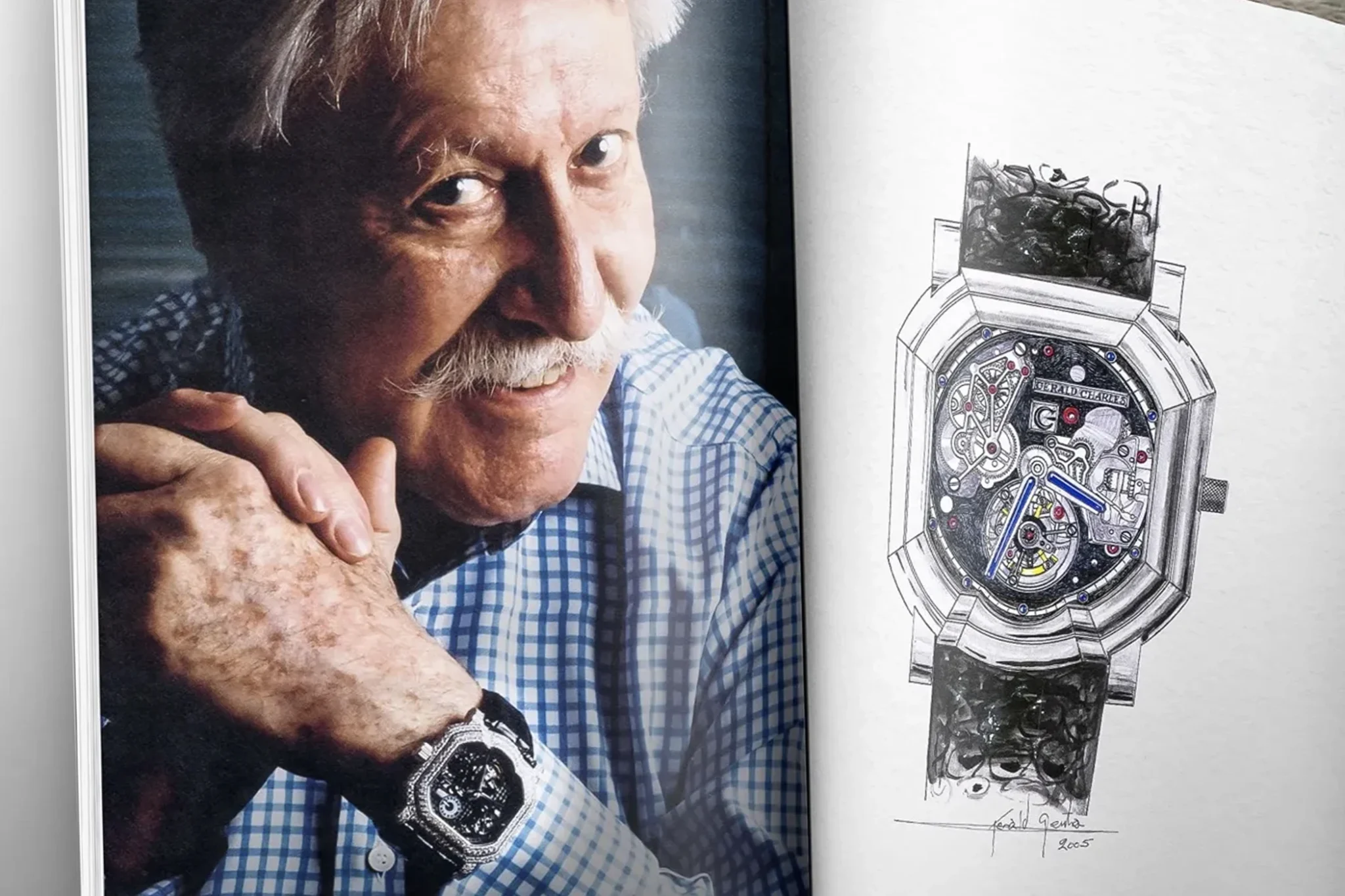


Hublot turns 45, while Bulgari has been making watches in Switzerland for just as many years
Nobody is celebrating a milestone 50th birthday this year, but it is not only the Swiss manufacturer of Bulgari watches, Bulgari SA, that is turning 45. Hublot, the company founded by Carlo Crocco in 1980, is also turning 45. Much more important for Hublot in the year 2025 is the fact that the Big Bang series was launched 20 years ago under its then owner Jean-Claude Biver. Julien Tornare has only been the new CEO at Hublot since July 2024 and must see what means he will use to make Hublot the new cool again, as Jean-Claude Biver once did. As much as World Cup sponsorships have ensured brand awareness, the question is whether the brand can move away from its footballer watch image. In our opinion, the novelties of recent years are certainly heading in the right direction, be it the new Big Bang Integrated Time Only models in 38mm, which were introduced last year, or the ever-growing, highly innovative and technical Masterpiece collection.
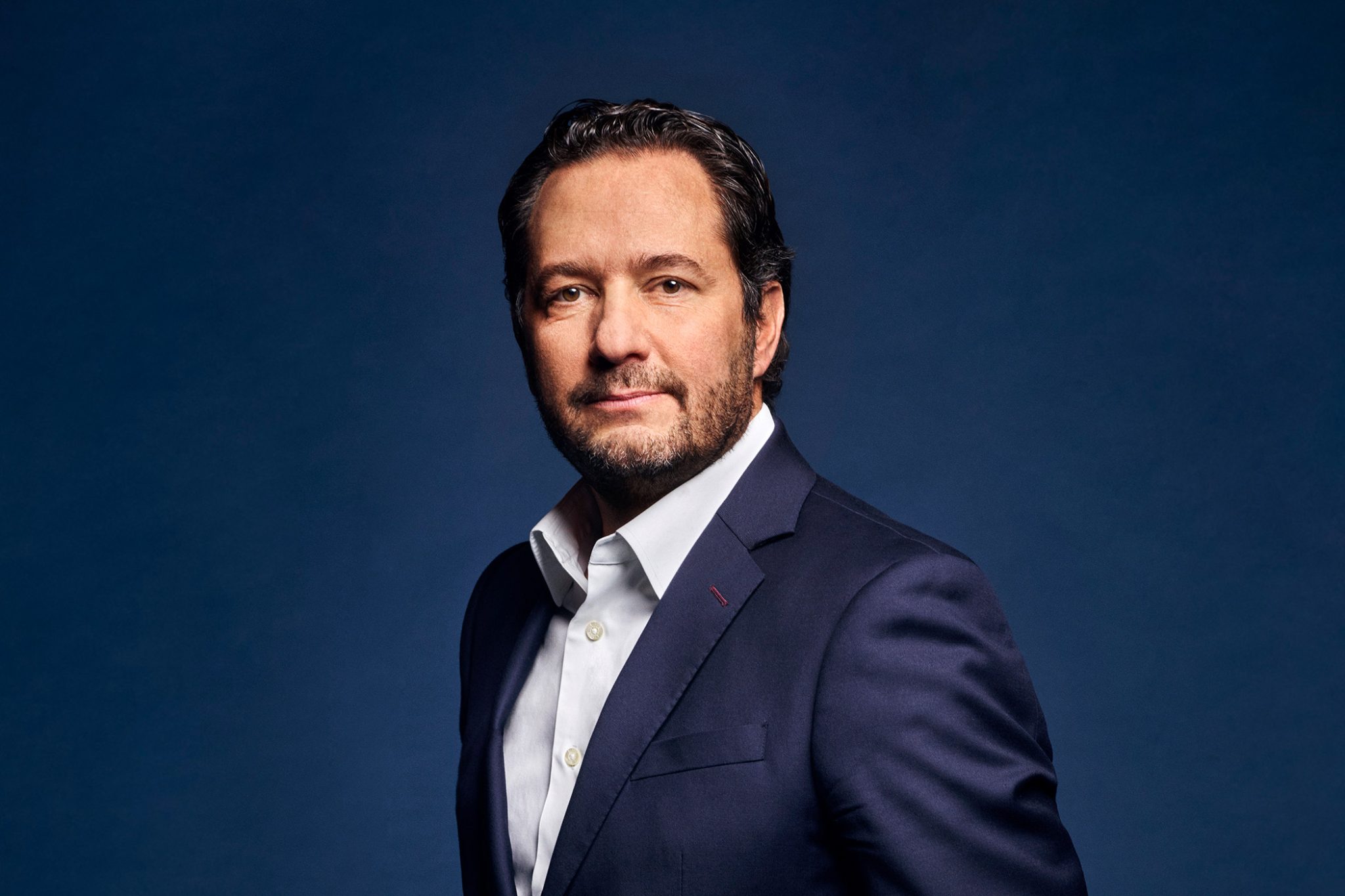
Nomos celebrates 35 years of its own watches and 20 years of its own movements
There is also another fine anniversary in Germany: the company Nomos Glashütte was founded in 1990 by the Düsseldorf photographer Roland Schwertner. The company name, taken up 35 years ago, refers to the Nomos watch company Guido Müller & Co. which imported Swiss watches to Saxony from 1906 to 1910. However, Nomos, now Germany’s largest watch manufacturer, has been using only its own movements for the past 20 years, most of whose components come from its own manufacture. For the past eleven years, these have been successively equipped with the in-house assortment (“Nomos Swing System”).
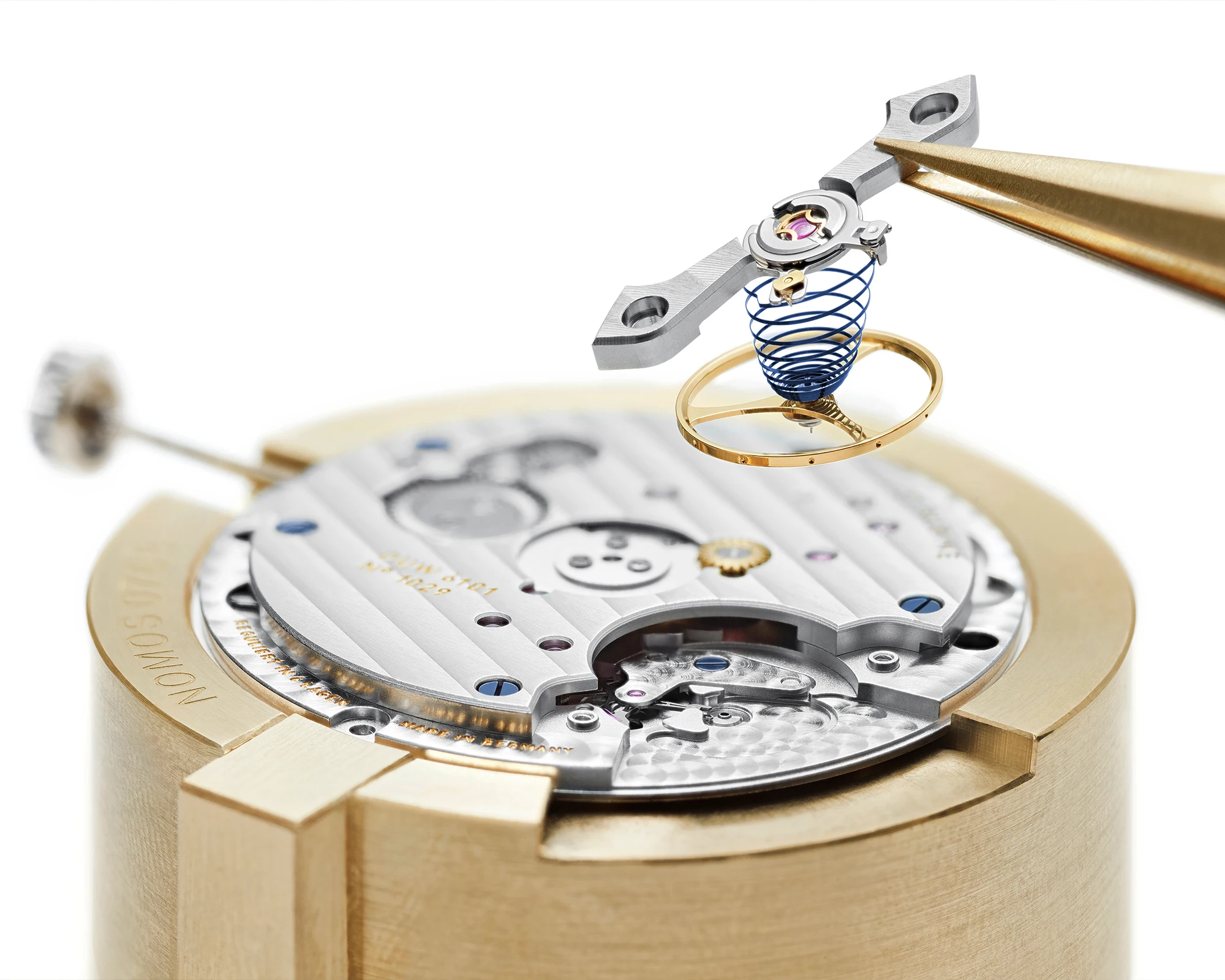


Is the enfant terrible of the watch industry, Roger Dubuis, finally growing up at the age of 30?
On his 30th birthday, I hope that Roger Dubuis, the former enfant terrible of the Swiss watch industry, will perhaps make a somewhat more relaxed statement alongside all the watches that are outstanding in terms of craftsmanship, such as the Knights of the Round Table.
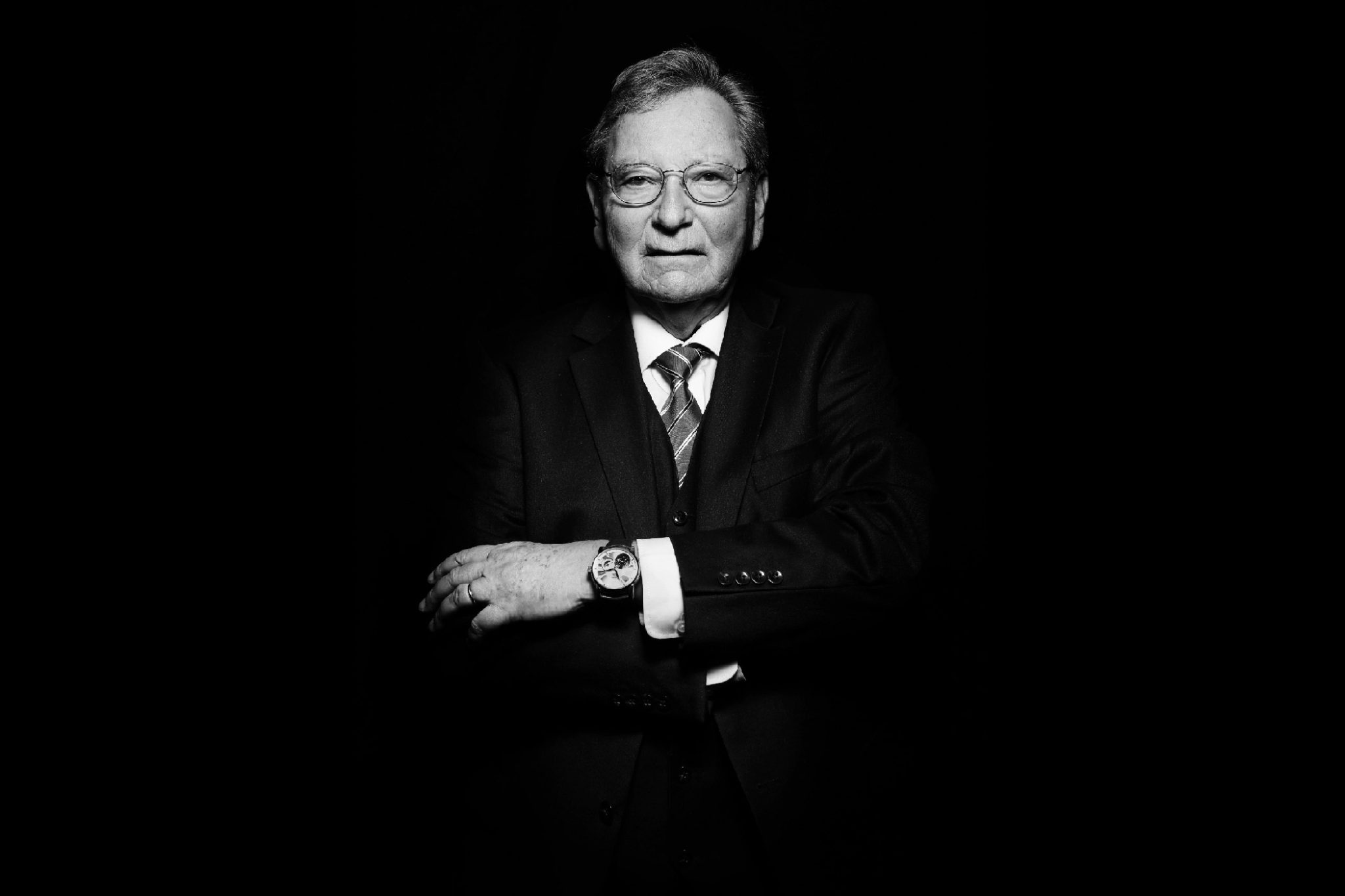
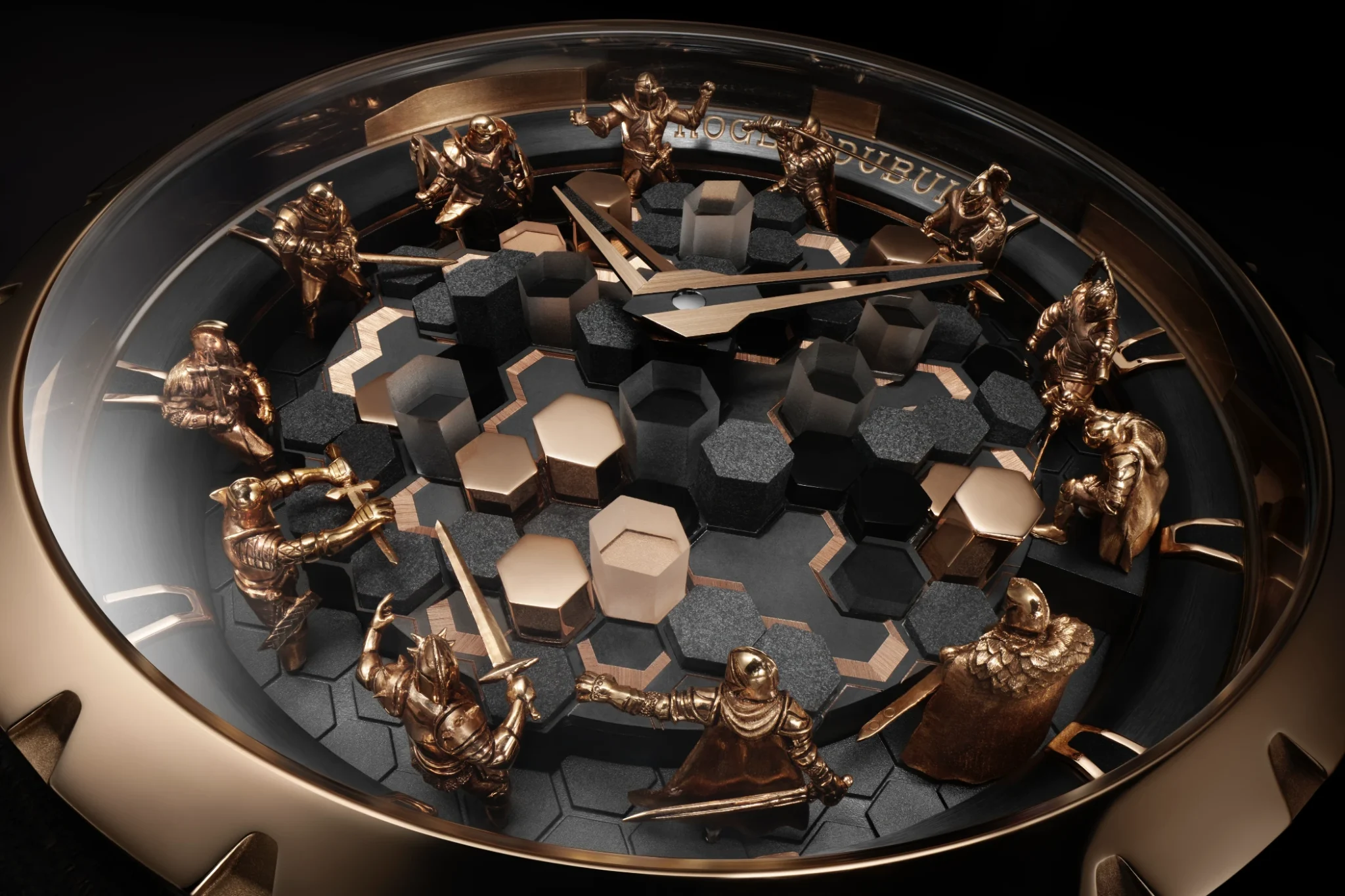
What’s happening with the millennials of watchmaking: 20 years of MB&F
The 20th anniversary of MB&F is certainly one of the most amazing stories in the watch industry of the last two decades: Max Büsser began his career at Jaeger-LeCoultre, moved to Harry Winston where he was appointed Managing Director in 1998, until he finally made a name for himself with the founding of his watch brand MB&F in 2005. His ‘horological machines’ established the innovative spirit of the so-called independents of the watch world, which continues unabated to this day: it will be interesting to see how Chanel’s more recent involvement will affect his creations in the future.
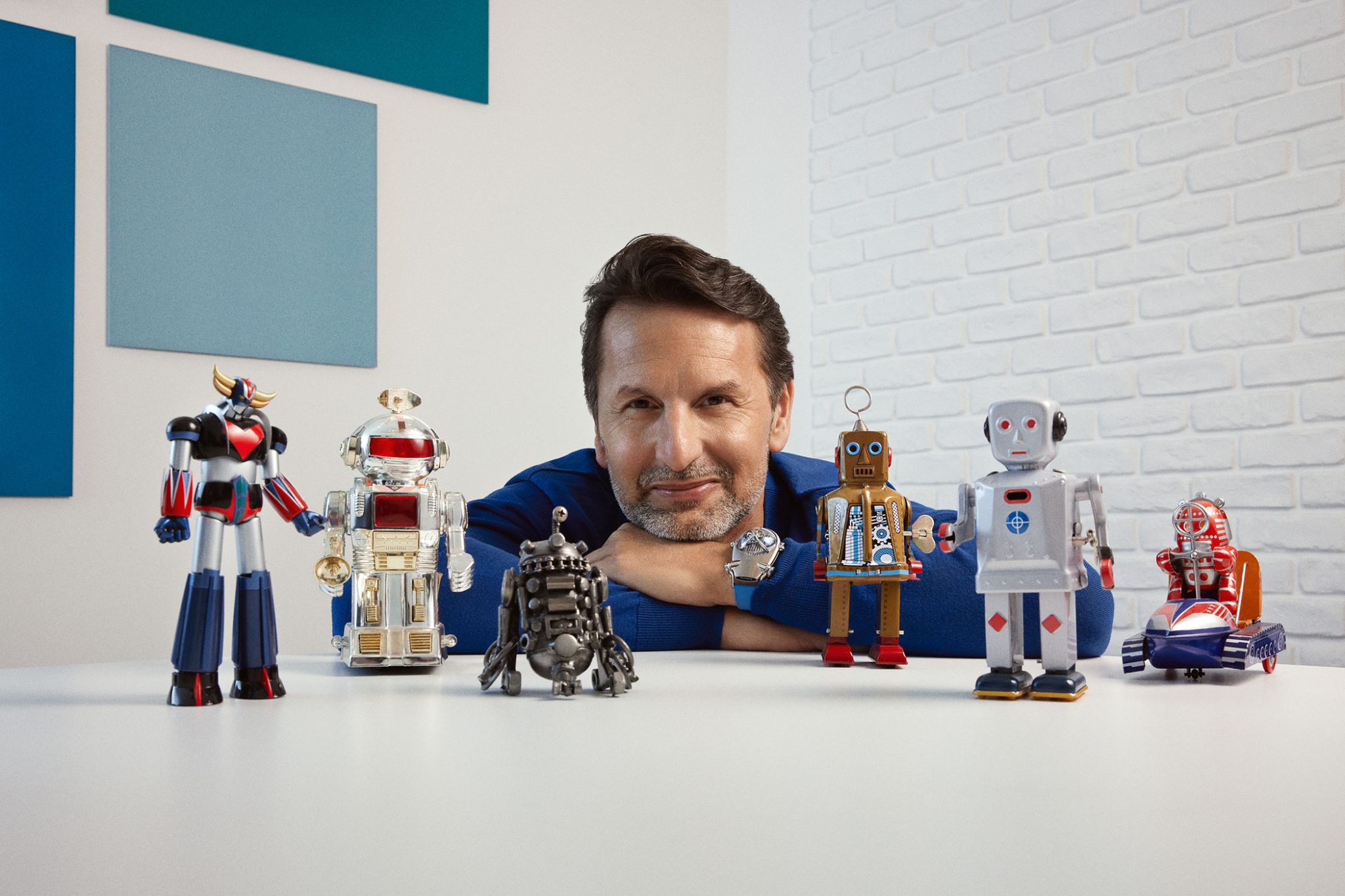
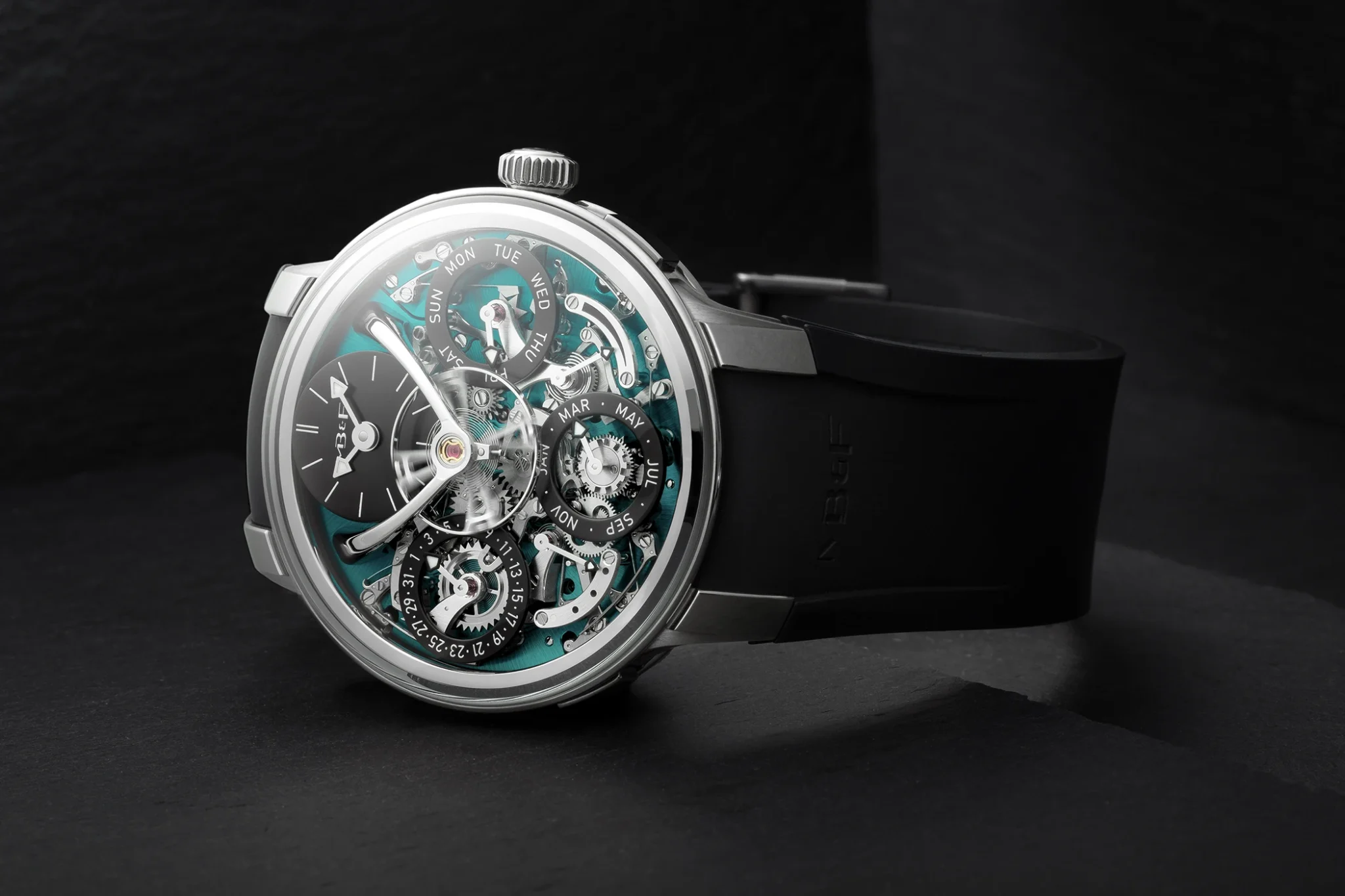
For 20 years: Richard Mille watches for ladies
And while Richard Mille is already celebrating the 20th anniversary of its ladies’ watches, Czapek is celebrating the tenth anniversary of its comeback. As professionals will know, the partnership between François Czapek and Antoine Norbert de Patek lasted just six years. After their contract expired in April 1845, both continued to produce timepieces. On May 1, 1845, Czapek founded the company Czapek & Cie. with a new partner, Juliusz Gruzewski, which later disappeared. As is well known, the other company became Patek Philippe.
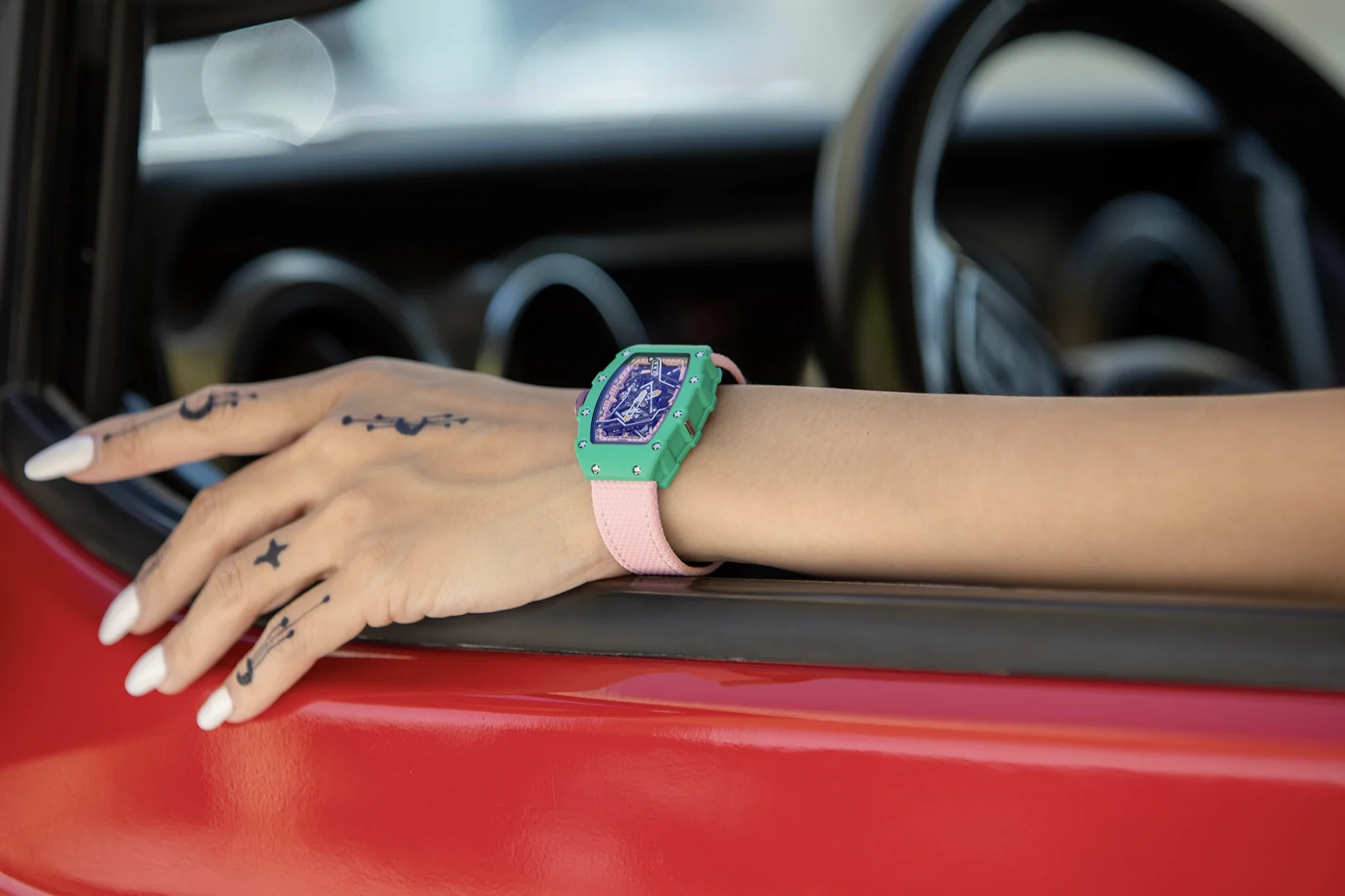
PART3
What are the most important design trends we can expect to see in 2025?
So, still with us? Let’s move on to the design and detail trends we might see. Our fellow industry colleagues over at Hodinkee-Radio recently discussed the experts’ expectations for 2025. The contributions are very informative, as they also provide a picture of what is happening on the other side of the Atlantic. I present the most important results here in context.
Looking back instead of forward
Many companies are clearly struggling to see the future positively in a highly volatile and crisis-ridden world. They prefer to reassure themselves of their own origins and past. Vintage re-editions are described by their US colleagues as ‘the easy path’ and the Zenith Diver, for example, is discussed as an apt example. What they mean by this is that instead of introducing new models without any heritage, which may take years to be recognised by customers, they prefer to focus on their own history, which also charges the brand emotionally and makes it more valuable for collectors. Breitling’s announcement to reintroduce Universal Genève as a historic watch brand goes in the same direction, at least if you look at the re-editions of the Polerouter presented in winter 2024. You can’t get more retro than that.
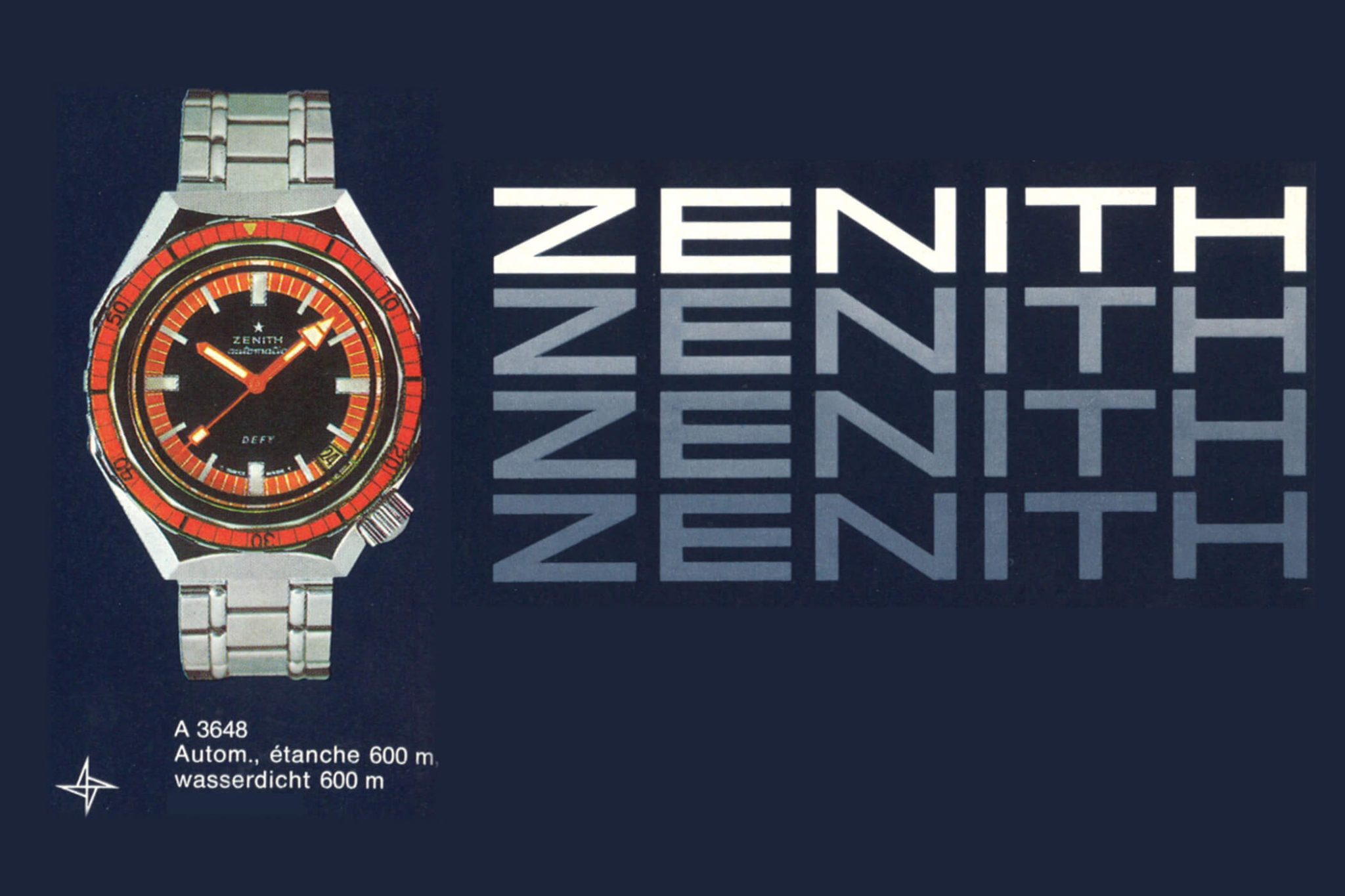
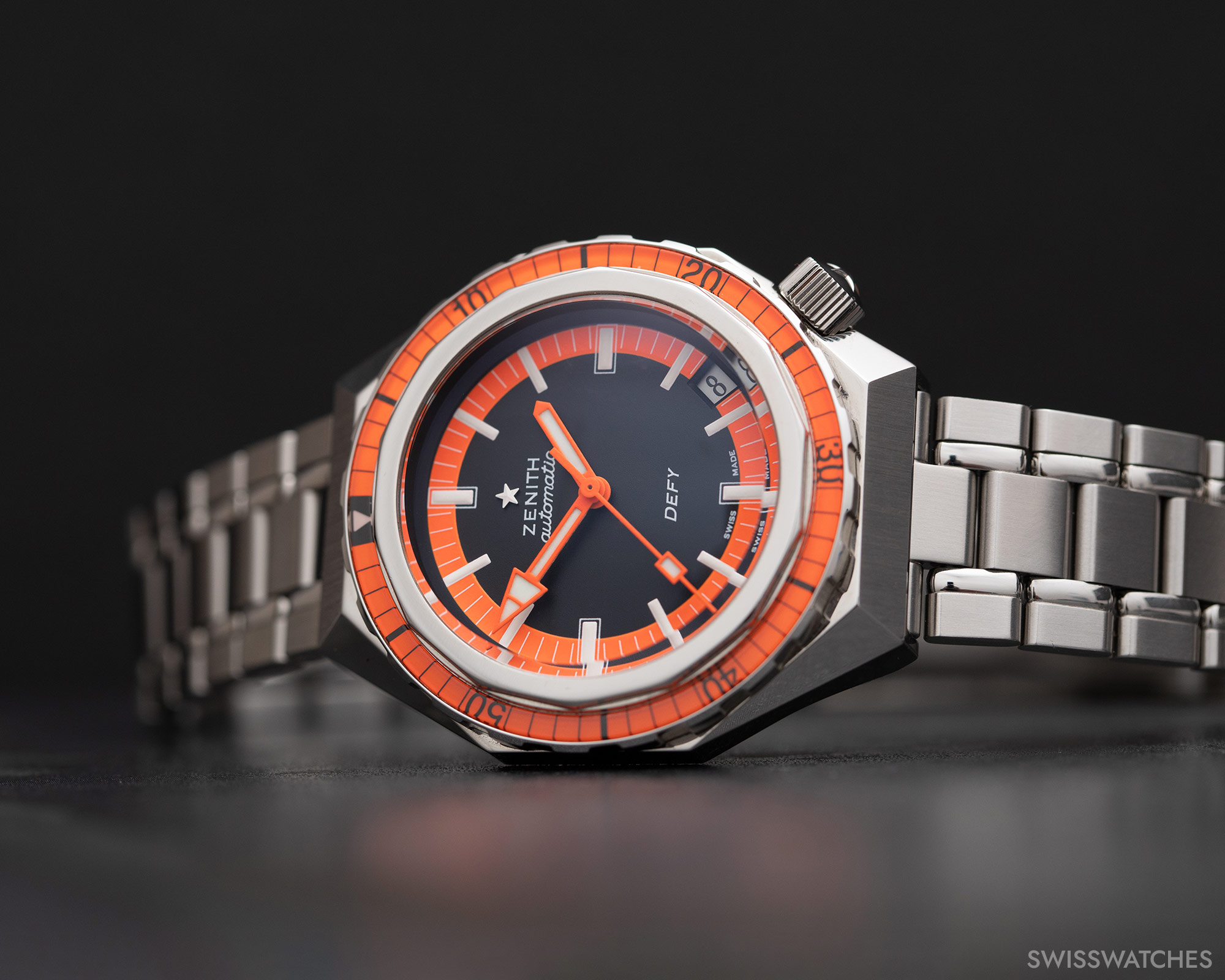
We can only confirm that Omega, on the other hand, is described as one of the very few exceptions where a company manages to balance innovation for the future with a look back to the past. However, it must be added here that Omega fans would like to see more price stability in the pre-owned market in addition to the few top models.
These companies are facing the biggest challenges
For Hodinkee, Hublot and Jaeger-LeCoultre are not only anticipating turbulent times ahead, but also navigating significant changes within their own ranks. Hublot has a new boss, while Jaeger has brought back its former one. There’s no doubt both brands need to strengthen their connection with customers. The big question for both is: what do they stand for? What are their core messages? According to Hodinkee, one recommendation for Hublot could be to recapture the boldness of its Biver years. For Jaeger-LeCoultre, as suggested by their recent anniversaries, it could be about rediscovering the Memovox. After all, one of the few truly practical functions of a modern mechanical wristwatch is an alarm. Useful mechanical complications like those in the historic Deep Sea Alarm are notably absent from the industry today, according to our colleagues. With exceptional limited-edition models, Jaeger could be one of the few brands capable of outshining the entire industry at a top level. It’s about finding products outside of the Reverso that resonate emotionally with customers. The question remains, though: what does Jaeger-LeCoultre have to offer the sports watch enthusiast who seeks more watchmaking than a Rolex, but still wants a sports watch?
Value for money – from Blancpain of all companies
Even if it has certainly horrified some hardcore fans, nobody can ignore the enormous success of the two most important collaborations of recent years. The Omega Swatch doesn’t interest us at Swisswatches that much, even though it has sold over 1 million units, as we only cover mechanical watches, but the Bioceramic Scuba Fifty Fathoms Collection with the black Ocean of Storms variant is more interesting. A mechanical watch with the image of a top brand for around 600 euros, which is water-resistant to a good 100 metres and refers to a fascinating story without appearing silly, is perhaps pretty much exactly what Robin Swithinbank meant in his manifesto ‘The United States of Watchmaking’ on Watch Pro: ‘Build more watches like this so that young people get excited about watches and really save up for the expensive original at some point.’ (Here is the link).
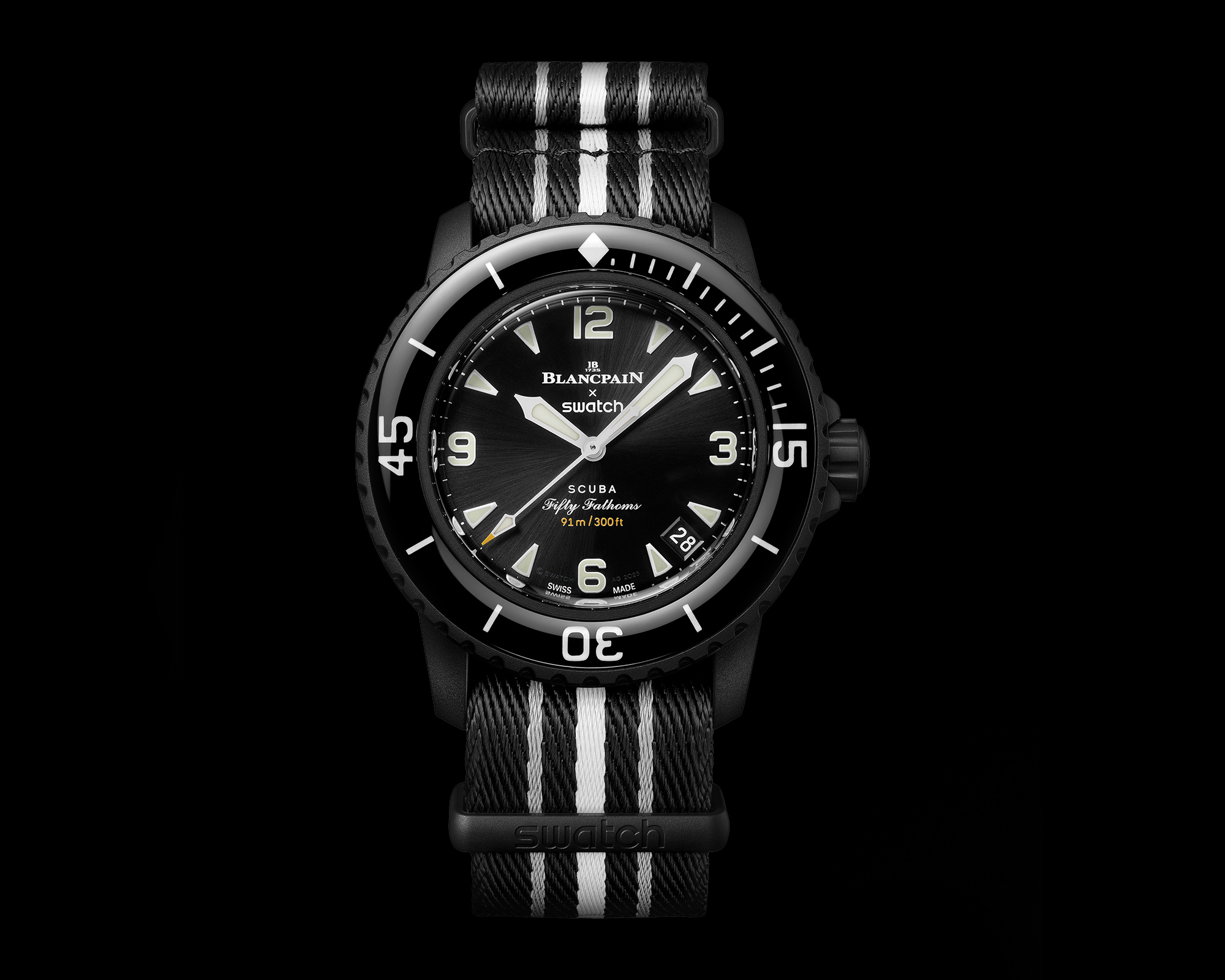
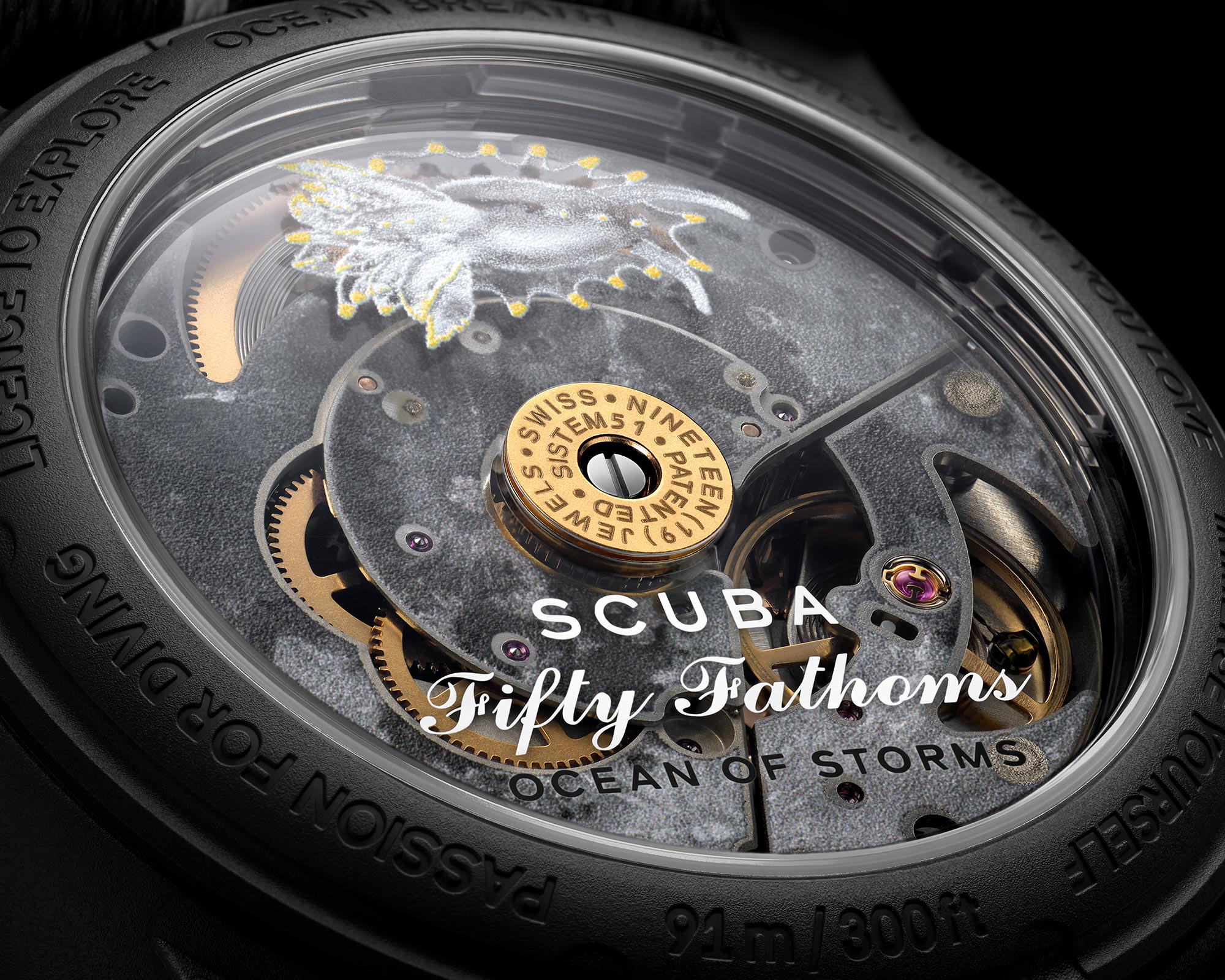
Which material and colour trends could become important in 2025?
The Chrono24 pre-owned watch platform is very familiar with statistics and records them systematically, so we have taken a look at what the largest pre-owned car dealer predicts here and put it into context.
Titanium is the new standard for sports watches
My colleague Thomas Hendricks writes about the rise of titanium as the material of the hour. His colleagues assume that it will prevail as a material for top sports watches. Will Rolex launch further models after the Yachtmaster 42 with its own titanium RLX alloy? Personally, I can only wish for models like the Deepsea Cameron instead of the all-gold model we described above. The Explorer could also do with a titanium case (and please reduce it to 41 millimetres, but that’s my personal opinion). And even if the Milgauss were to make a comeback, the non-magnetic material would make a lot of sense.
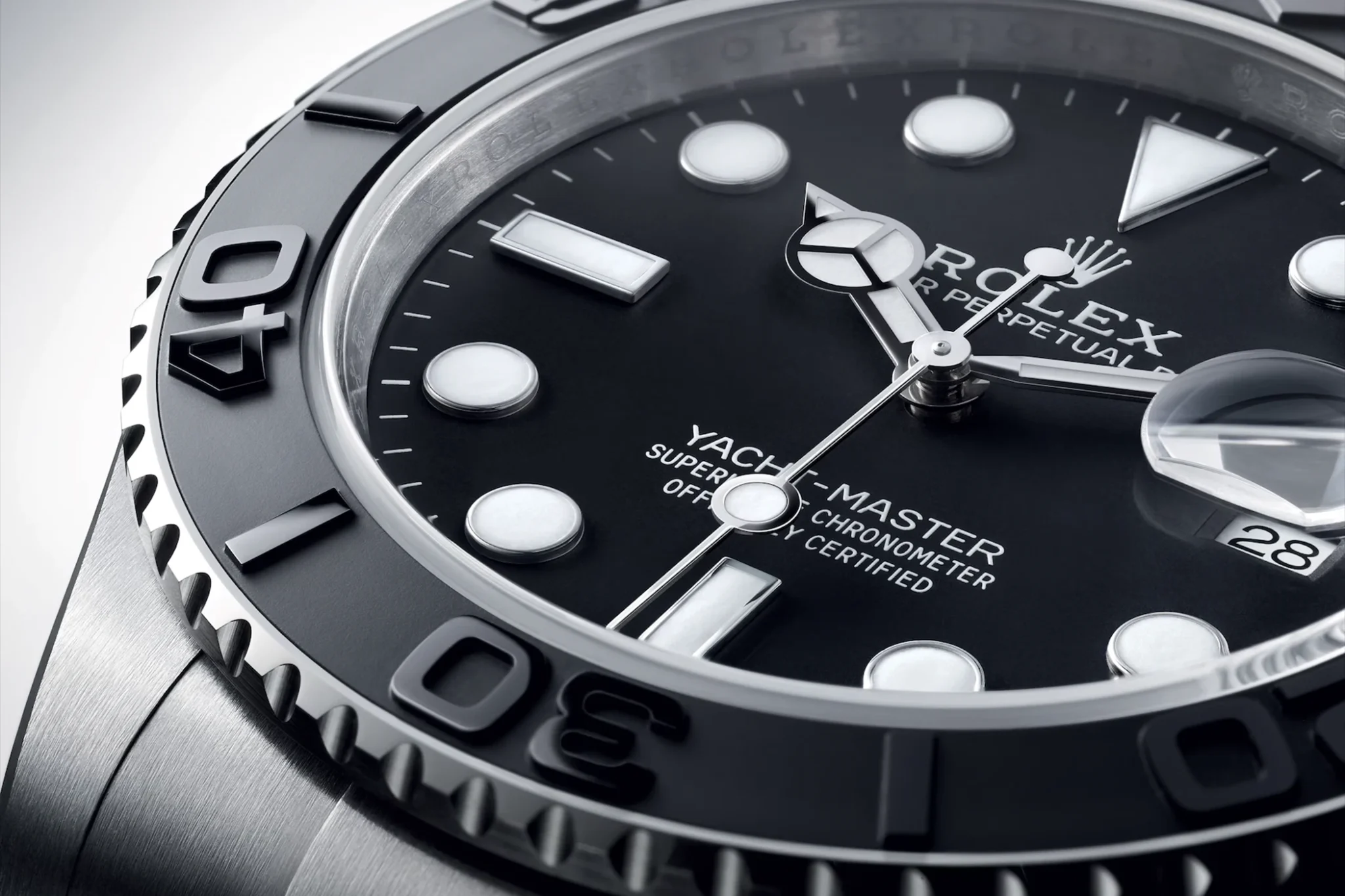
Credit © Rolex/Ulysse Frechelin
Red as trend colour number 1
I find it interesting that my colleagues have stated that red could continue to establish itself as a dial color, perhaps in a wearable burgundy red like Cartier has been doing with the Tank Must since the seventies? It’s all been there before.
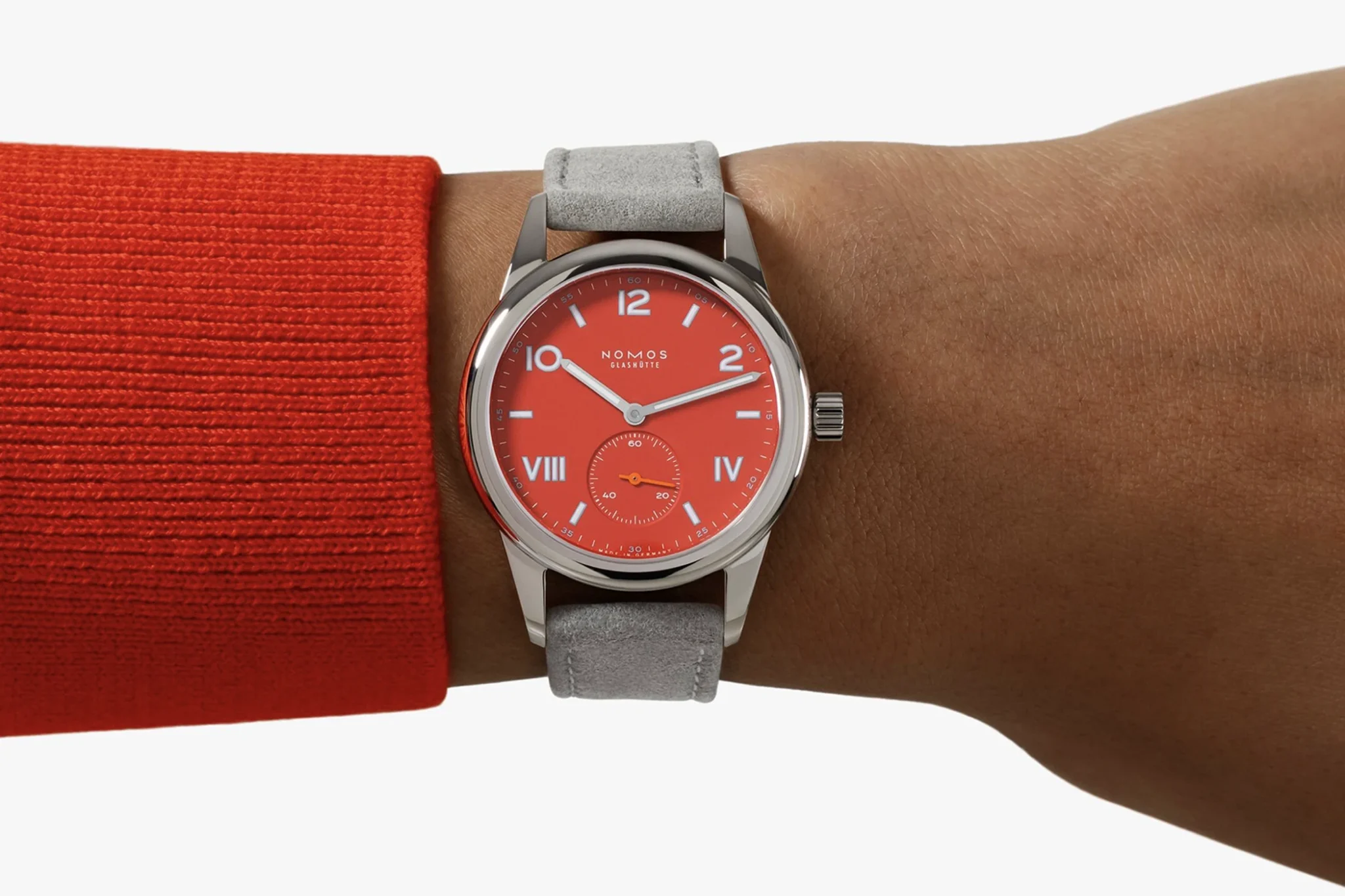
Two more anniversaries! Ten years of Tudor North Flag…
I would like to add two anniversaries here that I completely overlooked (and which I do indeed find exciting) and thank my colleague: 2025 is also the 10th anniversary of the Tudor North Flag. The watch was not particularly popular 10 years ago, but it was the first Tudor watch with its own movement and 70-hour power reserve. Its case was perhaps a little too reminiscent of old Oyster quartz models. But perhaps Tudor customers were simply happier with other models back then? According to my colleague, Tudor could not only reissue the sports watch with an integrated bracelet, but perhaps even reinvent it.
…and 40 years of Pasha by Cartier
I had also overlooked this anniversary: the 40th anniversary of the Cartier Pasha in 2025. What a memorable watch, which few are likely to associate with its famous designer, Gerald Genta.
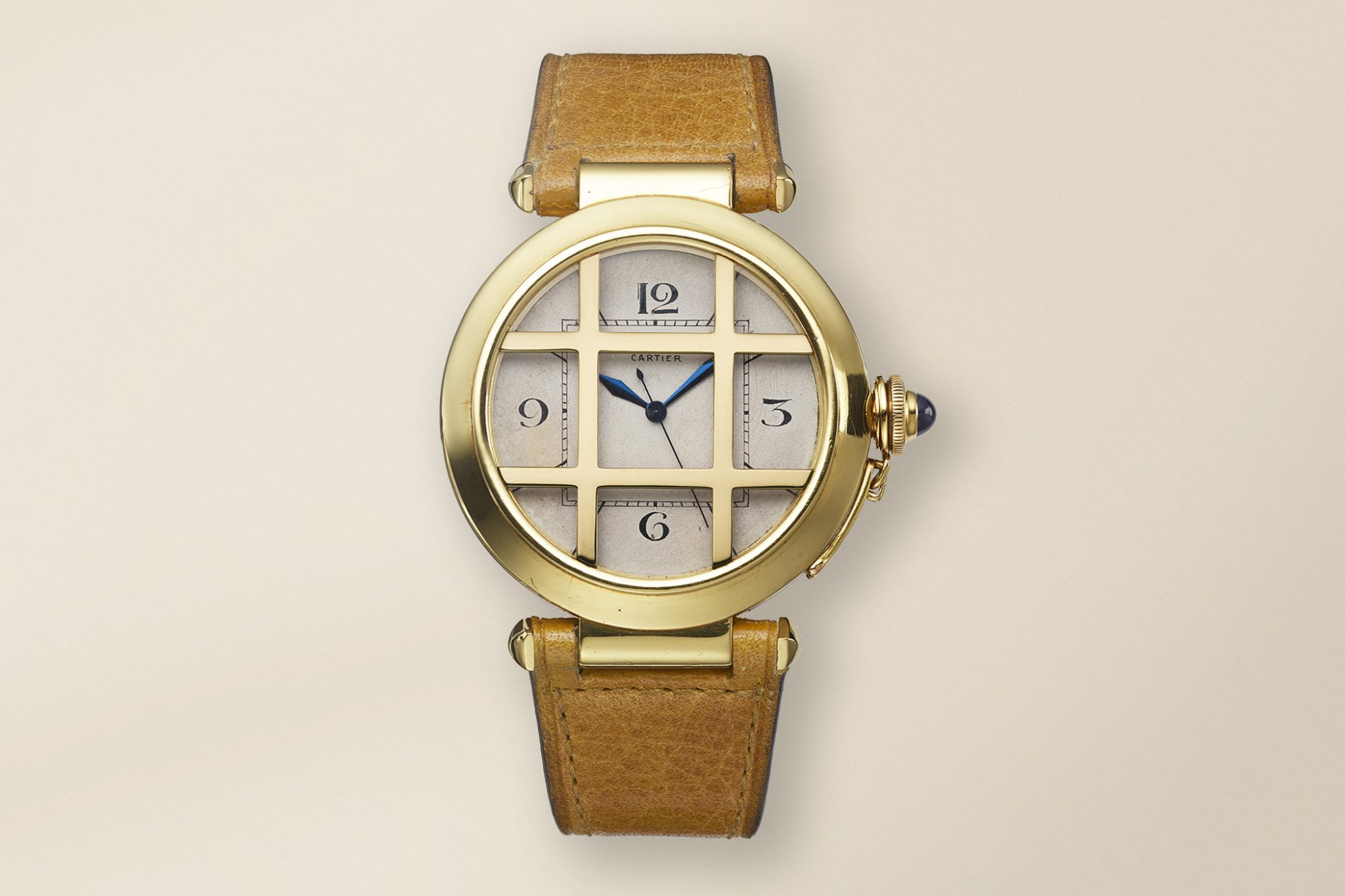
The comeback of stone dials
Watchonista has also observed several interesting trends, which we share here.
We agree with our US colleagues that dials in particular could attract even more attention in the future. The watch face is also the easiest way to create seemingly new watch models without having to touch the case and movement.
The Piaget Andy Warhol Clou de Paris as a role model
Stone dials in particular seem to be on the verge of a major comeback. The new Andy Warhol watch from Piaget is likely to be the signalling device here. Piaget can be considered a master of these dials, which were first used in its ultra-thin Altiplano models in the 1960s. The deep malachite green or lapis lazuli blue on the dials in particular will make it difficult for collectors to pass by such models in 2025. After all, nature always has the best ideas in store. And even some Rolex watches would make a nice comeback!
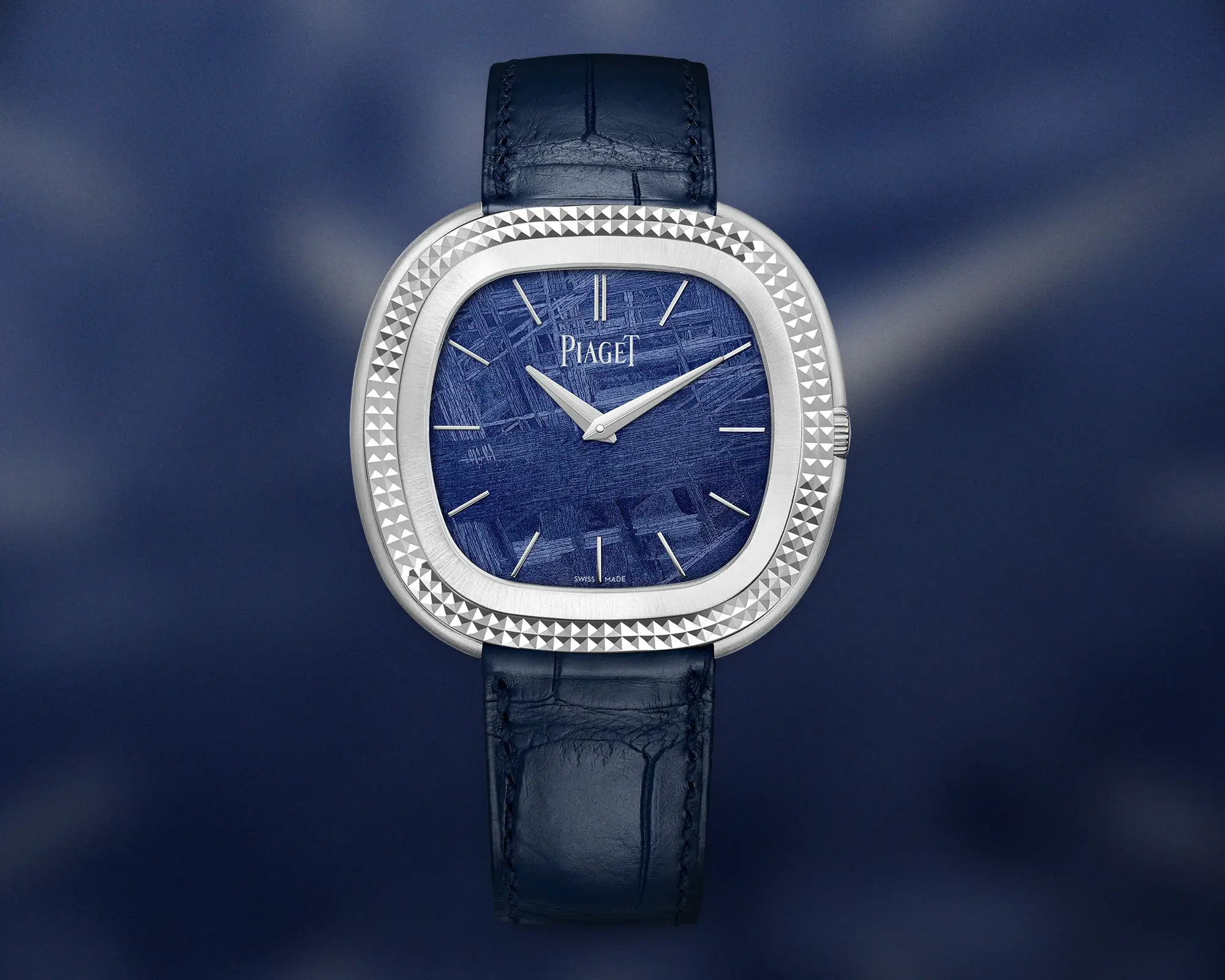
New partnerships – watch collabs with fashion and jewellery houses
We firmly believe that 2025 will see the continuing trend of collaborations both within the watch industry and together with fashion and artists. Watchonista cites the rather unexpected 2024 collab between MB&F and Bulgari as a good example. Perhaps the new shareholder Chanel will now make an effort to become active here too with MB&F?
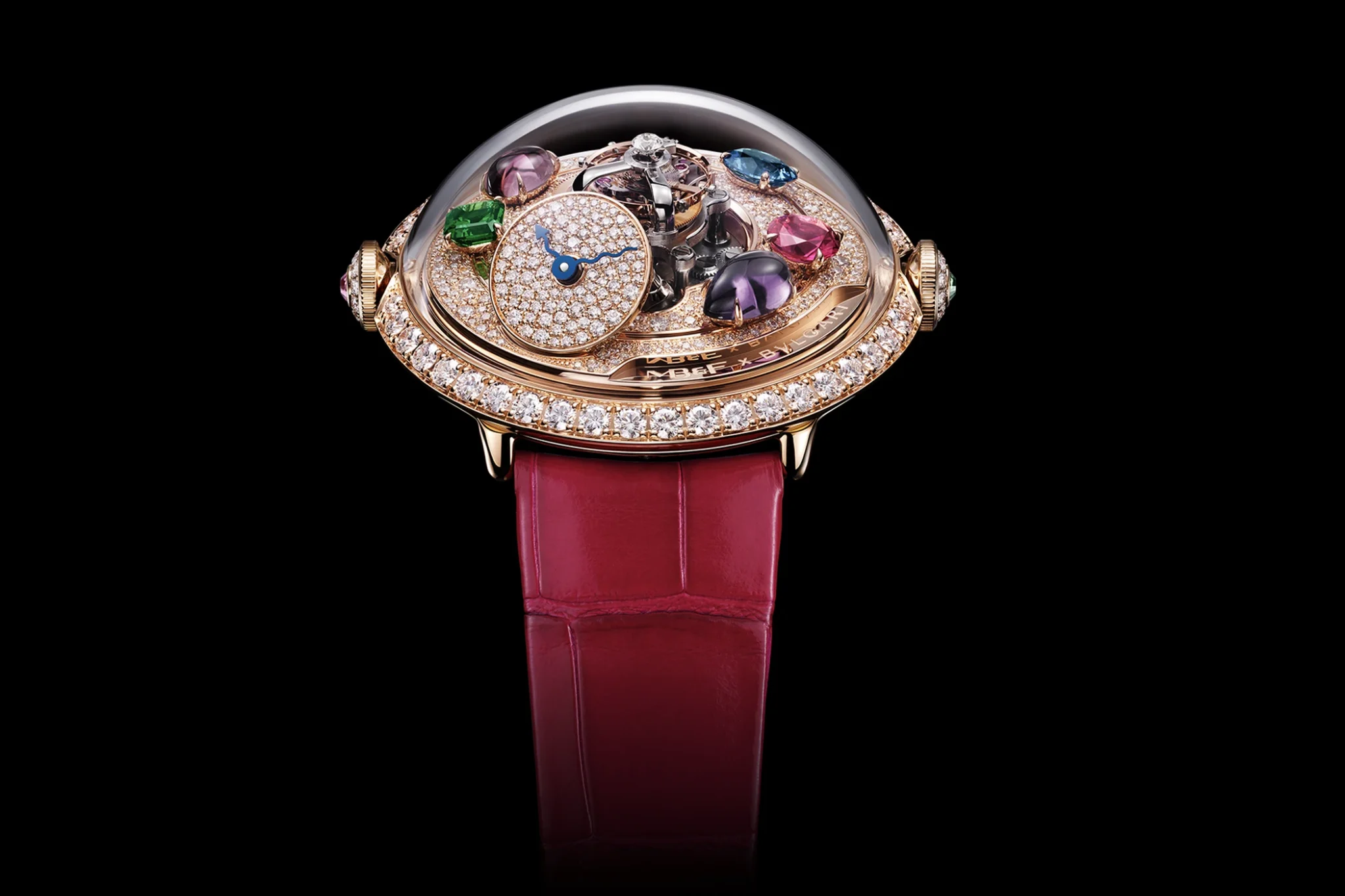
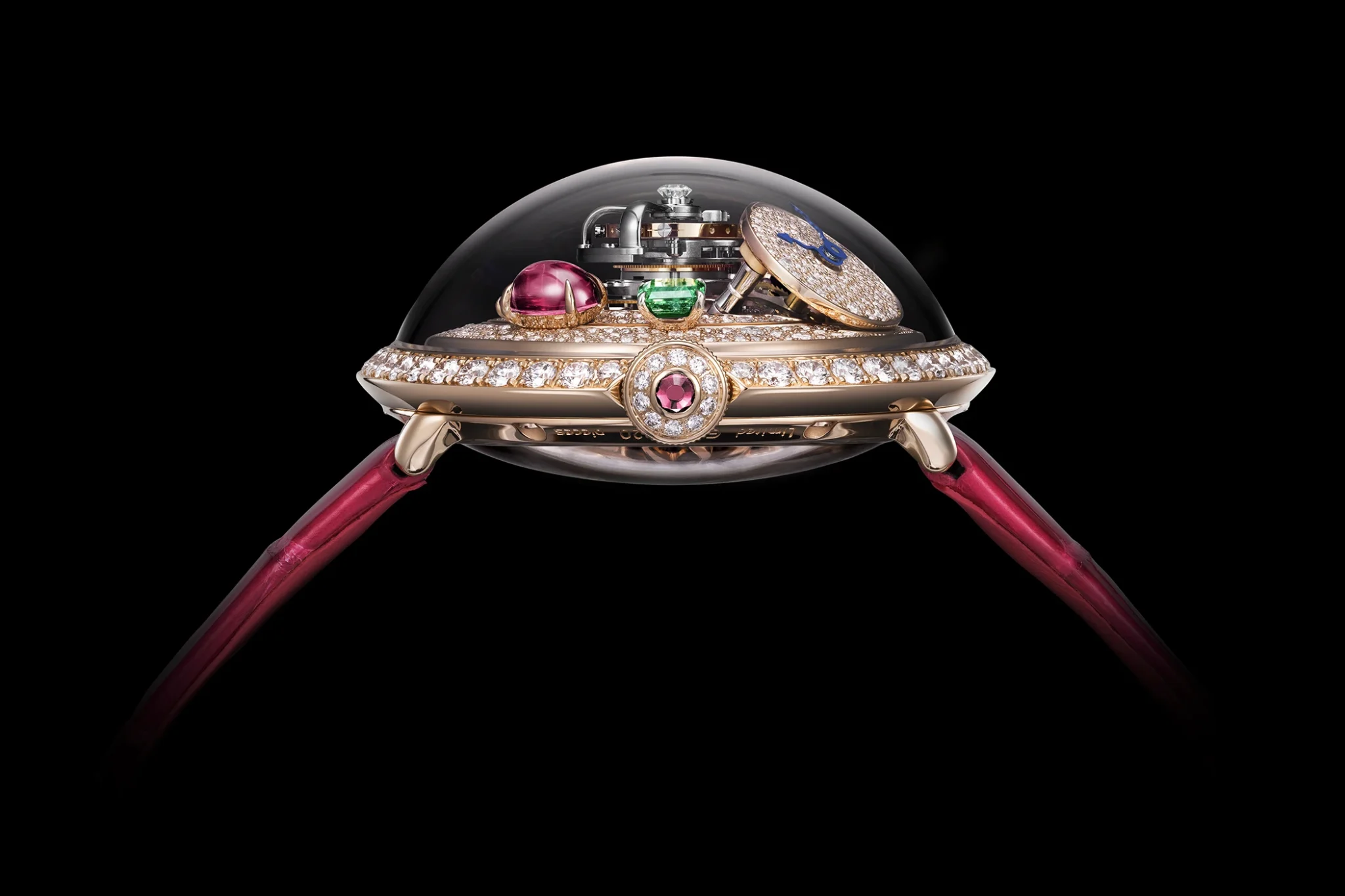
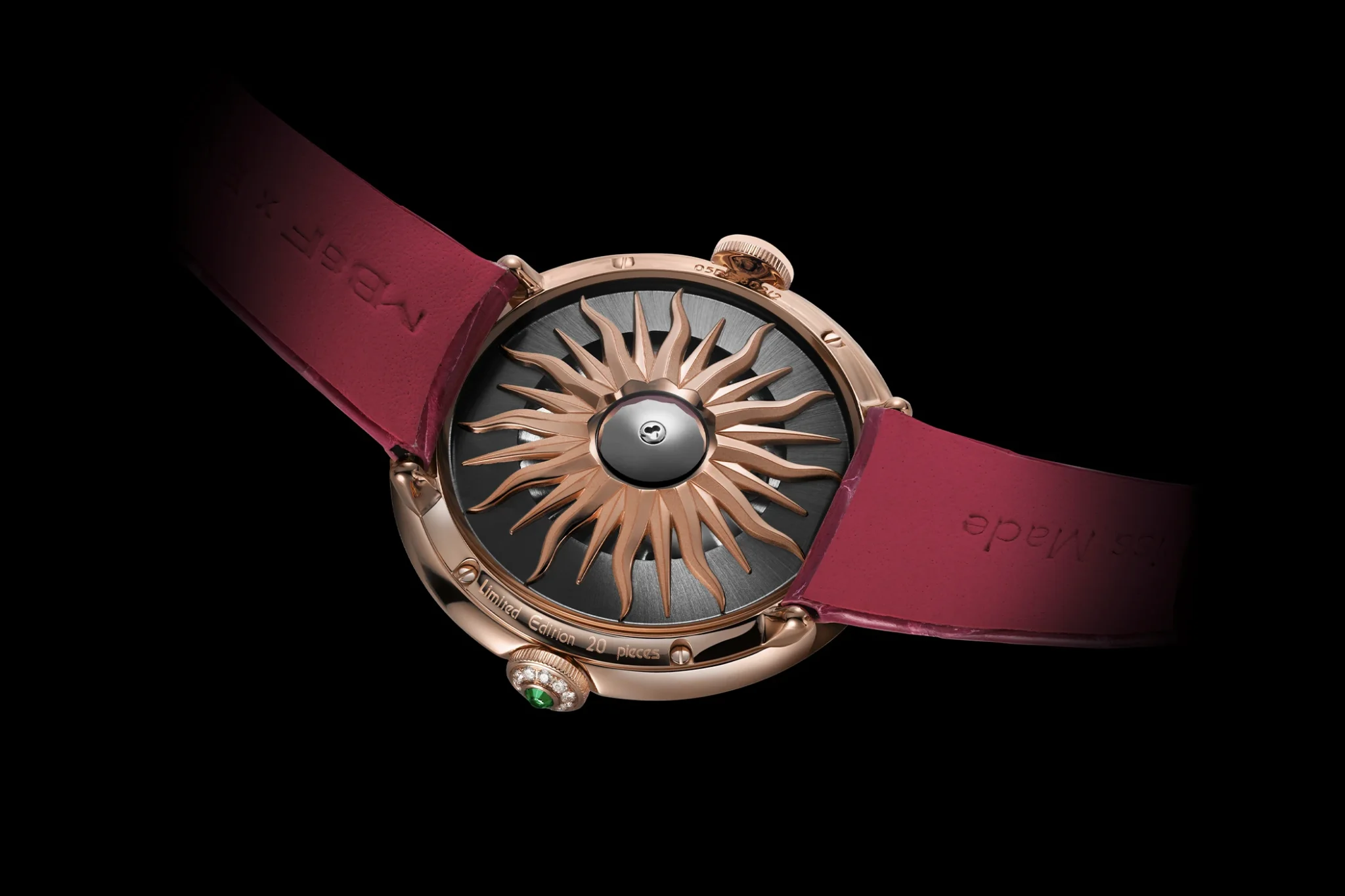
New megalomania: Bold vs. Tiny
Cartier and Audemars Piguet are currently the undisputed trendsetters in the industry. We agree with Watchonista that the increasingly small 34 mm to 36 mm watches will be followed by even smaller models as the trend for vintage-inspired pieces gains momentum. The Royal Oak Mini collection from early 2024 shows how elegant, understated and ultimately cool women in particular find such models. However, we would like Cartier and AP to have the courage to offer women fully-fledged mechanical movements and not push them into the quartz corner, as this simply limits the potential for value appreciation in the future. A role model for us here is Bulgari, which has finally incorporated its super-smart mini-calibre into the Serpenti: powered by the Piccolissimo caliber, currently the smallest mechanical movement in the world, these watches were first launched in 2022. Today, it is the smallest active movement next to the Jaeger-LeCoultre 101.
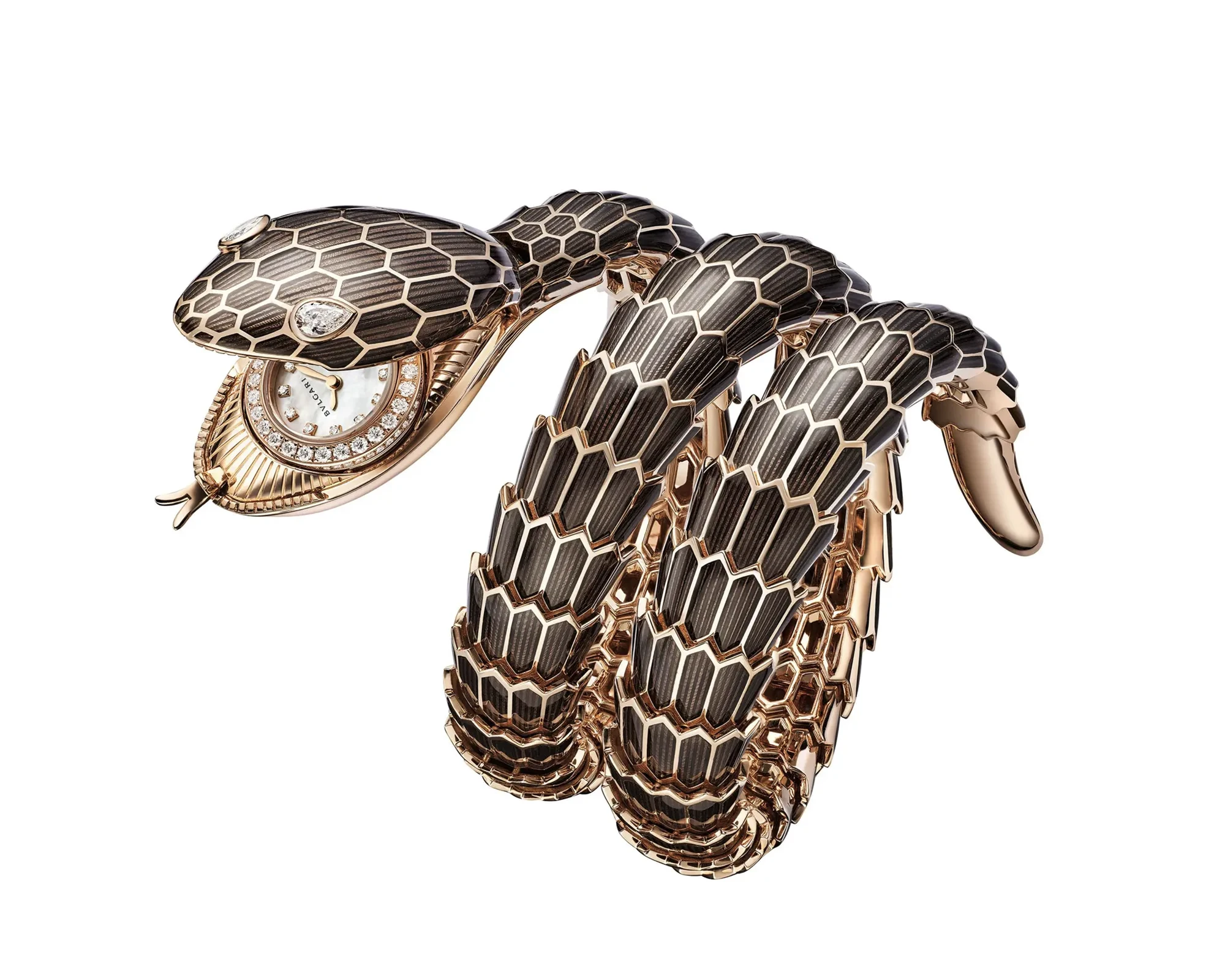
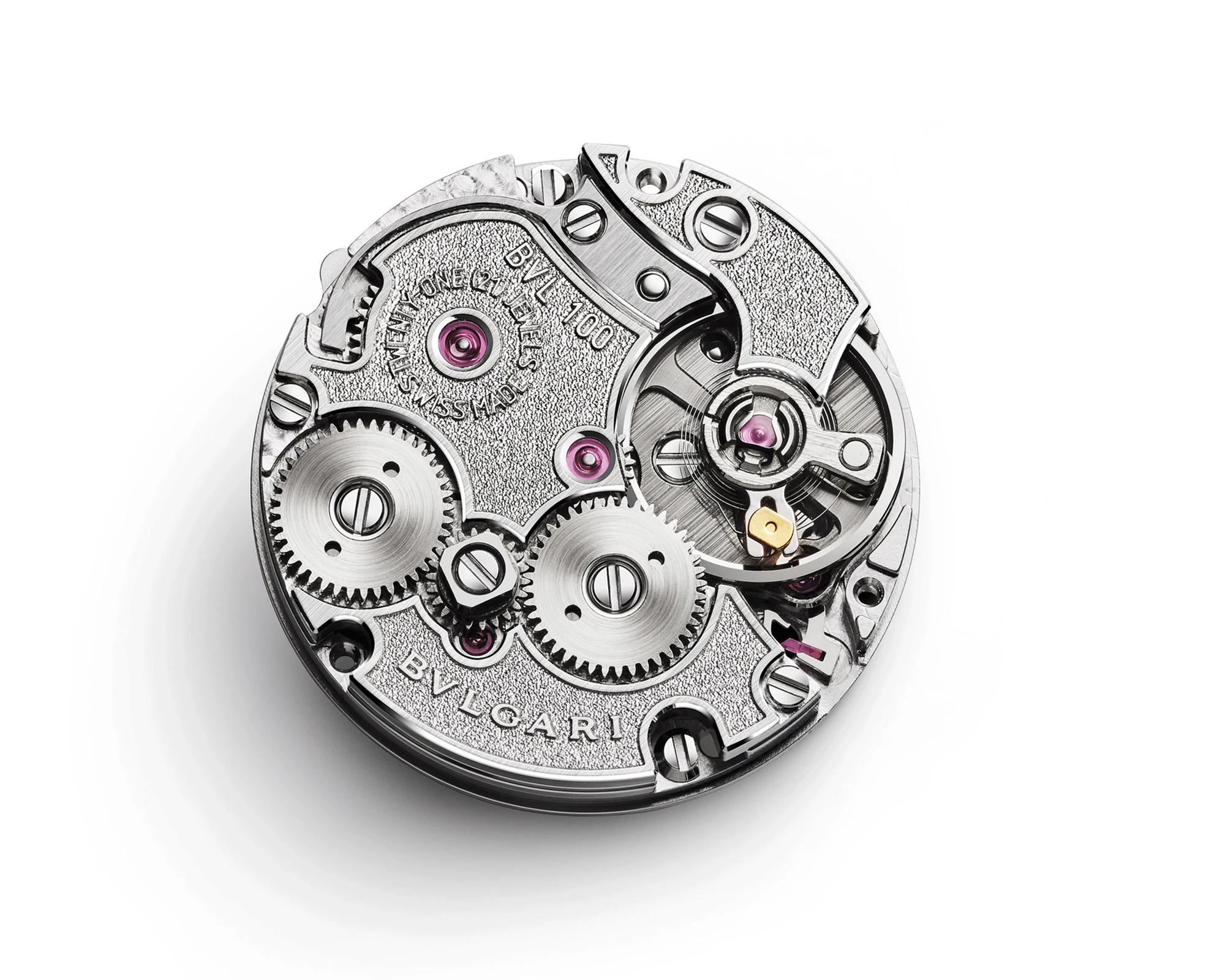
Large statement models
In contrast to the increasing trend towards slenderness and smaller diameters, we will continue to see large statement models such as the Patek Philippe Cubitus with 45 millimetres or the Richard Mille RM 032 with 50 millimetres. The decisive factor for us is: do the movements or the type of watch and the brand history justify this size? Then nothing speaks against the ‘Think Big’ mantra!
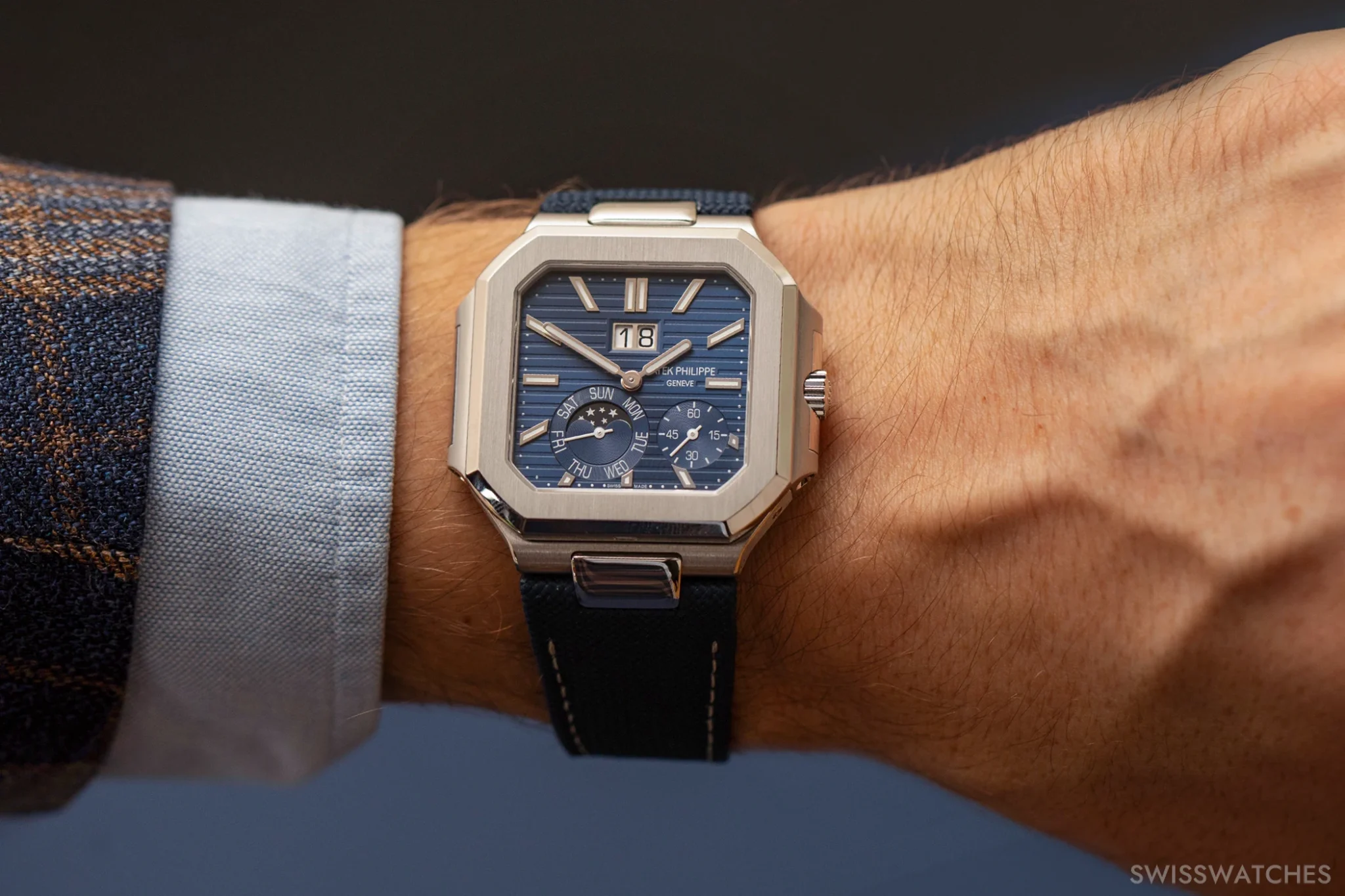
What I would like to see
In conclusion, I would like to see a touch less news and more genuine stories. Less just-another-dial-colour, but more: this or that model reflects the history of our brand. This is what we have done, this is who we are. Because that’s what truly excites us and many collectors: stories that may have been forgotten, but that are worth telling. With this in mind, we look forward to a very special horological year in 2025!
